? AMD Ryzen — Complete List of Processors and APUs
We have compiled the specifications of the AMD Ryzen processors released to date. Here we have compiled the commercial processors, APUs and PRO versions based on the Zen architecture. They are cataloged according to the different families of processors released by the company. We offer all the relevant data, such as cores and threads, frequencies, cache, TDP and RAM memory frequencies that they support.
AMD Ryzen processor families
We have compiled all the AMD Ryzen processor families that have been released. You can see the trade name, architecture, lithography and the name of each family.
In GREEN are the AMD processors released. In ORANGE they are unconfirmed processors and whose information comes from leaks.
AMD Ryzen 5000
These processors are based on the architecture Zen3 and 7nm + lithography from TSMC. These processors are characterized by offering an IPC improvement of 19% over Zen2 architecture processors (Ryzen 3000). They improve in frequencies and focus directly on gaming.
AMD Ryzen 9 5950X
- Cores: 16
- Threads: 32
- Base frequency: 3.4GHz
- Boost Frequency: Up to 4.9GHz
- L2 cache: 8MB
- L3 cache: 64MB
- Overclocking: Yes
- PCI Express version: 4.0
- Heatsink: Not included
- TDP: 105W
- RAM Type: DDR4
- RAM frequency: 3200MHz
- Memory channels: Dual Channel
- Release date: 5/11/2020
AMD Ryzen 9 5900X
- Cores: 12
- Threads: 24
- Base frequency: 3.7GHz
- Boost Frequency: Up to 4.8GHz
- L2 cache: 6MB
- L3 cache: 64MB
- Overclocking: Yes
- PCI Express version: 4.0
- Heatsink: Not included
- TDP: 105W
- RAM Type: DDR4
- RAM frequency: 3200MHz
- Memory channels: Dual Channel
- Release date: 5/11/2020
AMD Ryzen 7 5800X
- Cores: 8
- Threads: 16
- Base frequency: 3.
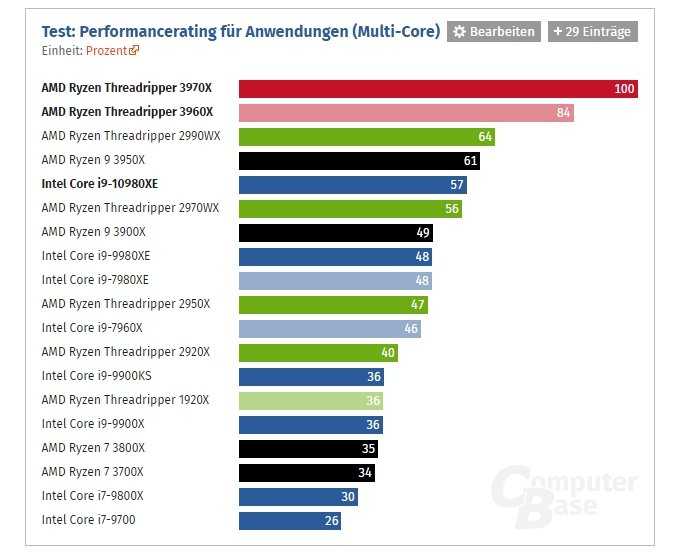 8GHz
8GHz - Boost Frequency: Up to 4.7GHz
- L2 cache: 4MB
- L3 cache: 32MB
- Overclocking: Yes
- PCI Express version: 4.0
- Heatsink: Not included
- TDP: 105W
- RAM Type: DDR4
- RAM frequency: 3200MHz
- Memory channels: Dual Channel
- Release date: 5/11/2020
AMD Ryzen 5 5600X
- Cores: 6
- Threads: 12
- Base frequency: 3.7GHz
- Boost Frequency: Up to 4.6GHz
- L2 cache: 3MB
- L3 cache: 32MB
- Overclocking: Yes
- PCI Express version: 4.0
- Heatsink: Wraith Stealth
- TDP: 655W
- RAM Type: DDR4
- RAM frequency: 3200MHz
- Memory channels: Dual Channel
- Release date: 5/11/2020
AMD Ryzen 4000G APU
These APUs are based on the architecture Zen2 and 7nm lithography from TSMC. They are characterized by integrating a Radeon Vega Mobile iGPU that allows to develop systems without integrated graphics. In addition, this new installment of APUs are characterized by taking a great leap in terms of number of cores.
In addition, this new installment of APUs are characterized by taking a great leap in terms of number of cores.
AMD Ryzen 7 4700G (OEM)
- Cores: 8
- Threads: 16
- Base frequency: 3.6GHz
- Boost Frequency: Up to 4.4GHz
- L1 cache: 512Kb
- L2 cache: 4MB
- L3 cache: 8MB
- iGPU: RX Vega 8 Graphics
- Graphics cores: 8
- IGPU frequency: 2100MHz
- Overclocking: Yes
- PCI Express version: 3.0
- Heatsink: —
- TDP: 65W
- RAM Type: DDR4
- RAM frequency: 3200MHz
- Memory channels: Dual Channel
- Release date: 21/7/2020
AMD Ryzen 7 4700GE (OEM)
- Cores: 8
- Threads: 16
- Base frequency: 3.1GHz
- Boost Frequency: Up to 4.3GHz
- L1 cache: 512Kb
- L2 cache: 4MB
- L3 cache: 8MB
- iGPU: RX Vega 8 Graphics
- Graphics cores: 8
- IGPU frequency: 2000MHz
- Overclocking: Yes
- PCI Express version: 3.
 0
0 - Heatsink: —
- TDP: 35W
- RAM Type: DDR4
- RAM frequency: 3200MHz
- Memory channels: Dual Channel
- Release date: 21/7/2020
AMD Ryzen 5 4600G (NOT OFFICIAL)
- Cores: 6
- Threads: 12
- Base frequency: 3.7GHz
- Boost Frequency: Up to 4.2GHz
- L1 cache: 384Kb
- L2 cache: 3MB
- L3 cache: 8MB
- iGPU: RX Vega 7 Graphics
- Graphics cores: 7
- IGPU frequency: 1900MHz
- Overclocking: Yes
- PCI Express version: 3.0
- Heatsink: —
- TDP: 65W
- RAM Type: DDR4
- RAM frequency: 3200MHz
- Memory channels: Dual Channel
- Release date: 21/7/2020
AMD Ryzen 5 4600GE (OEM)
- Cores: 6
- Threads: 12
- Base frequency: 3.3GHz
- Boost Frequency: Up to 4.2GHz
- L1 cache: 384Kb
- L2 cache: 3MB
- L3 cache: 8MB
- iGPU: RX Vega 7 Graphics
- Graphics cores: 7
- IGPU frequency: 1900MHz
- Overclocking: Yes
- PCI Express version: 3.
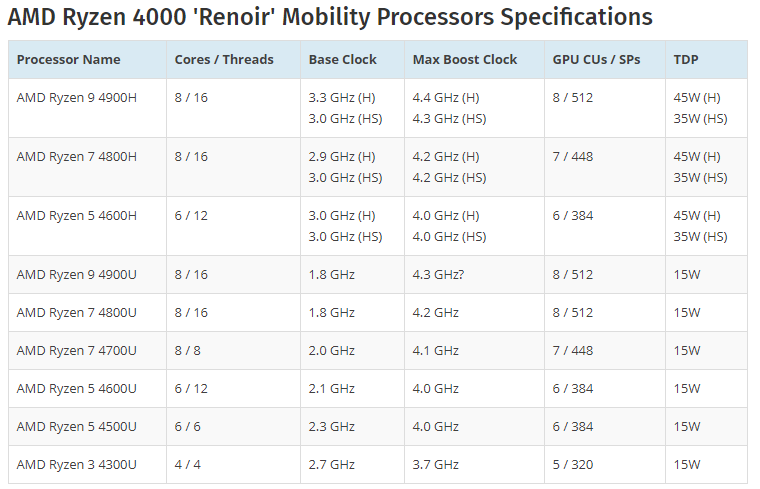 0
0 - Heatsink: —
- TDP: 35W
- RAM Type: DDR4
- RAM frequency: 3200MHz
- Memory channels: Dual Channel
- Release date: 21/7/2020
AMD Ryzen 3 4300G (OEM)
- Cores: 4
- Threads: 8
- Base frequency: 3.8GHz
- Boost Frequency: Up to 4.0GHz
- L1 cache: 256Kb
- L2 cache: 2MB
- L3 cache: 4MB
- iGPU: RX Vega 6 Graphics
- Graphics cores: 6
- IGPU frequency: 1700MHz
- Overclocking: Yes
- PCI Express version: 3.0
- Heatsink: —
- TDP: 65W
- RAM Type: DDR4
- RAM frequency: 3200MHz
- Memory channels: Dual Channel
- Release date: 21/7/2020
AMD Ryzen 3 4300GE (OEM)
- Cores: 4
- Threads: 8
- Base frequency: 3.5GHz
- Boost Frequency: Up to 4.0GHz
- L1 cache: 256Kb
- L2 cache: 2MB
- L3 cache: 4MB
- iGPU: RX Vega 6 Graphics
- Graphics cores: 6
- IGPU frequency: 1700MHz
- Overclocking: Yes
- PCI Express version: 3.
 0
0 - Heatsink: —
- TDP: 35W
- RAM Type: DDR4
- RAM frequency: 3200MHz
- Memory channels: Dual Channel
- Release date: 21/7/2020
AMD Ryzen PRO 4000G APU
These APUs are based on the architecture Zen2 and 7nm lithography from TSMC. They are a version of APUs specially developed for professional systems. Like the Ryzen PRO, these APUs feature advanced security for the professional segment.
AMD Ryzen 7 PRO 4750G (NOT OFFICIAL)
- Cores: 8
- Threads: 16
- Base frequency: —
- Boost Frequency: Up to 4.5GHz
- L1 cache: —
- L2 cache: —
- L3 cache: —
- iGPU: —
- Graphics cores: —
- IGPU Frequency: —
- Overclocking: —
- PCI Express version: —
- Heatsink: —
- TDP: 65W
- RAM Type: DDR4
- RAM Frequency: —
- Memory channels: Dual Channel
- Release date: —
AMD Ryzen 7 PRO 4750GE (NOT OFFICIAL)
- Cores: 8
- Threads: 16
- Base frequency: —
- Boost Frequency: Up to —
- L1 cache: —
- L2 cache: —
- L3 cache: —
- iGPU: —
- Graphics cores: —
- IGPU Frequency: —
- Overclocking: —
- PCI Express version: —
- Heatsink: —
- TDP: 65W
- RAM Type: DDR4
- RAM Frequency: —
- Memory channels: Dual Channel
- Release date: —
AMD Ryzen 5 PRO 4650G (NOT OFFICIAL)
- Cores: 6
- Threads: 12
- Base frequency: —
- Boost Frequency: Up to —
- L1 cache: —
- L2 cache: —
- L3 cache: —
- iGPU: —
- Graphics cores: —
- IGPU Frequency: —
- Overclocking: —
- PCI Express version: —
- Heatsink: —
- TDP: 65W
- RAM Type: DDR4
- RAM Frequency: —
- Memory channels: Dual Channel
- Release date: —
AMD Ryzen 5 PRO 4650GE (NOT OFFICIAL)
- Cores: 6
- Threads: 12
- Base frequency: —
- Boost Frequency: Up to —
- L1 cache: —
- L2 cache: —
- L3 cache: —
- iGPU: —
- Graphics cores: —
- IGPU Frequency: —
- Overclocking: —
- PCI Express version: —
- Heatsink: —
- TDP: 65W
- RAM Type: DDR4
- RAM Frequency: —
- Memory channels: Dual Channel
- Release date: —
AMD Ryzen 3 PRO 4350G (NOT OFFICIAL)
- Cores: 4
- Threads: 8
- Base frequency: —
- Boost Frequency: —
- L1 cache: —
- L2 cache: —
- L3 cache: —
- iGPU: —
- Graphics cores: —
- IGPU Frequency: —
- Overclocking: —
- PCI Express version: —
- Heatsink: —
- TDP: 65W
- RAM Type: DDR4
- RAM Frequency: —
- Memory channels: Dual Channel
- Release date: —
AMD Ryzen 3 PRO 4350GE (NOT OFFICIAL)
- Cores: 4
- Threads: 8
- Base frequency: —
- Boost Frequency: Up to —
- L1 cache: —
- L2 cache: —
- L3 cache: —
- iGPU: —
- Graphics cores: —
- IGPU Frequency: —
- Overclocking: —
- PCI Express version: —
- Heatsink: —
- TDP: 65W
- RAM Type: DDR4
- RAM Frequency: —
- Memory channels: Dual Channel
- Release date: —
AMD Ryzen 3000 Series Processors
These AMD processors are based on the zen2 architecture and TSMC 7nm lithograph. Its main feature is a big leap in performance over previous generations. In addition to increasing performance, the consumption of the processors is significantly improved.
Its main feature is a big leap in performance over previous generations. In addition to increasing performance, the consumption of the processors is significantly improved.
AMD Ryzen 9 3950X
- Cores: 16
- Threads: 32
- Base frequency: 3.5GHz
- Boost Frequency: Up to 4.7GHz
- L1 cache: 1MB
- L2 cache: 8MB
- L3 cache: 64MB
- Overclocking: Yes
- PCI Express version: 4.0
- Heatsink: Not included. Liquid cooling is recommended
- TDP: 105W
- RAM Type: DDR4
- RAM frequency: 3200MHz
- Memory channels: Dual Channel
- Release Date: Nov 14, 2019
Sales
AMD Ryzen 9 3950x Retail — (AM4 / 16 Core / 4.70GHz / 70MB / 105W) — 100-100000051WOF
- Base Clock: 3.5GHz
- Max Boost Clock: Up to 4.7GHz
- Total L1 cache: 1MB
AMD Ryzen 9 3900XT
- Cores: 12
- Threads: 24
- Base frequency: 3.
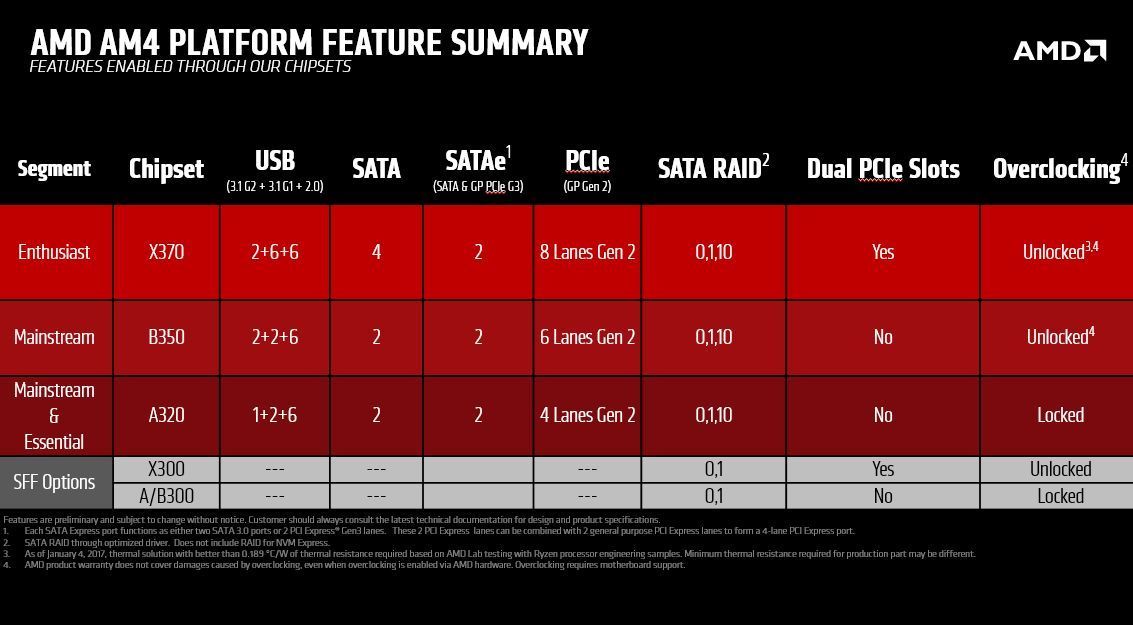 8GHz
8GHz - Boost Frequency: Up to 4.7GHz
- L1 cache: 768KB
- L2 cache: 6MB
- L3 cache: 64MB
- Overclocking: Yes
- PCI Express version: 4.0
- Heatsink: Wraith Prism with RGB
- TDP: 105W
- RAM Type: DDR4
- RAM frequency: 3200MHz
- Memory channels: Dual Channel
- Release Date: July 7, 2020
AMD Ryzen 9 3900X
- Cores: 12
- Threads: 24
- Base frequency: 4.1GHz
- Boost Frequency: Up to 4.8GHz
- L1 cache: 768KB
- L2 cache: 6MB
- L3 cache: 64MB
- Overclocking: Yes
- PCI Express version: 4.0
- Heatsink: —
- TDP: —
- RAM Type: DDR4
- RAM frequency: 3200MHz
- Memory channels: Dual Channel
- Release Date: July 7, 2019
AMD Ryzen 7 3800XT
- Cores: 8
- Threads: 16
- Base frequency: 3.9GHz
- Boost Frequency: Up to 4.7GHz
- L1 cache: 512KB
- L2 cache: 4MB
- L3 cache: 32MB
- Overclocking: Yes
- PCI Express version: 4.
 0
0 - Heatsink: —
- TDP: 105W
- RAM Type: DDR4
- RAM frequency: 3200MHz
- Memory channels: Dual Channel
- Release Date: July 7, 2020
AMD Ryzen 7 3800X
- Cores: 8
- Threads: 16
- Base frequency: 3.9GHz
- Boost Frequency: Up to 4.5GHz
- L1 cache: 512KB
- L2 cache: 4MB
- L3 cache: 32MB
- Overclocking: Yes
- PCI Express version: 4.0
- Heatsink: Wraith Prism with RGB
- TDP: 105W
- RAM Type: DDR4
- RAM frequency: 3200MHz
- Memory channels: Dual Channel
- Release Date: July 7, 2019
AMD Ryzen 7 3800X, Processor with Wraith Prism Heatsink (32 Mb, 8 Cores, 4.5 Ghz Speed, 105 W)
- DT RYZEN 7 3800X 65W AM4 BOX WW GDP SR4
- It is from the AMD brand
- It is of great quality
AMD Ryzen 7 3700X
- Cores: 8
- Threads: 16
- Base frequency: 3.6GHz
- Boost Frequency: Up to 4.
 4GHz
4GHz - L1 cache: 512KB
- L2 cache: 4MB
- L3 cache: 32MB
- Overclocking: Yes
- PCI Express version: 4.0
- Heatsink: Wraith Prism with RGB
- TDP: 65W
- RAM Type: DDR4
- RAM frequency: 3200MHz
- Memory channels: Dual Channel
- Release Date: July 7, 2019
Sales
AMD Ryzen 7 3700X, Wraith Prism Heatsink Processor (36MB, 8 Cores, 4.4GHz Speed, 65W)
- System memory specification: 3200MHz; system memory type: DDR4; memory channels: 2
- Max Boost Clock: 4.4GHz
- CMOS: TSMC 7nm FinFET
AMD Ryzen 5 3600XT
- Cores: 6
- Threads: 12
- Base frequency: 3.8GHz
- Boost Frequency: Up to 4.5GHz
- L1 cache: 384KB
- L2 cache: 3MB
- L3 cache: 32MB
- Overclocking: Yes
- PCI Express version: 4.0
- Heatsink: —
- TDP: 95W
- RAM Type: DDR4
- RAM frequency: 3200MHz
- Memory channels: Dual Channel
- Release Date: July 7, 2020
AMD Ryzen 5 3600X
- Cores: 6
- Threads: 12
- Base frequency: 3.
 8GHz
8GHz - Boost Frequency: Up to 4.4GHz
- L1 cache: 384KB
- L2 cache: 3MB
- L3 cache: 32MB
- Overclocking: Yes
- PCI Express version: 4.0
- Heatsink: Wraith Spire
- TDP: 95W
- RAM Type: DDR4
- RAM frequency: 3200MHz
- Memory channels: Dual Channel
- Release Date: July 7, 2019
AMD Ryzen 5 3600X — Processor with Wraith Spire Fan, Temp. max .: 95 ° C
- DT RYZEN 5 3600X 95W AM4 BOX WW GDP SR2a
- It is from the AMD brand
- It is of great quality
AMD Ryzen 5 3600
- Cores: 6
- Threads: 12
- Base frequency: 3.6GHz
- Boost Frequency: Up to 4.2GHz
- L1 cache: 384KB
- L2 cache: 3MB
- L3 cache: 32MB
- Overclocking: Yes
- PCI Express version: 4.0
- Heatsink: Wraith Stealth
- TDP: 65W
- RAM Type: DDR4
- RAM frequency: 3200MHz
- Memory channels: Dual Channel
- Release Date: July 7, 2019
Sales
AMD Ryzen 5 3600 — Wraith Stealth Heatsink Processor (35MB, 6-Core, 4. 2GHz, 65W)
2GHz, 65W)
- Default TDP / TDP: 65W
- Number of CPU cores: 6
- Max Boost Clock: Up to 4.2GHz
- Thermal Solution (MPK): Wraith Stealth
- PCI Express version: PCIe 4.0 x16
AMD Ryzen 5 3500X
- Cores: 6
- Threads: 6
- Base frequency: 3.6GHz
- Boost Frequency: Up to 4.1GHz
- L1 cache: 384KB
- L2 cache: 3MB
- L3 cache: 32MB
- Overclocking: Yes
- PCI Express version: 4.0
- Heatsink: Wraith Stealth
- TDP: 65W
- RAM Type: DDR4
- RAM frequency: 3200MHz
- Memory channels: Dual Channel
- Release Date: September 24, 2019
AMD Ryzen 3 3300X
- Cores: 4
- Threads: 8
- Base frequency: 3.8GHz
- Boost Frequency: Up to 4.3GHz
- L1 cache: 256KB
- L2 cache: 2MB
- L3 cache: 16MB
- Overclocking: Yes
- PCI Express version: 4.0
- Heatsink: Wraith Stealth
- TDP: 65W
- RAM Type: DDR4
- RAM frequency: 3200MHz
- Memory channels: Dual Channel
- Release Date: May 21, 2020
AMD Ryzen 3 3100
- Cores: 4
- Threads: 8
- Base frequency: 3.
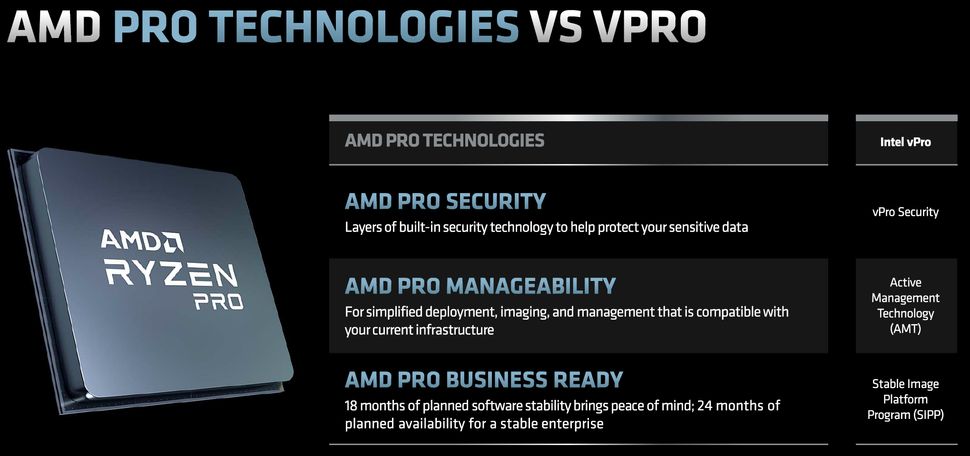 6GHz
6GHz - Boost Frequency: Up to 3.9GHz
- L1 cache: 256KB
- L2 cache: 2MB
- L3 cache: 16MB
- Overclocking: Yes
- PCI Express version: 4.0
- Heatsink: Wraith Stealth
- TDP: 65W
- RAM Type: DDR4
- RAM frequency: 3200MHz
- Memory channels: Dual Channel
- Release Date: May 21, 2020
AMD Ryzen 3000G APU
These processors are based on the Zen + architecture and 12nm lithograph by GlobalFoundries. They are characterized by integrating a Radeon Vega Mobile iGPU that allows to develop systems without integrated graphics.
AMD Ryzen 5 3400G
- Cores: 4
- Threads: 8
- Base frequency: 3.7GHz
- Boost Frequency: Up to 4.2GHz
- L1 cache: 384KB
- L2 cache: 2MB
- L3 cache: 4MB
- iGPU: RX Vega 11 Graphics
- Graphics cores: 11
- IGPU frequency: 1400MHz
- Overclocking: Yes
- PCI Express version: 3.
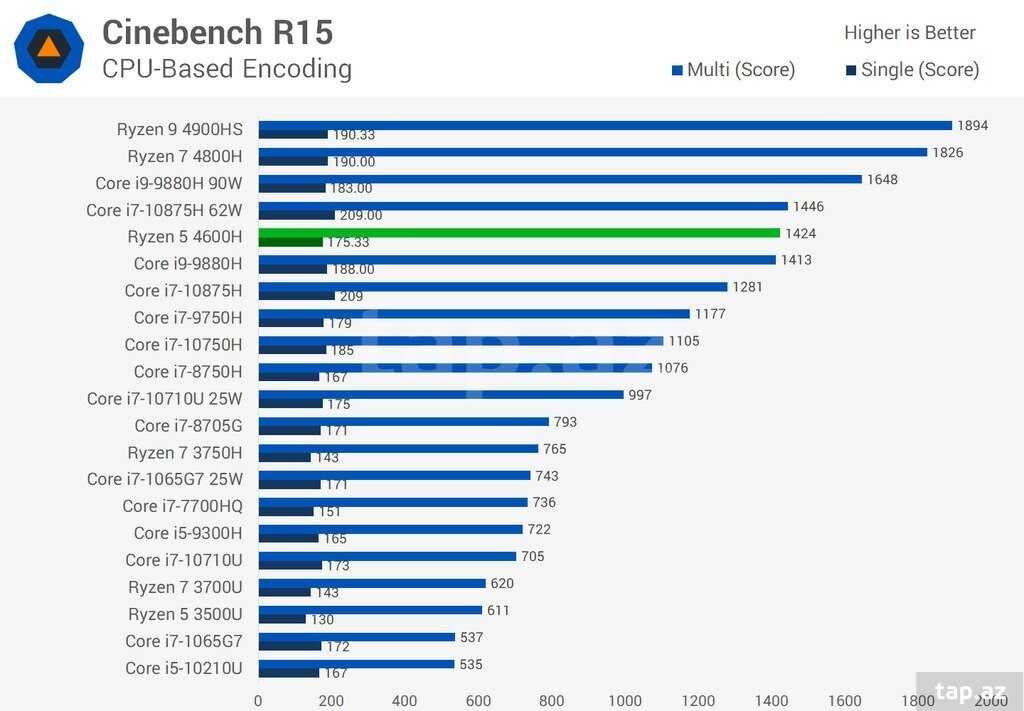 0
0 - Heatsink: Wraith Spire
- TDP: 65W
- RAM Type: DDR4
- RAM frequency: 2933MHz
- Memory channels: Dual Channel
- Release Date: July 7, 2019
AMD Ryzen 5 3400G, Processor with Wraith Spire Heatsink (4 MB, 4 Cores, 4.2 GHz Speed, 65W)
- Default tdp / tdp: 65w
- Number of CPU cores: 4
- Max boost clock: 42ghz
- Thermal solution: wraith spire
- Pci express version: pcie 30 x8
AMD Ryzen 3 3200G
- Cores: 4
- Threads: 4
- Base frequency: 3.6GHz
- Boost Frequency: Up to 4.0GHz
- L1 cache: 384KB
- L2 cache: 2MB
- L3 cache: 4MB
- iGPU: RX Vega 8 Graphics
- Graphics cores: 8
- IGPU frequency: 1250MHz
- Overclocking: Yes
- PCI Express version: 3.0
- Heatsink: Wraith Stealth
- TDP: 65W
- RAM Type: DDR4
- RAM frequency: 2933MHz
- Memory channels: Dual Channel
- Release Date: July 7, 2019
Sales
AMD 3200G Ryzen 3, Processor with Wraith Stealth Heatsink (4 MB, 4 Cores, 4 GHz Speed, 65W)
- Default tdp / tdp: 65w
- Number of CPU cores: 4
- Max boost clock: 4ghz
- Thermal solution: wraith stealth
- Pci express version: pcie 30 x8
AMD Ryzen PRO 3000 Series Processors
These processors are zen2 architecture and are based on the TSMC 7nm lithograph. These processors are characterized by integrating special business security technologies. They are intended for administration, reliability, and security.
These processors are characterized by integrating special business security technologies. They are intended for administration, reliability, and security.
AMD Ryzen 9 PRO 3900
- Cores: 12
- Threads: 24
- Base frequency: 3.1GHz
- Boost Frequency: Up to 4.3GHz
- L1 cache: 768KB
- L2 cache: 6MB
- L3 cache: 64MB
- Overclocking: Yes
- PCI Express version: 4.0
- Heatsink: No
- TDP: 65W
- RAM Type: DDR4
- RAM frequency: 3200MHz
- Memory channels: Dual Channel
- Release Date: September 30, 2019
AMD Ryzen 7 PRO 3700
- Cores: 8
- Threads: 16
- Base frequency: 3.6GHz
- Boost Frequency: Up to 4.4GHz
- L1 cache: 512KB
- L2 cache: 4MB
- L3 cache: 32MB
- Overclocking: Yes
- PCI Express version: 4.0
- Heatsink: No
- TDP: 65W
- RAM Type: DDR4
- RAM frequency: 3200MHz
- Memory channels: Dual Channel
- Release Date: September 30, 2019
AMD Ryzen 5 PRO 3600
- Cores: 6
- Threads: 12
- Base frequency: 3.
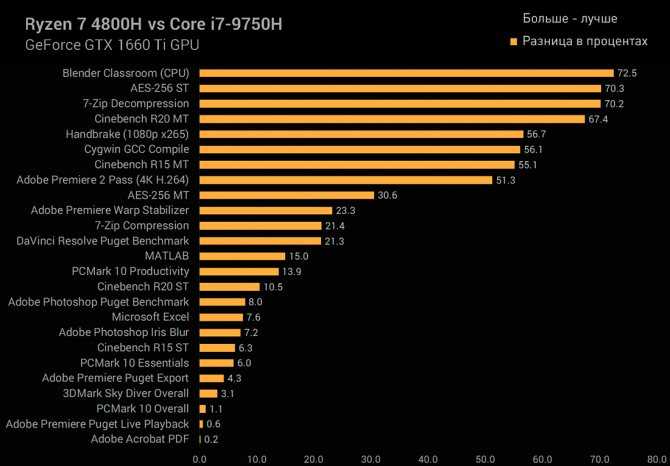 6GHz
6GHz - Boost Frequency: Up to 4.2GHz
- L1 cache: 384KB
- L2 cache: 3MB
- L3 cache: 32MB
- Overclocking: Yes
- PCI Express version: 4.0
- Heatsink: No
- TDP: 65W
- RAM Type: DDR4
- RAM frequency: 3200MHz
- Memory channels: Dual Channel
- Release Date: September 30, 2019
AMD Ryzen PRO 3000G APU
These APUs are based on the architecture Zen + and 12nm lithography from GlobalFoundries. They are a version of APUs specially developed for professional systems. Like the Ryzen PRO, these APUs feature advanced security for the professional segment.
AMD Ryzen 5 PRO 3400G
- Cores: 4
- Threads: 8
- Base frequency: 3.7GHz
- Boost Frequency: Up to 4.2GHz
- L1 cache: 384KB
- L2 cache: 2MB
- L3 cache: 4MB
- iGPU: RX Vega 11 Graphics
- Graphics cores: 11
- IGPU frequency: 1400MHz
- Overclocking: Yes
- PCI Express version: 3.
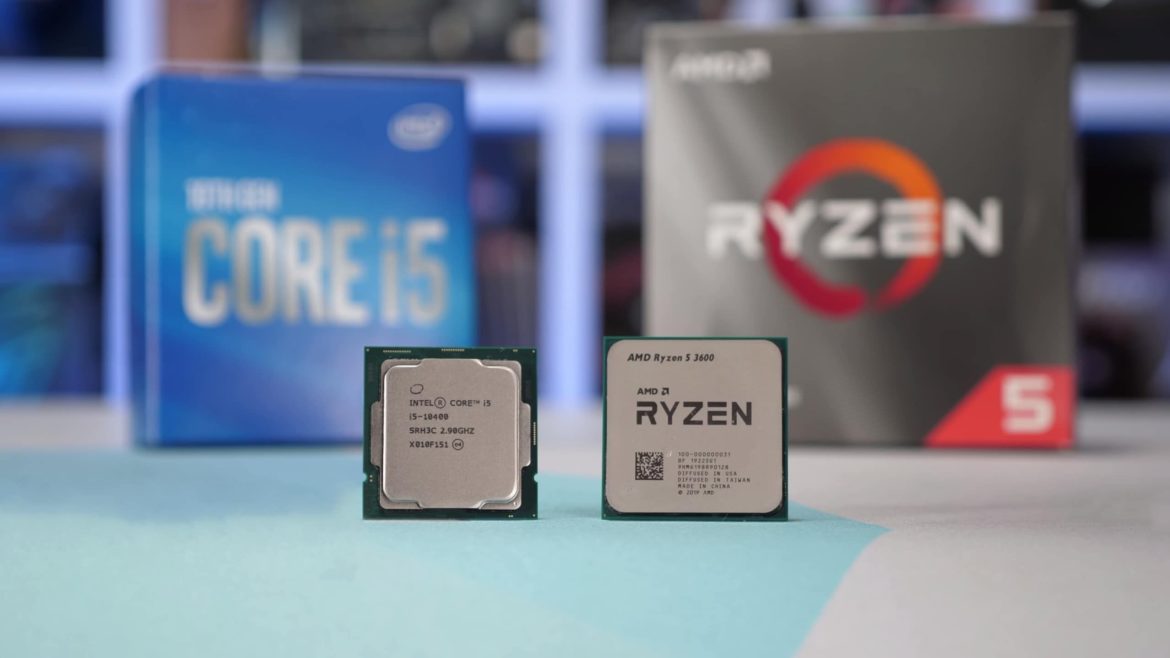 0
0 - Heatsink: —
- TDP: 65W
- RAM Type: DDR4
- RAM frequency: 2933MHz
- Memory channels: Dual Channel
- Release Date: September 30, 2019
AMD Ryzen 5 PRO 3400GE
- Cores: 4
- Threads: 8
- Base frequency: 3.3GHz
- Boost Frequency: Up to 4.0GHz
- L1 cache: 384KB
- L2 cache: 2MB
- L3 cache: 4MB
- iGPU: RX Vega 11 Graphics
- Graphics cores: 11
- IGPU frequency: 1300MHz
- Overclocking: Yes
- PCI Express version: 3.0
- Heatsink: —
- TDP: 35W
- RAM Type: DDR4
- RAM frequency: 2933MHz
- Memory channels: Dual Channel
- Release Date: September 30, 2019
AMD Ryzen 3 PRO 3200G
- Cores: 4
- Threads: 4
- Base frequency: 3.6GHz
- Boost Frequency: Up to 4.0GHz
- L1 cache: 384KB
- L2 cache: 2MB
- L3 cache: 4MB
- iGPU: RX Vega 8 Graphics
- Graphics cores: 8
- IGPU frequency: 1250MHz
- Overclocking: Yes
- PCI Express version: 3.
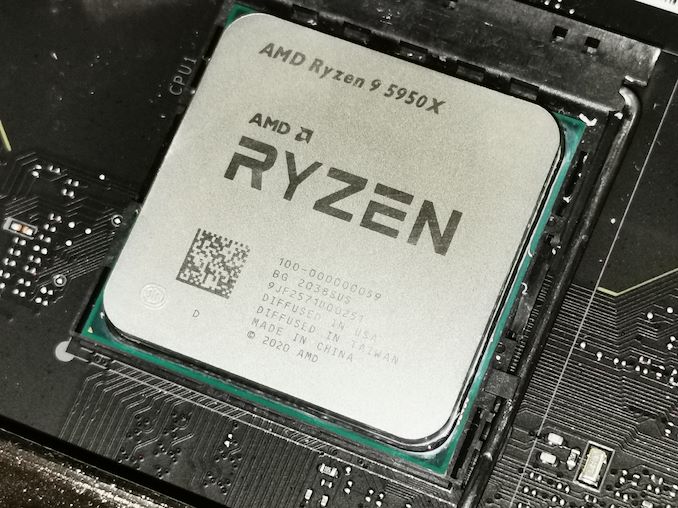 0
0 - Heatsink: —
- TDP: 65W
- RAM Type: DDR4
- RAM frequency: 2933MHz
- Memory channels: Dual Channel
- Release Date: September 30, 2019
AMD Ryzen 3 PRO 3200GE
- Cores: 4
- Threads: 4
- Base frequency: 3.3GHz
- Boost Frequency: Up to 3.8GHz
- L1 cache: 384KB
- L2 cache: 2MB
- L3 cache: 4MB
- iGPU: RX Vega 8 Graphics
- Graphics cores: 8
- IGPU frequency: 1200MHz
- Overclocking: Yes
- PCI Express version: 3.0
- Heatsink: —
- TDP: 35W
- RAM Type: DDR4
- RAM frequency: 2933MHz
- Memory channels: Dual Channel
- Release Date: September 30, 2019
AMD Ryzen 2000 Series Processors
These Ryzen 2000 processors are based on the Zen + architecture and 12nm lithograph by GlobalFoundries. The lithography improvement over the company’s early processors, in addition to correcting some problems.
AMD Ryzen 7 2700X
- Cores: 8
- Threads: 16
- Base frequency: 3.7GHz
- Boost Frequency: Up to 4.3GHz
- L1 cache: 768KB
- L2 cache: 4MB
- L3 cache: 16MB
- Overclocking: Yes
- PCI Express version: 3.0
- Heatsink: Wraith Prism with RGB
- TDP: 105W
- RAM Type: DDR4
- RAM frequency: 2933MHz
- Memory channels: Dual Channel
- Release Date: April 19, 2018
AMD Ryzen 7 2700X — Wraith Prism Heatsink Processor (16MB, 8 Core, 4.35GhZ Speed, 105W)
- Default TDP / TDP: 105 W
- Number of CPU cores: 8
- Max Boost Clock: 4.3 GHz
- Supported Technologies: AMD StoreMI Technology, AMD SenseMI Technology, AMD Ryzen Master Utility, AMD Ryzen VR-Ready Premium
- OS Compatible: Windows 10 64-bit edition, RHEL x86 64-bit edition, Ubuntu x86 64-bit edition (Operating system (OS) support will vary by manufacturer)
AMD Ryzen 7 2700
- Cores: 8
- Threads: 16
- Base frequency: 3.
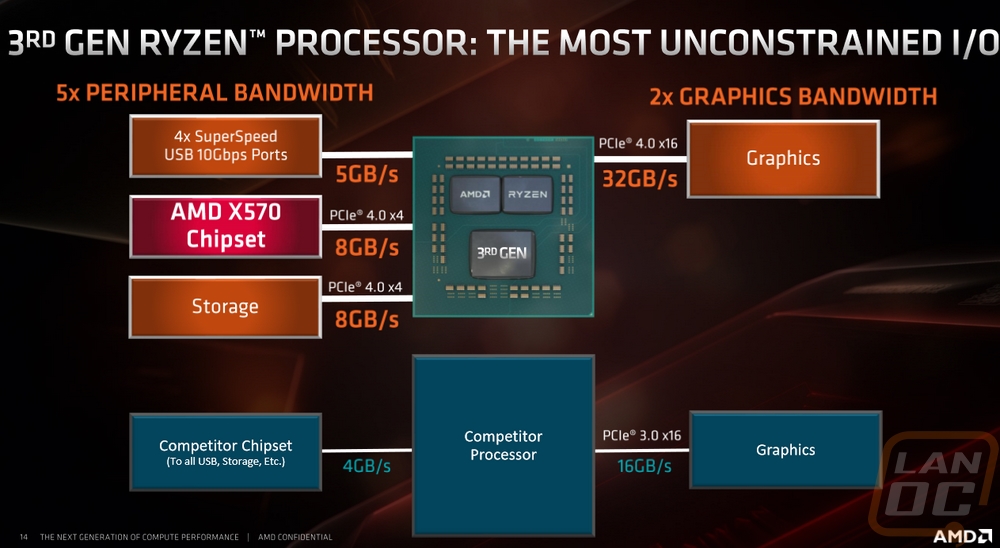 2GHz
2GHz - Boost Frequency: Up to 4.1GHz
- L1 cache: 768KB
- L2 cache: 4MB
- L3 cache: 16MB
- Overclocking: Yes
- PCI Express version: 3.0
- Heatsink: Wraith Spire with RGB
- TDP: 65W
- RAM Type: DDR4
- RAM frequency: 2933MHz
- Memory channels: Dual Channel
- Release Date: April 19, 2018
AMD Ryzen 7 2700 — Wraith Spire LED Heatsink Processor (20MB, 8 Core, 4.10GhZ Speed, 65W)
- Power: 65W
- 8 nuclei
- Frequency: 4100 MhZ
AMD Ryzen 7 2700X 50th Anniversary
- Cores: 8
- Threads: 16
- Base frequency: 3.7GHz
- Boost Frequency: Up to 4.35GHz
- L1 cache: 768KB
- L2 cache: 4MB
- L3 cache: 16MB
- Overclocking: Yes
- PCI Express version: 3.0
- Heatsink: Wraith Spire with RGB
- TDP: 105W
- RAM Type: DDR4
- RAM frequency: 2933MHz
- Memory channels: Dual Channel
- Release Date: April 29, 2019
AMD Ryzen 7 2700E
- Cores: 8
- Threads: 16
- Base frequency: 2.
 8GHz
8GHz - Boost Frequency: Up to 4.0GHz
- L1 cache: 768KB
- L2 cache: 4MB
- L3 cache: 16MB
- Overclocking: Yes
- PCI Express version: 3.0
- Heatsink: No
- TDP: 45W
- RAM Type: DDR4
- RAM frequency: 2667MHz
- Memory channels: Dual Channel
- Release Date: September 2018
AMD Ryzen 5 2600X
- Cores: 6
- Threads: 12
- Base frequency: 3.6GHz
- Boost Frequency: Up to 4.2GHz
- L1 cache: 576KB
- L2 cache: 3MB
- L3 cache: 16MB
- Overclocking: Yes
- PCI Express version: 3.0
- Heatsink: Wraith Spire
- TDP: 95W
- RAM Type: DDR4
- RAM frequency: 2933MHz
- Memory channels: Dual Channel
- Release Date: April 19, 2018
AMD Ryzen 5 2600X — Processor with Wraith Spire Heatsink (19MB, 6 Cores, 4.25GhZ Speed, 95W)
- CPU cores: 6
- Threads: 12
- Base Clock: 3.6GHz
- Max Boost Clock: Up to 4.
 2GHz
2GHz - PCI Express version: PCIe 3.0 x16
AMD Ryzen 5 2600
- Cores: 6
- Threads: 12
- Base frequency: 3.4GHz
- Boost Frequency: Up to 3.9GHz
- L1 cache: 576KB
- L2 cache: 3MB
- L3 cache: 16MB
- Overclocking: Yes
- PCI Express version: 3.0
- Heatsink: Wraith Stealth
- TDP: 65W
- RAM Type: DDR4
- RAM frequency: 2933MHz
- Memory channels: Dual Channel
- Release Date: April 19, 2018
AMD YD2600BBAFBOX RYZEN5 2600 — Processor, Socket AM4, 3.9Ghz Max Boost, 3,4Ghz Base + 19MB
- Number of CPU cores: 6
- Number of threads: 12
- Max Boost Clock: Up to 3.9GHz
- Base Clock: 3.4GHz
- Thermal Solution (PIB): Wraith Stealth
AMD Ryzen 5 2600E
- Cores: 6
- Threads: 12
- Base frequency: 3.1GHz
- Boost Frequency: Up to 4.0GHz
- L1 cache: 578KB
- L2 cache: 3MB
- L3 cache: 16MB
- Overclocking: Yes
- PCI Express version: 3.
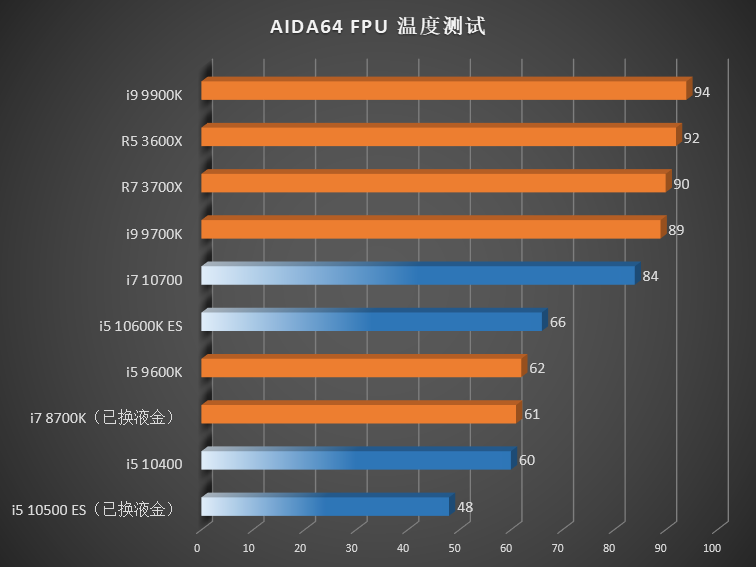 0
0 - Heatsink: No
- TDP: 45W
- RAM Type: DDR4
- RAM frequency: 2667MHz
- Memory channels: Dual Channel
- Release Date: September 2018
AMD Ryzen 5 2500X
- Cores: 6
- Threads: 12
- Base frequency: 3.6GHz
- Boost Frequency: Up to 4.0GHz
- L1 cache: 384KB
- L2 cache: 2MB
- L3 cache: 8MB
- Overclocking: Yes
- PCI Express version: 3.0
- Heatsink: No
- TDP: 65W
- RAM Type: DDR4
- RAM frequency: 2933MHz
- Memory channels: Dual Channel
- Release Date: September 10, 2018
AMD Ryzen 3 2300X
- Cores: 4
- Threads: 4
- Base frequency: 3.5GHz
- Boost Frequency: Up to 4.0GHz
- L1 cache: 384KB
- L2 cache: 2MB
- L3 cache: 8MB
- Overclocking: Yes
- PCI Express version: 3.0
- Heatsink: No
- TDP: 65W
- RAM Type: DDR4
- RAM frequency: 2933MHz
- Memory channels: Dual Channel
- Release Date: September 10, 2018
AMD Ryzen 2000G APU
These APUs are the first to market with integrated graphics Radeon vega based on the zen architecture and 14nm lithograph by GlobalFoundries. They are solutions for entry-level gaming hobbies, allowing the saving of dedicated graphics.
They are solutions for entry-level gaming hobbies, allowing the saving of dedicated graphics.
AMD Ryzen 5 2400G
- Cores: 4
- Threads: 8
- Base frequency: 3.6GHz
- Boost Frequency: Up to 3.9GHz
- L1 cache: 384KB
- L2 cache: 2MB
- L3 cache: 4MB
- iGPU: RX Vega 11 Graphics
- Graphics cores: 11
- IGPU frequency: 1250MHz
- Overclocking: Yes
- PCI Express version: 3.0
- Heatsink: Wraith Stealth
- TDP: 65W
- RAM Type: DDR4
- RAM frequency: 2933MHz
- Memory channels: Dual Channel
- Release date: December 2 of 2018
AMD Ryzen 5 2400G — Processor with Radeon RX Vega11 Graphics (3.6 to 3.9 GHz, DDR4 up to 2933 MHz, 1250 MHz GPU, L2 / L3 cache: 2 MB + 4 MB, 65 W)
- AMD Rayzen 5 2400G Processor with Radeon RX Vega11 Graphics
- CPU frequency 3.6 to 3.9 GHz
- Supports DDR4 up to 2933 MHz
- GPU frequency: 1250 MHz
- L2 / L3 cache: 2MB + 4MB
AMD Ryzen 5 2400GE
- Cores: 4
- Threads: 8
- Base frequency: 3.
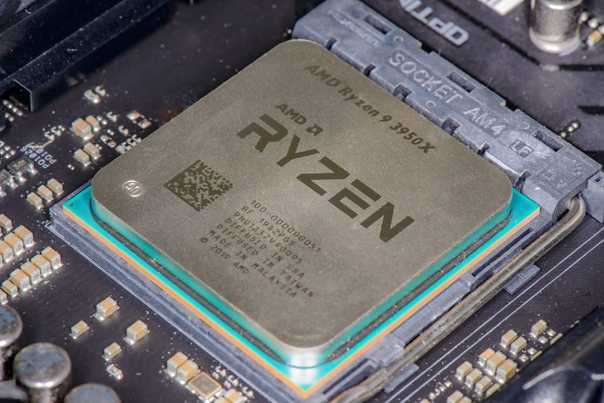 2GHz
2GHz - Boost Frequency: Up to 3.8GHz
- L1 cache: 384KB
- L2 cache: 2MB
- L3 cache: 4MB
- iGPU: RX Vega 11 Graphics
- Graphics cores: 11
- IGPU frequency: 1250MHz
- Overclocking: Yes
- PCI Express version: 3.0
- Heatsink: No
- TDP: 35W
- RAM Type: DDR4
- RAM frequency: 2933MHz
- Memory channels: Dual Channel
- Release date: December 2 of 2018
AMD Ryzen 3 2200G
- Cores: 4
- Threads: 4
- Base frequency: 3.5GHz
- Boost Frequency: Up to 3.7GHz
- L1 cache: 384KB
- L2 cache: 2MB
- L3 cache: 4MB
- iGPU: RX Vega 8 Graphics
- Graphics cores: 8
- IGPU frequency: 1100MHz
- Overclocking: Yes
- PCI Express version: 3.0
- Heatsink: Wraith Stealth
- TDP: 65W
- RAM Type: DDR4
- RAM frequency: 2933MHz
- Memory channels: Dual Channel
- Release date: December 2 of 2018
AMD Ryzen 3 2200G, Processor with Cooler Wraith Stealth (3. 5 up to 3.7 GHz, DDR4 up to 2933 MHz, 1100 MHz GPU, L2 / L3 Cache: 2 MB + 4 MB, 65W), Multicolor
5 up to 3.7 GHz, DDR4 up to 2933 MHz, 1100 MHz GPU, L2 / L3 Cache: 2 MB + 4 MB, 65W), Multicolor
- AMD Rayzen 3 2200G processor with Wraith Stealth cooler
- CPU frequency 3.5 to 3.7 GHz
- Supports DDR4 up to 2933 MHz
- GPU frequency: 1100 MHz
- L2 / L3 cache: 2MB + 4MB
AMD Ryzen 3 2200GE
- Cores: 4
- Threads: 4
- Base frequency: 3.2GHz
- Boost Frequency: Up to 3.6GHz
- L1 cache: 384KB
- L2 cache: 2MB
- L3 cache: 4MB
- iGPU: RX Vega 8 Graphics
- Graphics cores: 8
- IGPU frequency: 1100MHz
- Overclocking: Yes
- PCI Express version: 3.0
- Heatsink: No
- TDP: 35W
- RAM Type: DDR4
- RAM frequency: 2933MHz
- Memory channels: Dual Channel
- Release Date: April 19, 2018
AMD Ryzen PRO 2000 Series Processors
These processors are Zen + architecture and are based on the 12nm lithograph by GlobalFoundries.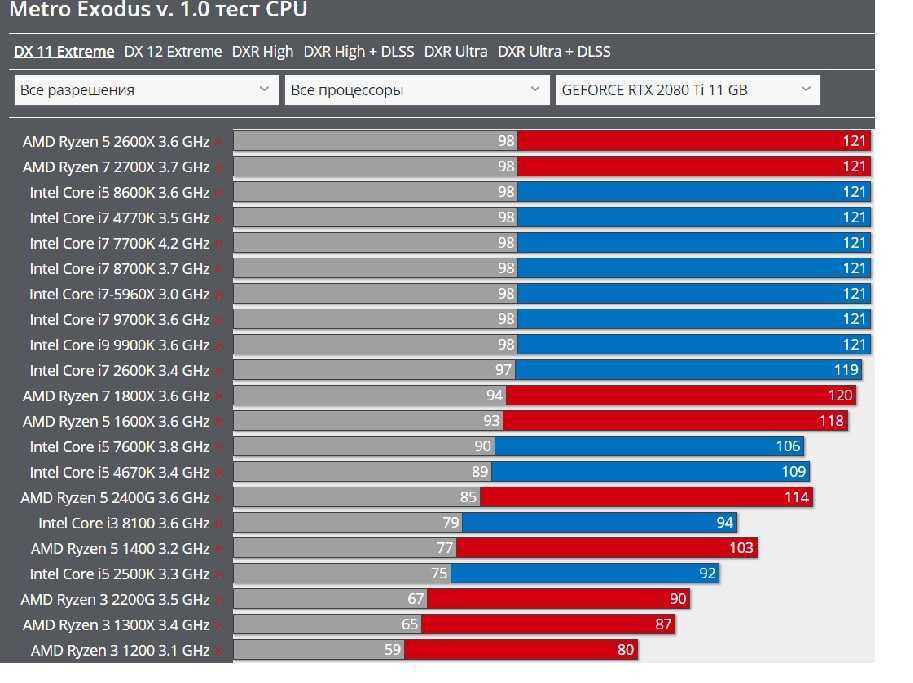 These processors are characterized by integrating special business security technologies. They are intended for administration, reliability, and security.
These processors are characterized by integrating special business security technologies. They are intended for administration, reliability, and security.
AMD Ryzen 7 PRO 2700X
- Cores: 8
- Threads: 16
- Base frequency: 3.6GHz
- Boost Frequency: Up to 4.1GHz
- L1 cache: 768KB
- L2 cache: 4MB
- L3 cache: 16MB
- Overclocking: Yes
- PCI Express version: 3.0
- Heatsink: No
- TDP: 95W
- RAM Type: DDR4
- RAM frequency: 2933MHz
- Memory channels: Dual Channel
AMD Ryzen 7 PRO 2700
- Cores: 8
- Threads: 16
- Base frequency: 3.2GHz
- Boost Frequency: Up to 4.1GHz
- L1 cache: 768KB
- L2 cache: 4MB
- L3 cache: 16MB
- Overclocking: Yes
- PCI Express version: 4.0
- Heatsink: No
- TDP: 65W
- RAM Type: DDR4
- RAM frequency: 2933MHz
- Memory channels: Dual Channel
AMD Ryzen 5 PRO 2600
- Cores: 6
- Threads: 12
- Base frequency: 3.
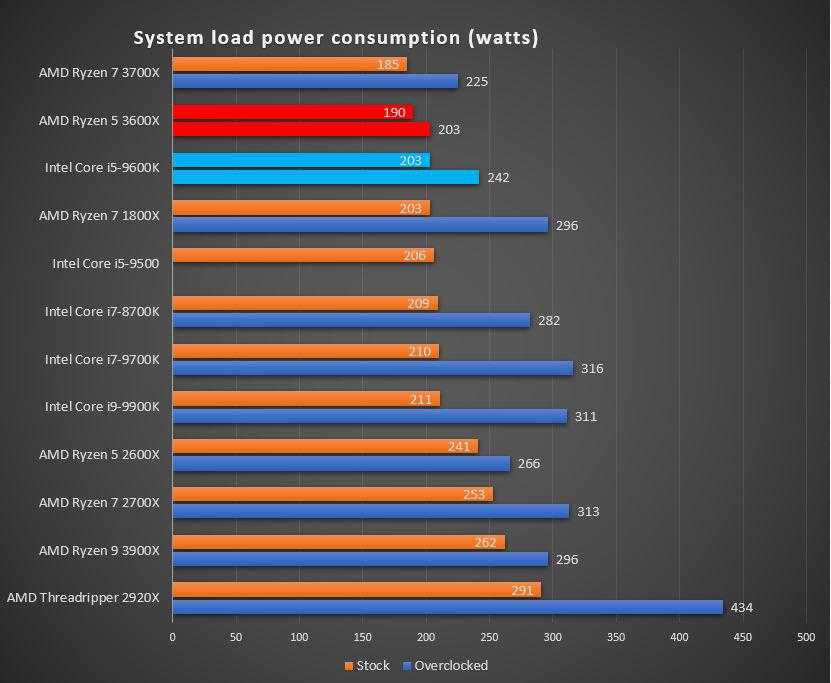 4GHz
4GHz - Boost Frequency: Up to 3.9GHz
- L1 cache: 576KB
- L2 cache: 3MB
- L3 cache: 16MB
- Overclocking: Yes
- PCI Express version: 4.0
- Heatsink: No
- TDP: 65W
- RAM Type: DDR4
- RAM frequency: 2933MHz
- Memory channels: Dual Channel
AMD Ryzen PRO 2000G APU
These APUs are based on the zen architecture and 14nm lithograph by GlobalFoundries. They are a version of APUs specially developed for professional systems. Like the Ryzen PRO, these APUs feature advanced security for the professional segment.
AMD Ryzen 5 PRO 2400G
- Cores: 4
- Threads: 8
- Base frequency: 3.6GHz
- Boost Frequency: Up to 3.9GHz
- L1 cache: 384KB
- L2 cache: 2MB
- L3 cache: 4MB
- iGPU: RX Vega 11 Graphics
- Graphics cores: 11
- IGPU frequency: 1250MHz
- Overclocking: Yes
- PCI Express version: 3.0
- Heatsink: Wraith Stealth
- TDP: 65W
- cTDP: 46-65W
- RAM Type: DDR4
- RAM frequency: 2933MHz
- Memory channels: Dual Channel
AMD Ryzen 5 PRO 2400GE
- Cores: 4
- Threads: 8
- Base frequency: 3.
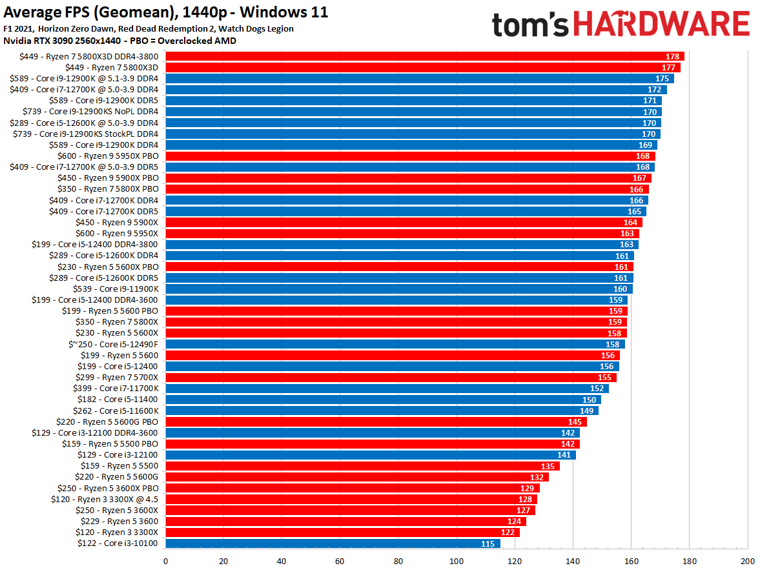 2GHz
2GHz - Boost Frequency: Up to 3.8GHz
- L1 cache: 384KB
- L2 cache: 2MB
- L3 cache: 4MB
- iGPU: RX Vega 11 Graphics
- Graphics cores: 11
- IGPU frequency: 1250MHz
- Overclocking: Yes
- PCI Express version: 3.0
- Heatsink: No
- TDP: 35W
- RAM Type: DDR4
- RAM frequency: 2933MHz
- Memory channels: Dual Channel
AMD Ryzen 3 PRO 2200G
- Cores: 4
- Threads: 4
- Base frequency: 3.5GHz
- Boost Frequency: Up to 3.7GHz
- L1 cache: 384KB
- L2 cache: 2MB
- L3 cache: 4MB
- iGPU: RX Vega 8 Graphics
- Graphics cores: 8
- IGPU frequency: 1100MHz
- Overclocking: Yes
- PCI Express version: 3.0
- Heatsink: Wraith Stealth
- TDP: 65W
- cTPD: 46-65W
- RAM Type: DDR4
- RAM frequency: 2933MHz
- Memory channels: Dual Channel
AMD Ryzen 3 PRO 2200GE
- Cores: 4
- Threads: 4
- Base frequency: 3.
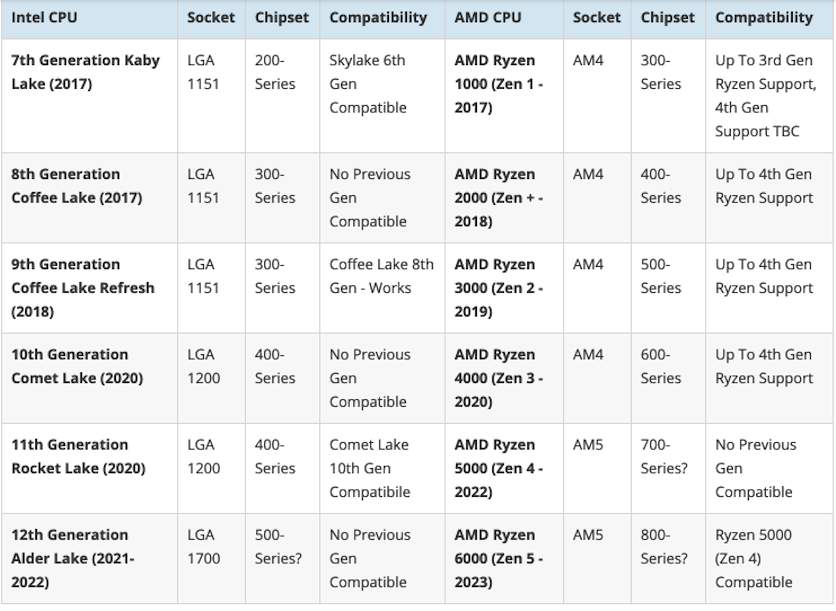 2GHz
2GHz - Boost Frequency: Up to 3.6GHz
- L1 cache: 384KB
- L2 cache: 2MB
- L3 cache: 4MB
- iGPU: RX Vega 8 Graphics
- Graphics cores: 8
- IGPU frequency: 1100MHz
- Overclocking: Yes
- PCI Express version: 3.0
- Heatsink: No
- TDP: 35W
- RAM Type: DDR4
- RAM frequency: 2933MHz
- Memory channels: Dual Channel
AMD Ryzen 1000 AF Series Processor
These processors are an upgrade from the Ryzen 1000 processors. These new processors are based on the Zen + architecture and make use of the lithograph of 12nm by GlobalFoundries. They are in all respects the same as the Zen @ 14nm processors, but with this lithographic process an improvement in consumption is achieved. Their excellent quality / price ratio makes them ideal for gaming fans.
AMD Ryzen 5 1600AF
- Cores: 6
- Threads: 12
- Base frequency: 3.2GHz
- Boost Frequency: Up to 3.
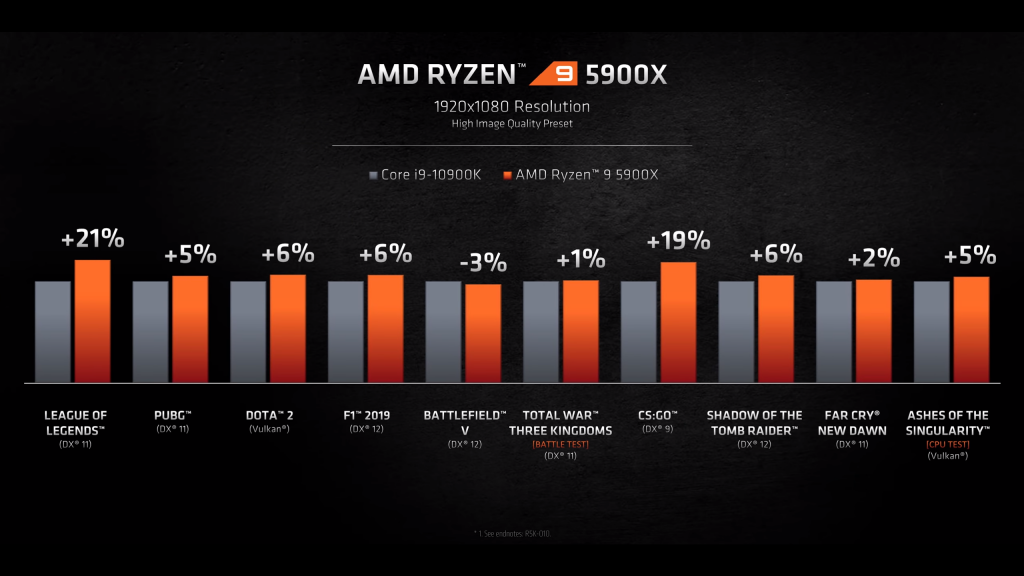 6GHz
6GHz - L1 cache: 576KB
- L2 cache: 3MB
- L3 cache: 16MB
- Overclocking: Yes
- PCI Express version: 3.0
- Heatsink: Wraith Spire
- TDP: 95W
- RAM Type: DDR4
- RAM frequency: 2667MHz
- Memory channels: Dual Channel
AMD Ryzen 3 1200AF
- Cores: 4
- Threads: 4
- Base frequency: 3.1GHz
- Boost Frequency: Up to 3.4GHz
- L1 cache: 384KB
- L2 cache: 2MB
- L3 cache: 8MB
- Overclocking: Yes
- PCI Express version: 3.0
- Heatsink: Wraith Stealth
- TDP: 65W
- RAM Type: DDR4
- RAM frequency: 2667MHz
- Memory channels: Dual Channel
AMD Ryzen 1000 Series Processor
They are the first AMD processors based on the zen architecture developed under the 14nm lithograph. These processors introduced major architectural changes from previous generations. Furthermore, they are the first modular processors based on sets of cores.
AMD Ryzen 7 1800X
- Cores: 8
- Threads: 16
- Base frequency: 3.6GHz
- Boost Frequency: Up to 4.0GHz
- L1 cache: 768KB
- L2 cache: 4MB
- L3 cache: 16MB
- Overclocking: Yes
- PCI Express version: 3.0
- Heatsink: No
- TDP: 95W
- RAM Type: DDR4
- RAM frequency: 2667MHz
- Memory channels: Dual Channel
AMD RYZEN 7 1800X 16MB 4.0GHz Octa Core AMD
- Processor frequency: 4 GHz
- Number of processor cores: 8
- Processor socket: Socket AM4
- Number of processor filaments: 16
- Processor operating mode: 64-bit
AMD Ryzen 7 1700X
- Cores: 8
- Threads: 16
- Base frequency: 3.4GHz
- Boost Frequency: Up to 3.8GHz
- L1 cache: 768KB
- L2 cache: 4MB
- L3 cache: 16MB
- Overclocking: Yes
- PCI Express version: 3.0
- Heatsink: No
- TDP: 95W
- RAM Type: DDR4
- RAM frequency: 2667MHz
- Memory channels: Dual Channel
AMD Ryzen 7 1700x 3 GHz Processor (Summit Ridge) Socks AM4 — Boxed
- YD170XBCAEWOF.

AMD Ryzen 7 1700
- Cores: 8
- Threads: 16
- Base frequency: 3.0GHz
- Boost Frequency: Up to 3.7GHz
- L1 cache: 768KB
- L2 cache: 4MB
- L3 cache: 16MB
- Overclocking: Yes
- PCI Express version: 3.0
- Heatsink: Wraith Spire with RGB
- TDP: 65W
- RAM Type: DDR4
- RAM frequency: 2667MHz
- Memory channels: Dual Channel
AMD RYZEN 7 1700- 3.7 GHz processor, Socket AM4 with included Wraith Spire fan
- Processor frequency: 3,7 GHz
- Number of processor cores: 8
- Processor socket: Socket AM4
- Number of processor filaments: 16
- Processor operating mode: 64-bit
AMD Ryzen 5 1600X
- Cores: 6
- Threads: 12
- Base frequency: 3.6GHz
- Boost Frequency: Up to 4.0GHz
- L1 cache: 576KB
- L2 cache: 3MB
- L3 cache: 16MB
- Overclocking: Yes
- PCI Express version: 3.
 0
0 - Heatsink: No
- TDP: 95W
- RAM Type: DDR4
- RAM frequency: 2667MHz
- Memory channels: Dual Channel
AMD Ryzen 5 1600x 3.6GHz — Processor (AMD Ryzen 5, 3,6 GHz, Socket AM4, PC, 1600x, 32-bit, 64-bit)
- AMD Ryzen Master provides up to 4 profiles to store custom clock and voltage settings for both Ryzen CPU and DDR4 memory
- SenseMI technology, a set of learning and adaptation functions that help the AMD Ryzen processor customize its performance
- Each AMD Ryzen processor is multiplier-unlocked from the factory, so it can be customized
- AMD Ryzen Master has real-time monitoring and a histogram of clock rates per core and temperature, including average and peak readings
AMD Ryzen 5 1600
- Cores: 6
- Threads: 12
- Base frequency: 3.2GHz
- Boost Frequency: Up to 3.6GHz
- L1 cache: 576KB
- L2 cache: 3MB
- L3 cache: 16MB
- Overclocking: Yes
- PCI Express version: 3.
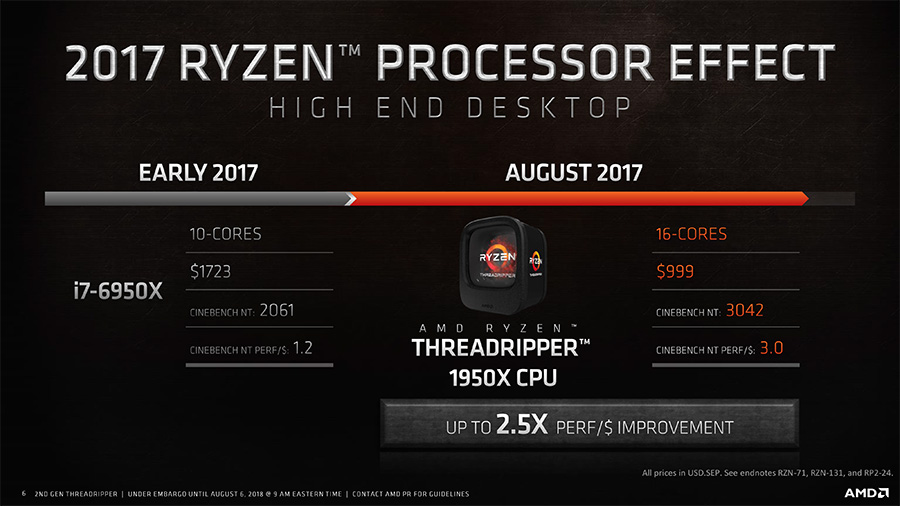 0
0 - Heatsink: Wraith Spire with RGB
- TDP: 95W
- RAM Type: DDR4
- RAM frequency: 2667MHz
- Memory channels: Dual Channel
AMD Ryzen 5 1600 3.2GHz Box — Processor (AMD Ryzen 5, 3,2 GHz, Socket AM4, PC, 32-bit, 64-bit, 3,6 GHz)
- Processor base frequency: 3.2 ghz. Processor turbo frequency: 3.6ghz
- Number of processor cores: 6
- Processor cache: 19 MB
AMD Ryzen 5 1500X
- Cores: 4
- Threads: 8
- Base frequency: 3.5GHz
- Boost Frequency: Up to 3.7GHz
- L1 cache: 384KB
- L2 cache: 2MB
- L3 cache: 16MB
- Overclocking: Yes
- PCI Express version: 3.0
- Heatsink: Wraith Spire
- TDP: 65W
- RAM Type: DDR4
- RAM frequency: 2667MHz
- Memory channels: Dual Channel
AMD Ryzen 5 1500X — Processor (AMD Ryzen 5, 3,5 GHz, Socket AM4, PC, 14 nm)
- AMD Ryzen Master provides up to 4 profiles to store custom clock and voltage settings for both Ryzen CPU and DDR4 memory
- SenseMI technology, a set of learning and adaptation functions that help the AMD Ryzen processor customize its performance
- Each AMD Ryzen processor is multiplier-unlocked from the factory, so it can be customized
- AMD Ryzen Master has real-time monitoring and a histogram of clock rates per core and temperature, including average and peak readings
- It has a base frequency of the processor of 3.
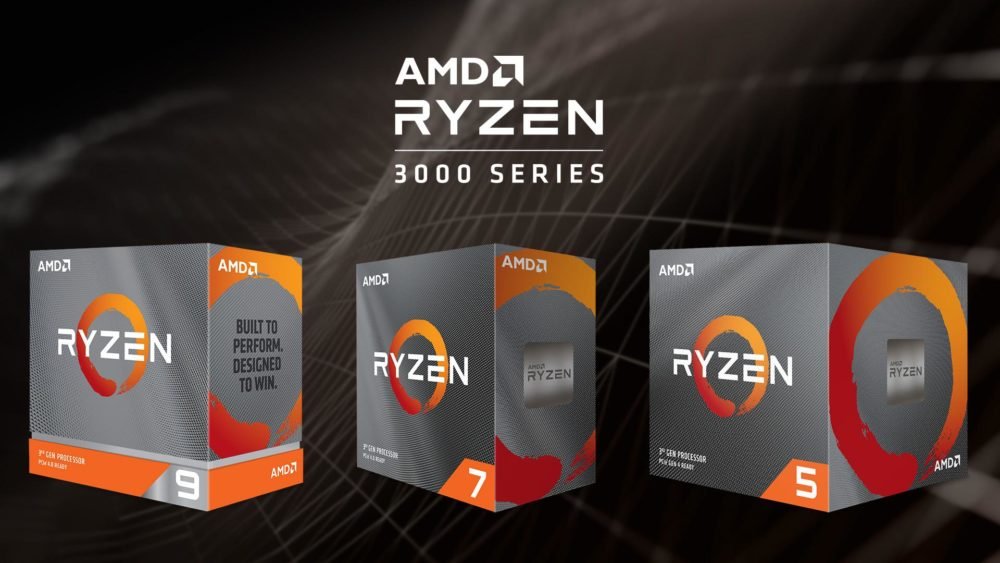 5 GHz; 3.7 GHz processor turbo frequency; 4 cores; 16 MB processor cache
5 GHz; 3.7 GHz processor turbo frequency; 4 cores; 16 MB processor cache
AMD Ryzen 5 1400
- Cores: 4
- Threads: 8
- Base frequency: 3.2GHz
- Boost Frequency: Up to 3.4GHz
- L1 cache: 384KB
- L2 cache: 2MB
- L3 cache: 16MB
- Overclocking: Yes
- PCI Express version: 3.0
- Heatsink: Wraith Stealth
- TDP: 65W
- RAM Type: DDR4
- RAM frequency: 2667MHz
- Memory channels: Dual Channel
AMD Ryzen 5 1400 Processor, Socket AM4, 8 GB, 500 GB, Windows 10 Pro
- Amd ryzen master provides up to 4 profiles to store custom clock and voltage settings for both ryzen cpu and ddr4 memory
- AMD sensemi technology a set of learning and adaptive features to customize the performance of amd ryzen processors
- AMD Socket AM4 platform, designed to provide DDR4 memory, PCIe 3.0 interface and NVMe technologies and support for native USB 3.1 Gen2 in one chipset
- It has USB and SATA connectivity directly to the processor, configurable to offer the necessary flexibility; includes cooler
AMD Ryzen 3 1300X
- Cores: 4
- Threads: 4
- Base frequency: 3.
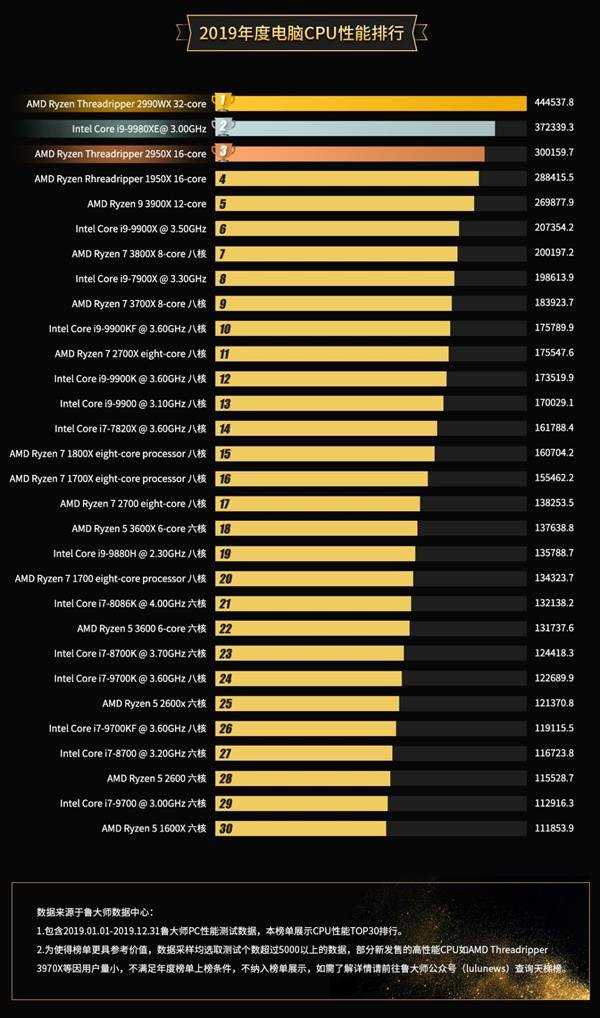 5GHz
5GHz - Boost Frequency: Up to 3.7GHz
- L1 cache: 384KB
- L2 cache: 2MB
- L3 cache: 8MB
- Overclocking: Yes
- PCI Express version: 3.0
- Heatsink: Wraith Stealth
- TDP: 65W
- RAM Type: DDR4
- RAM frequency: 2667MHz
- Memory channels: Dual Channel
AMD Ryzen 3 1300X — Processor
- Processor base frequency: 3.5 GHz. Processor turbo frequency: 3.7 GHz
- Number of processor cores: 4
- Processor cache: 10 MB
- Supported Technologies: AMD SenseMI Technology, Zen Core Architecture, AMD Ryzen Master Utility, Enmotus FuzeDrive for AMD Ryzen AVX2, FMA3, XFR (Extended Frequency Range)
- Operating System Support: Windows 10 — 64-Bit Edition, RHEL x86 64-bit, Ubuntu x86 64-bit. Operating system (OS) compatibility will vary by manufacturer
AMD Ryzen 3 1200
- Cores: 4
- Threads: 4
- Base frequency: 3.1GHz
- Boost Frequency: Up to 3.
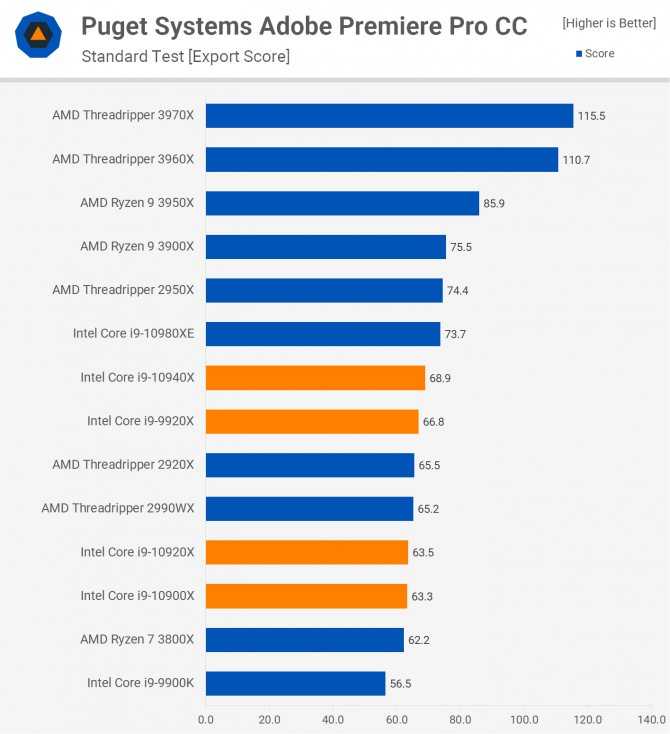 4GHz
4GHz - L1 cache: 384KB
- L2 cache: 2MB
- L3 cache: 8MB
- Overclocking: Yes
- PCI Express version: 3.0
- Heatsink: Wraith Stealth
- TDP: 65W
- RAM Type: DDR4
- RAM frequency: 2667MHz
- Memory channels: Dual Channel
Sales
AMD AM4 RYZEN 3 1200 4X3.4GHZ / 10MB Box CPU
- Processor frequency: 3,4 GHz
- Number of processor cores: 4
- Number of processor filaments: 4
- Processor socket: Socket AM4
- Processor cache: 10 MB
AMD Ryzen PRO 1000 Series Processors
They are an adaptation of the Ryzen 1000 processors adapted to the professional segment with important security improvements. They are also based on zen architecture and 14nm lithograph by GlobalFoundries.
AMD Ryzen 7 PRO 1700X
- Cores: 8
- Threads: 16
- Base frequency: 3.4GHz
- Boost Frequency: Up to 3.
 8GHz
8GHz - L2 cache: 4MB
- L3 cache: 16MB
- Overclocking: Yes
- PCI Express version: 3.0
- Heatsink: Wraith Spire
- TDP: 95W
- RAM Type: DDR4
- RAM frequency: 2667MHz
- Memory channels: Dual Channel
AMD Ryzen 7 PRO 1700
- Cores: 8
- Threads: 16
- Base frequency: 3.0GHz
- Boost Frequency: Up to 3.7GHz
- L1 cache: 768KB
- L2 cache: 4MB
- L3 cache: 16MB
- Overclocking: Yes
- PCI Express version: 3.0
- Heatsink: No
- TDP: 65W
- RAM Type: DDR4
- RAM frequency: 2667MHz
- Memory channels: Dual Channel
AMD Ryzen 5 PRO 1600
- Cores: 6
- Threads: 12
- Base frequency: 3.2GHz
- Boost Frequency: Up to 3.6GHz
- L1 cache: 576KB
- L2 cache: 3MB
- L3 cache: 16MB
- Overclocking: Yes
- PCI Express version: 3.0
- Heatsink: No
- TDP: 65W
- RAM Type: DDR4
- RAM frequency: 2667MHz
- Memory channels: Dual Channel
AMD Ryzen 5 PRO 1500
- Cores: 4
- Threads: 8
- Base frequency: 3.
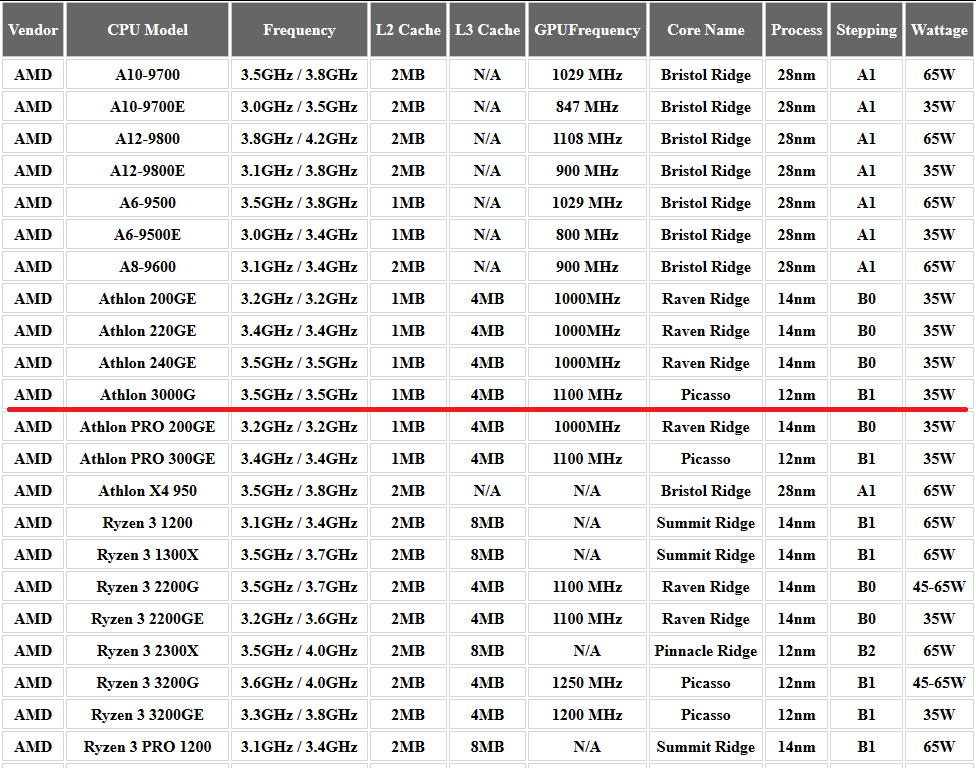 5GHz
5GHz - Boost Frequency: Up to 3.7GHz
- L1 cache: 384KB
- L2 cache: 2MB
- L3 cache: 16MB
- Overclocking: Yes
- PCI Express version: 3.0
- Heatsink: No
- TDP: 65W
- RAM Type: DDR4
- RAM frequency: 2667MHz
- Memory channels: Dual Channel
AMD Ryzen 3 PRO 1300
- Cores: 4
- Threads: 4
- Base frequency: 3.5GHz
- Boost Frequency: Up to 3.7GHz
- L1 cache: 384KB
- L2 cache: 2MB
- L3 cache: 8MB
- Overclocking: Yes
- PCI Express version: 3.0
- Heatsink: No
- TDP: 65W
- RAM Type: DDR4
- RAM frequency: 2667MHz
- Memory channels: Dual Channel
AMD Ryzen 3 PRO 1200
- Cores: 4
- Threads: 4
- Base frequency: 3.1GHz
- Boost Frequency: Up to 3.4GHz
- L1 cache: 384KB
- L2 cache: 2MB
- L3 cache: 8MB
- Overclocking: Yes
- PCI Express version: 3.0
- Heatsink: No
- TDP: 65W
- RAM Type: DDR4
- RAM frequency: 2667MHz
- Memory channels: Dual Channel
AMD Athlon processors
AMD Athlon processors are based on the first iteration of the zen architecture and 14nm lithograph by GlobalFoundries.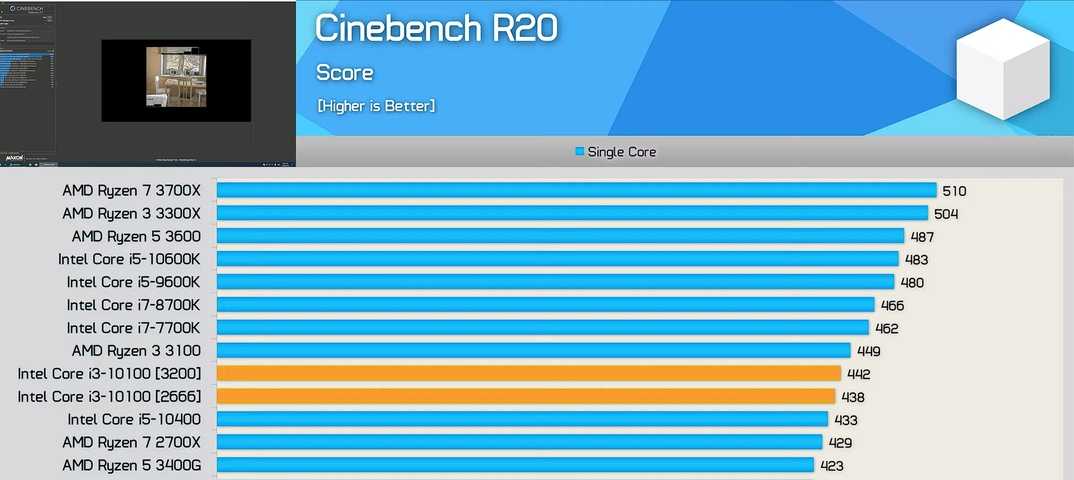 They are very simple and economical solutions for users who develop low cost systems.
They are very simple and economical solutions for users who develop low cost systems.
AMD Athlon 3000G
- Cores: 2
- Threads: 4
- Base frequency: 3.5GHz
- L1 cache: 192KB
- L2 cache: 1MB
- L3 cache: 4MB
- iGPU: RX Vega 3 Graphics
- Graphics cores: 3
- IGPU frequency: 1100MHz
- Overclocking: Yes
- PCI Express version: 3.0
- Heatsink: No
- TDP: 35W
- RAM Type: DDR4
- RAM frequency: 2667MHz
- Memory channels: Dual Channel
Sales
AMD Athlon 3000G Retail — (AM4 / Dual Core / 3.50GHz / 5MB / 35W / Vega 3) — YD3000C6FHBOX
- Low nda 26.11.2019
- OS Compatible: Windows 10 64-bit edition, RHEL x86 64-bit edition, Ubuntu x86 64-bit edition (Operating system (OS) support will vary by manufacturer)
AMD Athlon 300GE
- Cores: 2
- Threads: 4
- Base frequency: 3.
 4GHz
4GHz - L1 cache: 192KB
- L2 cache: 1MB
- L3 cache: 4MB
- iGPU: RX Vega 3 Graphics
- Graphics cores: 3
- IGPU frequency: 1100MHz
- Overclocking: Yes
- PCI Express version: 3.0
- Heatsink: No
- TDP: 35W
- RAM Type: DDR4
- RAM frequency: 2667MHz
- Memory channels: Dual Channel
AMD Athlon 240GE
- Cores: 2
- Threads: 4
- Base frequency: 3.5GHz
- L1 cache: 192KB
- L2 cache: 1MB
- L3 cache: 4MB
- iGPU: RX Vega 3 Graphics
- Graphics cores: 3
- IGPU frequency: 1000MHz
- Overclocking: Yes
- PCI Express version: 3.0
- Heatsink: No
- TDP: 35W
- RAM Type: DDR4
- RAM frequency: 2667MHz
- Memory channels: Dual Channel
AMD Athlon 240GE 2-Core 4-Thread Processor with Radeon Vega Graphics — YDYD240GC6FBBOX
- AMD ATHLON
- PC
AMD Athlon 220GE
- Cores: 2
- Threads: 4
- Base frequency: 3.
 4GHz
4GHz - L1 cache: 192KB
- L2 cache: 1MB
- L3 cache: 4MB
- iGPU: RX Vega 3 Graphics
- Graphics cores: 3
- IGPU frequency: 1000MHz
- Overclocking: Yes
- PCI Express version: 3.0
- Heatsink: No
- TDP: 35W
- RAM Type: DDR4
- RAM frequency: 2667MHz
- Memory channels: Dual Channel
AMD Athlon 220GE 3.4Ghz — Dual Core Processor
- With Radeon Vega 3 Graphics
- 2 CPU cores
- 3 GPU cores
- Maximum memory speed: 2667 MHz
- Graphics frequency: 1000 MHz
AMD Athlon 200GE
- Cores: 2
- Threads: 4
- Base frequency: 3.2GHz
- L1 cache: 192KB
- L2 cache: 1MB
- L3 cache: 4MB
- iGPU: RX Vega 3 Graphics
- Graphics cores: 3
- IGPU frequency: 1000MHz
- Overclocking: Yes
- PCI Express version: 3.0
- Heatsink: No
- TDP: 35W
- RAM Type: DDR4
- RAM frequency: 2667MHz
- Memory channels: Dual Channel
AMD Athlon 200GE 3. 2GHz 4MB L3 Box — Processor (AMD Athlon, 3,2 GHz, Socket AM4, PC, 14 NM, 200GE)
2GHz 4MB L3 Box — Processor (AMD Athlon, 3,2 GHz, Socket AM4, PC, 14 NM, 200GE)
- Processor family: AMD Athlon
- Processor frequency: 3.2ghz
- Number of processor cores: 2
- Processor socket: socket am4
- Component for: PC
AMD CPU (Processor) List in Order of Performance
How are AMD CPUs ranked in order of performance – is there an easy list to check?
Keeping track of performance across modern AMD CPUs can be difficult. AMD releases new Processor SKUs every few Months and entirely new CPU generations about every year and a half.
Which AMD Processor is best for you depends on your typical workloads. If you’re a professional doing active work like Photo Editing or 3D Modeling or are running AAA Games, a CPU that has high single-core performance is more important than a CPU with a lot of cores.
If you’re running workloads, though, that can easily be parallelized, such as 3D Rendering, Video Editing, Batch Processing, Machine Learning, to name a few, an AMD CPU with a high number of cores is the right pick for you.
Most workloads, though can make use of both, fast single-core performance and high multi-core performance, at least to a certain degree, and that’s why I’ve created this handy little list of AMD CPUs in order of Performance that you can sort to your liking.
AMD CPU (Processor) List In Order Of Performance
| CPU Name | Single Core Performance | Multi Core Performance | Performance Total* | Performance / Dollar* | $ Price (MSRP) |
|---|---|---|---|---|---|
| AMD Threadripper 3990X | 1262 | 75671 | 3990 | ||
| AMD Threadripper Pro 3995WX | 1231 | 73220 | 5489 | ||
| AMD Epyc 7702P | 993 | 48959 | 4425 | ||
| AMD Threadripper 3970X | 1308 | 46874 | 1999 | ||
| AMD Threadripper Pro 3975WX | 1244 | 43450 | 2749 | ||
| AMD Threadripper 3960X | 1307 | 34932 | 1399 | ||
| AMD Threadripper 2990WX | 1005 | 29651 | 1799 | ||
| AMD Ryzen 9 5950X | 1684 | 28782 | 600 | ||
| AMD Threadripper Pro 3955WX | 1401 | 27175 | 1149 | ||
| AMD Ryzen 9 3950X | 1406 | 26375 | 749 | ||
| AMD Ryzen 9 5900X | 1670 | 22046 | 450 | ||
| AMD Threadripper 1950X | 1027 | 19635 | 999 | ||
| AMD Threadripper 2950X | 1135 | 18797 | 899 | ||
| AMD Ryzen 9 3900X | 1312 | 18682 | 434 | ||
| AMD Ryzen 9 3900XT | 1354 | 18511 | 499 | ||
| AMD Threadripper 1920X | 1054 | 15038 | 799 | ||
| AMD Ryzen 7 5800X | 1596 | 14812 | 300 | ||
| AMD Ryzen 7 5700G | 1535 | 14350 | 359 | ||
| AMD Ryzen 7 3800X | 1346 | 13848 | 339 | ||
| AMD Ryzen 7 3800XT | 1355 | 12955 | 399 | ||
| AMD Ryzen 7 3700X | 1345 | 12195 | 329 | ||
| AMD Ryzen 5 5600X | 1593 | 11201 | 230 | ||
| AMD Ryzen 7 2700X | 1102 | 10140 | 329 | ||
| AMD Ryzen 5 3600XT | 1330 | 9945 | 249 | ||
| AMD Ryzen 5 3600X | 1323 | 9526 | 236 | ||
| AMD Ryzen 5 3600 | 1245 | 9073 | 199 | ||
| AMD Threadripper 1900X | 1005 | 8979 | 299 | ||
| AMD Ryzen 5 2600X | 1094 | 7523 | 229 | ||
| AMD Ryzen 3 3300X | 1299 | 6787 | 120 | ||
| AMD Ryzen 3 3100 | 1105 | 5423 | 99 | ||
| AMD Ryzen 5 5600 | 1472 | 11429 | 199 | ||
| AMD Ryzen 5 5500 | 1372 | 10710 | 159 | ||
| AMD Ryzen 9 7950X | 2062 | 40795 | 699 | ||
| AMD Ryzen 9 7900X | 2044 | 30020 | 549 | ||
| AMD Ryzen 7 7700X | 2010 | 20144 | 399 | ||
| AMD Ryzen 5 7600X | 1981 | 14780 | 299 | ||
| CPU Name | Single Core Performance | Multi Core Performance | Performance Total* | Performance / Dollar* | $ Price (MSRP) |
*Weighted. Total Performance (column) is relative to an AMD Ryzen 7 5800X, weighed equally at 50% single-core and 50% multi-core performance. This weighing will indicate good all-round performance for most workloads without going overboard on too low single-core performance or too many cores.
Total Performance (column) is relative to an AMD Ryzen 7 5800X, weighed equally at 50% single-core and 50% multi-core performance. This weighing will indicate good all-round performance for most workloads without going overboard on too low single-core performance or too many cores.
Note: If you’re running very specific tasks, though, that you know can make good use of, e.g., a lot of cores, sort the table by multi-core performance. Or, if you’re certain your workloads only need high single-core performance, sort by that column.
Benchmark used for this list is Cinebench R23.
Best AMD Processor for the money
AMD’s entry-level CPUs have extremely high value considering their performance per dollar. Both the AMD Ryzen 3 3100 and 3300X lead the Performance / Dollar Chart given their very reasonable pricing.
This is not to say everyone should be buying a Ryzen 3. They are somewhat limited in overall performance and have fewer cores than might be necessary for your workloads, but they are a great pick for many low-level tasks such as general productivity.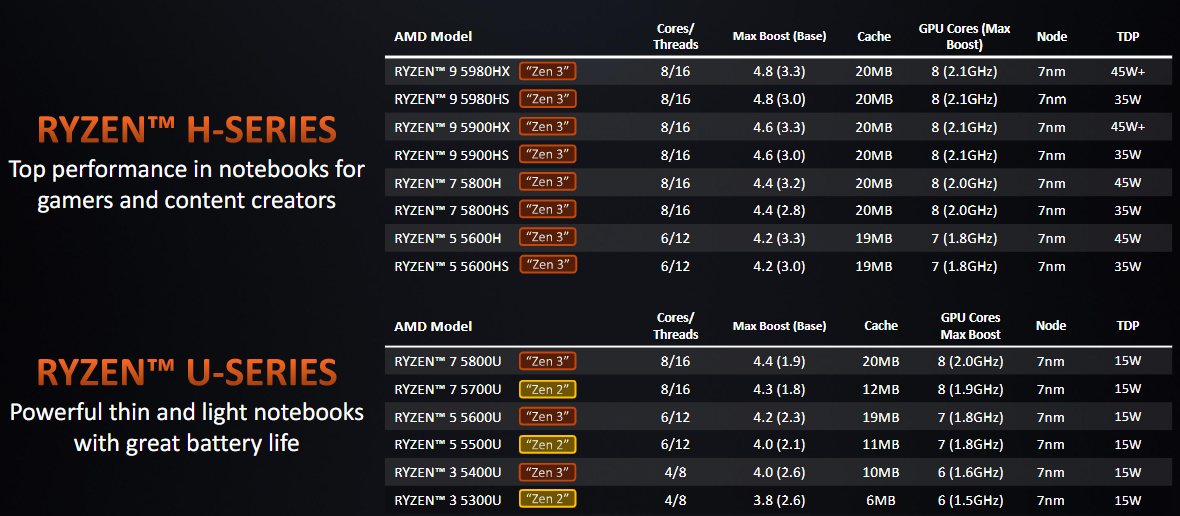
If your budget is limited, the Ryzen 5 5600X is one of the best CPUs for most workloads and games. If you’re willing to spend some more, the 5900X 12-Core CPU packs some serious performance if your workloads can make use of more cores.
In the end, the best AMD CPU for the money depends on your workloads and requirements, and, of course, your budget limit.
Let’s take a look at the best CPU within certain price-ranges:
Best AMD Processor under 500$
After recent considerable price cuts, AMD’s best-performing CPU under 500$ is the AMD Ryzen 9 5900X. At just 450$, the 12-Core CPU is a powerhouse of a CPU that’ll run any high-end workloads without any issues.
With a base clock of 3.7GHz and a boost of up to 4.8GHz, the Ryzen 9 sports 24 Threads at a power draw (TDP) of 105W.
Best AMD CPU under 400$
The AMD Ryzen 7 5800X is the best CPU you can buy for under 400 dollars. Its price has been reduced to 300$ from its original MSRP of 450$.
The 8 Cores and 16 Threads clock at 3.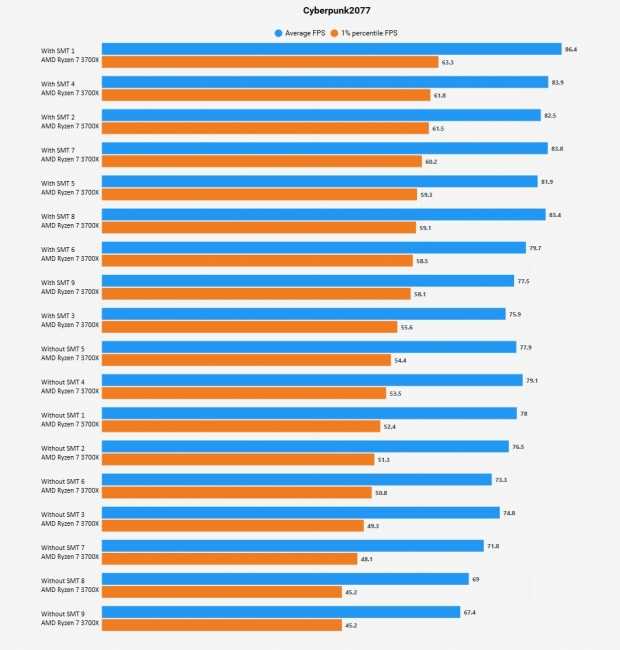 8GHz base and 4.7GHz boost. It, too is manufactured on TSMC’s 7NM node, making it power efficient at 105W TDP.
8GHz base and 4.7GHz boost. It, too is manufactured on TSMC’s 7NM node, making it power efficient at 105W TDP.
Best AMD CPU under 200$
The AMD Ryzen 5 3600 and 3600X are AMD’s best CPUs for under 200 dollars. If you can find it below 200$, the 5600X is the newer generation successor to these CPUs with considerably higher single-core performance and power-efficiency.
All Ryzen 5’s are 6-Core CPUs. The 5600X’s 12 Threads clock at 3.7GHz base and up to 4.6GHz boost.
Which AMD CPU has the most Cores?
Currently, the AMD Threadripper 3990X (Review) and PRO 3995WX both have 64 Cores / 128 Threads at their disposal.
On the Server-side, the Epyc 7713P, 7h22, 7702P and 7742, too have 64 Cores that are clocked at varying frequencies and are rated at different TDPs.
What is the fastest AMD CPU?
This depends on the definition of “fast”. The highest multi-core performance is held by AMD’s highest-clocking, highest core-count CPUs, such as the Threadripper 3990X.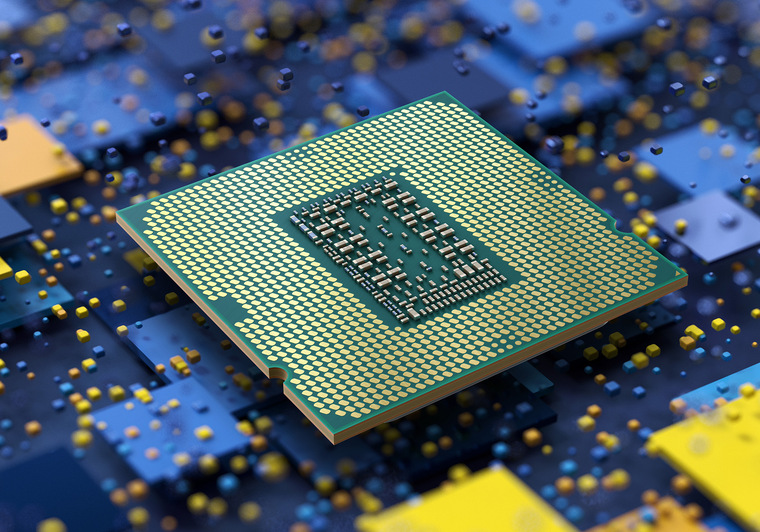
The highest single-core performance is held by the 5950X and newly released 5800X3D (which makes use of 3D-stacked vCache).
Is Ryzen 7 better than Ryzen 5?
Yes. AMD’s CPU segmentation is as follows:
- Ryzen 9
- Ryzen 7
- Ryzen 5
- Ryzen 3
The higher the number the higher the core-count, the higher the single-core performance and the higher the power-draw.
What is a good CPU Speed?
Anything above 3.5 GHz can be considered “good”.
The more elaborate answer to this, though, would be: “it depends”. You can only compare CPUs within the same generation and brand to each other by their frequency. Between generations and brands, you have to take IPC, Power Draw, Manufacturing Node and other factors into consideration to truly find the best CPU for your needs.
It’s best to rely on benchmarks and real-world tests.
Is Ryzen better than Intel?
It depends on your needs and at what time you’re comparing the two. Both AMD and Intel have an excellent product line-up, but they release new SKUs every few months and every 1.5 years or so they release an entirely new generation of CPUs that usually takes back the crown from the competition for some time.
Both AMD and Intel have an excellent product line-up, but they release new SKUs every few months and every 1.5 years or so they release an entirely new generation of CPUs that usually takes back the crown from the competition for some time.
Check out our regularly updated AMD Ryzen vs Intel Core article here.
Over to you
I hope this AMD CPU List in order of performance helped you get closer to picking the right CPU for your needs. What AMD Processor do you want to buy? Let me know in the comments! ?
CGDirector is Reader-supported. When you buy through our links, we may earn an affiliate commission.
AMD processor list (price, specs, compare ryzen 3 vs ryzen 5 ryzen 7)
AMD Processors list price & Specs compare gen
intel vs amd
i3: dual core ryzen 3 quad core
i5: quad core /no threads ryzen 5 4-6 cores with threads
i7:4-8 cores / ryzen 7 6-16 quad core
i9 equals to ryzen 7
xenon server level threadripper
generation to gen change
transistor size: 19nm 12nm (less electricity more processing power)
ryzen 400 series release date: April 2020
lets know processor
Ryzen / intel = i3/i5/i7 ryzen 3/5/7
ryzen 5 3600
3 rd gen 600= performance indicator withing same generation & cpu model.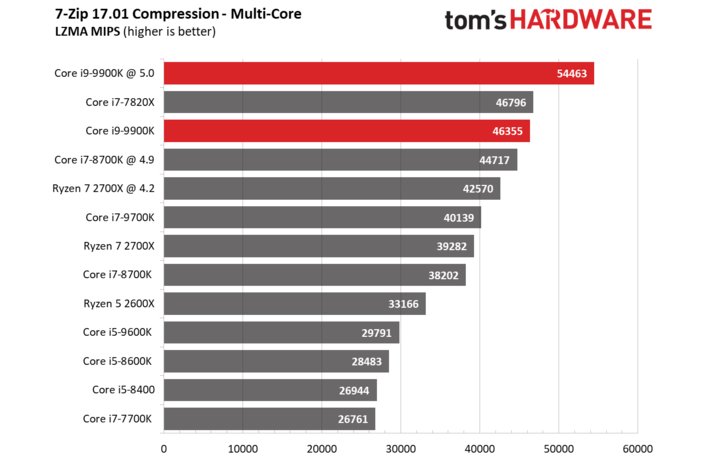
its all about cores /threads and cache size l3
intel vs amd comparison
AMD desktop processors
- AMD Ryzen™ Threadripper Processors (From 8 to 64 cores From 16 to 128 processing threads)
- AMD Ryzen™ Processors (4 to 16 cores Up to 32 threads)
- AMD Ryzen™ Processors with Radeon™ Graphics
- AMD FX™ Processors (From 4 to 8 cores)
- AMD A-Series Processors with Radeon Graphics (2 to 4 threads)
- AMD Athlon™ Processors with Radeon™ Vega Graphics 4 threads
3rd Gen AMD Ryzen™ Threadripper™, the world’s most powerful desktop processor .
AMD Ryzen™ Threadripper™ 3990X (is it for server)
CPU Cores 64
Threads 128
Base Clock 2.9GHz
Max Boost Clock Up to 4.3GHz
Total L1 Cache 4MB
Total L2 Cache 32MB
Total L3 Cache 256MB
Unlocked Yes
CMOS TSMC 7nm FinFET
Socket type: sTRX4
PCI Express® Version PCIe 4.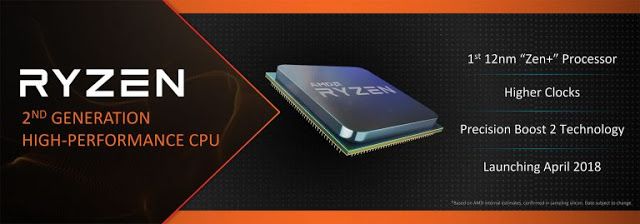 0
0
Default TDP / TDP 280W
Max Temps 95°C
Memory Specification 3200MHz
System Memory Type DDR4
Memory Channels 4
Price: 3,43,499 INR 400K inr on amazon
Ryzen series best for consumers
more l3 cachesize, speed boost, oneclick overclocking (AMD Ryzen™ Master Utility
unlike intel)
AMD Ryzen™ 3 Desktop Processors
- 4 cores
- Up to 10MB Cache
65W
| Specs | AMD Ryzen™ 3 2300X | AMD Ryzen™ 3 1300X | AMD Ryzen™ 3 1200 |
| cores | 4 | 4 | 4 |
| threads | 4 | 4 | 4 |
| Base clock ghz | 3.5 | 3.5Ghz | 3.1Ghz |
| max clock speed ghz | Up to 4.0GHz | Up to 3.7GHz | Up to 3.4GHz |
| Cache size l3 MB | 8MB | 8MB | 8MB |
| cmos | 12nm | 14nm | 14nm |
| Max memory speed | 2933MHz | 2667MHz | 2667MHz |
| Type | DDR4 | DDR4 | DDR4 |
| Memory channels | 2 | 2 | 2 |
| PCI Express® Version | 3 | PCIe 3. 0 x16 0 x16 |
PCIe 3.0 x16 |
| Launch Date | 9/10/2018 | 07/27/2017 | 07/27/2017 |
| Price starts from (INR) | $200 | 6675 | 4899. |
AMD Ryzen™ 3 Processors (APU)with Radeon™ Vega Graphics
| Specs | AMD Ryzen™ 3 3200G | AMD Ryzen™ 3 3200GE | AMD Ryzen™ 3 2200G | AMD Ryzen™ 3 2200GE |
| cores | 4 | 4 | 4 | 4 |
| threads | 4 | 4 | 4 | 4 |
| Base clock ghz | 3.5 | 3.3Ghz | 3.5Ghz | 3.2 |
| max clock speed ghz | Up to 4.0GHz | Up to 3.8GHz | Up to 3.7GHz | 3.6 |
| Cache size l3 MB | 8MB | 8MB | 4MB | 4MB |
| cmos | 12nm | 12nm | 14nm FinFET | 14nm FinFET |
| Max memory speed | 2933MHz | 2933MHz | 2933MHz | 2933MHz |
| Type | DDR4 | DDR4 | DDR4 | DDR4 |
| Memory channels | 2 | 2 | 2 | 2 |
| PCI Express® Version | PCIe® 3.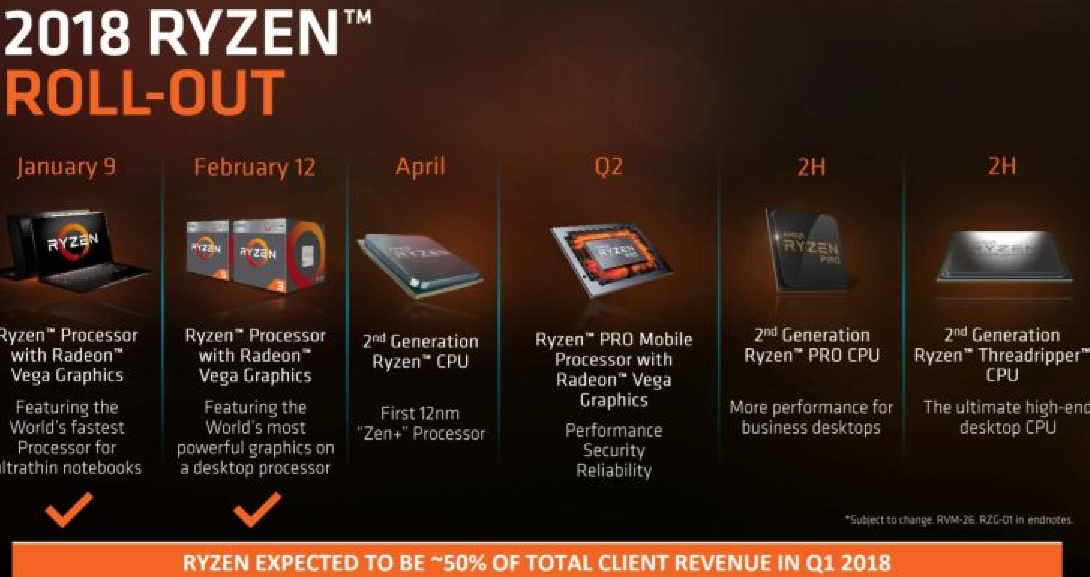 0 x8 0 x8 |
PCIe 3.0 | PCIe® 3.0 x8 | PCIe® 3.0 x8 |
| GPU Cores | 8 | 8 | 8 | 8 |
| GPU Speed | 2933MHz | 1200 MHz | 1100 MHz | 1100 MHz |
| TDP / temp | 65W | 35W /95C | 46-65W | 35W |
| Launch Date | 7/7/2019 | 7/7/19 | 02/12/2018 | 04/19/2018 |
| Price starts from (INR) | 7740( 8057 amazon) | NA | 9,950.00 |
1 hdmi and 1 display portal available with gpu.
amd g vs ge
E – efficiency , lower TDP (for example 45w vs 65w for the regular model)
G- graphics
X – probably eXpert as in for users who want to overclock, or factory overclocked
P – professional (for businesses, maybe some assurances about availability, maybe some enhanced TPM support , maybe encryption instructions enabled, ecc support in an “official” way)
What’s the difference between PCIe x16 and x8?
‘PCIe x1′ connections have one data lane. ‘PCIe x4′ connections have four data lanes. ‘PCIe x8‘ connections have eight data lanes. ‘PCIe x16‘ connections have sixteen data lanes.
‘PCIe x4′ connections have four data lanes. ‘PCIe x8‘ connections have eight data lanes. ‘PCIe x16‘ connections have sixteen data lanes.
Ryzen 5 processor
| Specs | AMD Ryzen™ 5 3600X | AMD Ryzen™ 5 3600 | AMD Ryzen™ 5 2600X | AMD Ryzen™ 5 2600 | AMD Ryzen™ 5 2600E | AMD Ryzen™ 5 2500X |
| cores | 6 | 6 | 6 | 6 | 6 | 4 |
| threads | 12 | 12 | 12 | 12 | 1 | 8 |
| Base clock ghz | 3.8 | 3.6 | 3.6 | 3.4 | 3.1GHz | 3.6GHz |
| max clock speed ghz | Up to 4.4GHz | Up to 4.2GHz | Up to 4.2GHz | 3.9 | 4 | 4 |
| Cache size l3 MB | 32MB | 32MB | 16MB | 16MB | 8MB | 8MB |
| cmos | TSMC 7nm FinFET |
TSMC 7nm FinFET |
12nm FinFET | 12nm FinFET | 12nm | 12nm |
| Max memory speed | 3200MHz | 3200MHz | 2933MHz | 2933MHz | 2667MHz | 2667MHz |
| Type | DDR4 | DDR4 | DDR4 | DDR4 | DDR4 | DDR4 |
| Memory channels | 2 | 2 | 2 | 2 | 2 | 2 |
| PCI Express® Version |
PCIe 4. |
PCIe 4.0 x16 | PCIe 3.0 x16 |
PCIe 3.0 x16 |
PCIe 3.0 | PCIe 3.0 |
| TDP / temp | 95W | 65W | 95W | 65W | 45W | 65W |
| Launch Date | 7/7/2019 | 7/7/19 | 04/19/2018 | 04/19/2018 | September 2018 | 9/10/2018 |
| Price starts from (INR) | 16300.00 | 15590.00 | 12600.00 | 11349.00 |
AMD Ryzen™ 5 1600X Processor
Cores 6
Threads 12
Max Boost Clock Up to 4.0GHz
Base Clock 3.6GHz
AMD Ryzen™ 5 1600 Processor
Cores 6
Threads 12
Max Boost Clock Up to 3.6GHz
Base Clock 3.2GHz
AMD Ryzen™ 5 1500X Processor
Cores 4
Threads 8
Max Boost Clock Up to 3.7GHz
Base Clock 3.5GHz
AMD Ryzen™ 5 1400 Processor
Cores 4
Threads 8
Max Boost Clock Up to 3. 4GHz
4GHz
Base Clock 3.2GHz
AMD Ryzen™ 7 Desktop Processors
| Specs | AMD Ryzen™ 7 3800X | AMD Ryzen™ 7 3700X | AMD Ryzen™ 7 2700X | AMD Ryzen™ 7 2700 | AMD Ryzen™ 7 2700E | AMD Ryzen™ 7 1800X |
| cores | 8 | 8 | 8 | 8 | 8 | 8 |
| threads | 16 | 16 | 16 | 16 | 16 | 16 |
| Base clock ghz | 3.9 | 3.6 | 3.7 | 3.2 | 2.8GHz | 3.6GHz |
| max clock speed ghz | Up to 4.5GHz | Up to 4.4GHz | Up to 4.3GHz | Up to 4.1GHz | 4 | 4 |
| Cache size l3 MB | 32MB | 32MB | 16MB | 16MB | 16MB | 8MB |
| cmos | TSMC 7nm FinFET |
TSMC 7nm FinFET |
12nm FinFET | 12nm FinFET | 12nm | 14nm |
| Max memory speed | 3200MHz | 3200MHz | 2933MHz | 2933MHz | 2667MHz | 2667MHz |
| Type | DDR4 | DDR4 | DDR4 | DDR4 | DDR4 | DDR4 |
| Memory channels | 2 | 2 | 2 | 2 | 2 | 2 |
| PCI Express® Version |
PCIe 4. |
PCIe 4.0 x16 | PCIe 3.0 x16 |
PCIe 3.0 x16 |
PCIe 3.0 | PCIe 3.0 |
| TDP / temp | 105W | 65W | 105W | 65W | 45W | 95W |
| Launch Date | 7/7/2019 | 7/7/19 | 04/19/2018 | 04/19/2018 | September 2018 | 3/2/2017
20999.00 |
| Price starts from (INR) | 30500.00 | 27180.00 | 18290.00 | 15999.00 |
AMD Ryzen™ 7 1700X Processor
Cores 8
Threads 16
Max Boost Clock Up to 3.8GHz
Base Clock 3.4GHz
AMD Ryzen™ 7 1700
Cores 8
Threads 16
Max Boost Clock Up to 3.7GHz
Base Clock 3.0GHz
Thermal Solution (PIB)Wraith Spire
Thermal Solution (MPK) Wraith Spire
Thermal Solution (PIB) Wraith Prism with RGB LED
Thermal Solution (PIB) Not included
Thermal Solution (MPK) Wraith Stealth
Thermal Solution (PIB) Wraith Spire (No LED)
AMD CPU guide: All AMD processors explained
Kris Carlon / Android Authority
Table of contents
01AMD CPU vs APU, and naming conventions02AMD Ryzen series processors03AMD Ryzen 3 CPUs04AMD Ryzen 5 CPUs05AMD Ryzen 7 CPUs06AMD Ryzen 9 CPUs07AMD Ryzen Threadripper series processors08AMD Athlon series processors09AMD Pro, Epyc, embedded, and FX-series processors10AMD Pro processors11AMD Epyc processors12AMD embedded processors13The future of AMD processors
AMD has been the underdog in the semiconductor industry for years.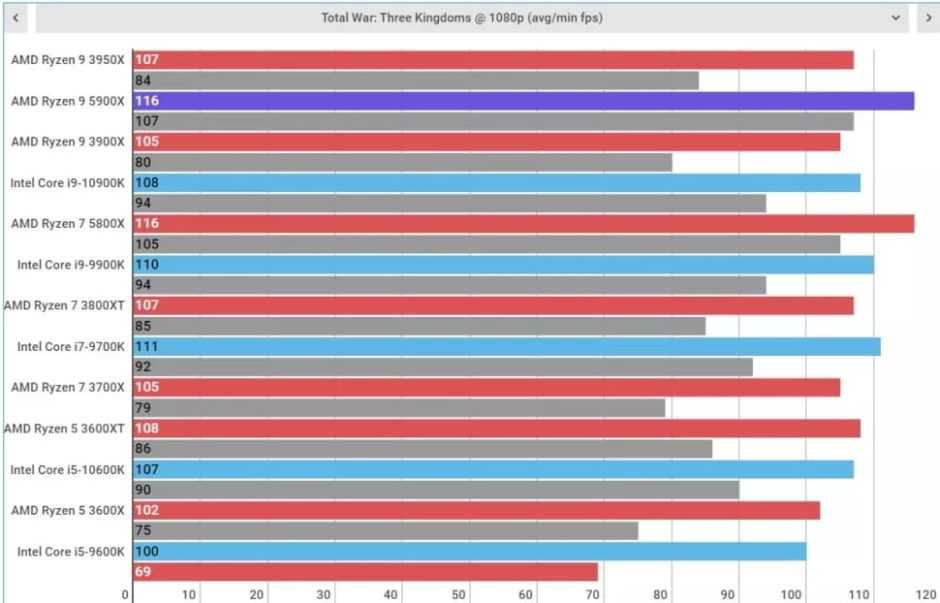 Starting as a licensed chip manufacturer for giants like Intel, it wasn’t a big name in the Silicon space for a while. It started making its own chips a bit after, but its first big break was when it introduced the first x86_64 chip in 2003, beating Intel to market. Since then, it has made some strides and started offering some competitive AMD processor options for buyers.
Starting as a licensed chip manufacturer for giants like Intel, it wasn’t a big name in the Silicon space for a while. It started making its own chips a bit after, but its first big break was when it introduced the first x86_64 chip in 2003, beating Intel to market. Since then, it has made some strides and started offering some competitive AMD processor options for buyers.
Intel and AMD share a cross-licensing agreement under which Intel lets AMD make x86 CPUs, and AMD lets Intel use its x86_64 instruction set. Smaller fabrication processes are crucial with regards to CPUs since they allow manufacturers to pack in more performance in the same space and with better power consumption efficiency. In recent years, Intel has failed to offer processors made with smaller fabrication processes.
As a result, AMD has started gaining market share with its CPUs, especially with the Ryzen range. While AMD offers a much more streamlined processor lineup than Intel, you may still need help understanding its offerings and picking the best AMD CPU for you.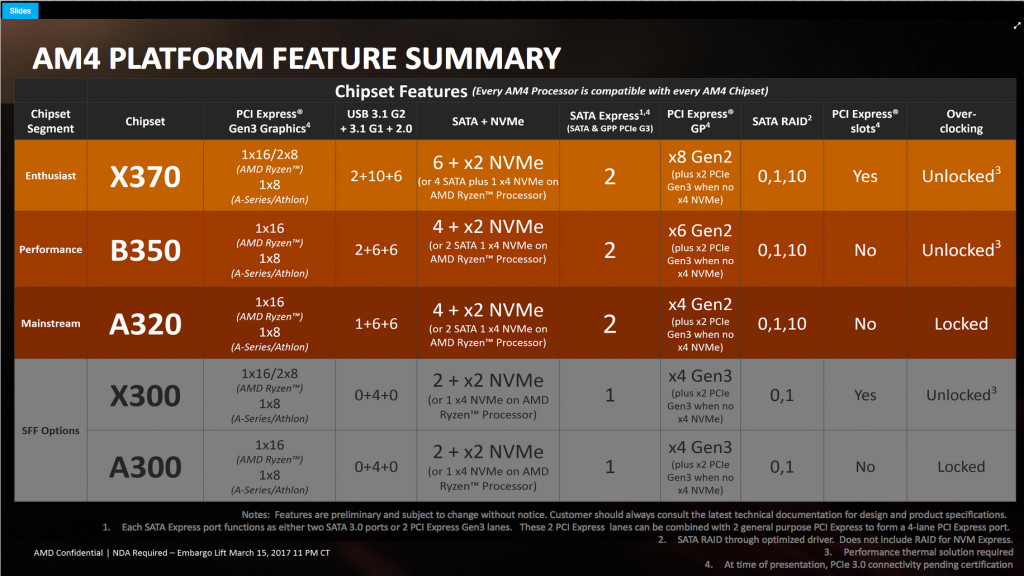 Here’s our AMD CPU guide to help you with that.
Here’s our AMD CPU guide to help you with that.
More: AMD vs Intel: Which one is better?
AMD CPU vs APU, and processor naming conventions
AMD’s naming convention for its processors is not very complicated. AMD offers two types of processors — CPUs and APUs. An APU, or an Accelerated Processing Unit, is just a marketing name that AMD uses for its CPUs that have integrated Radeon graphics. For the Ryzen lineup, the naming system includes the brand name and tier followed by the SKU number, and optionally, a suffix. The SKU number is four-digit and depends on the series.
While there have been five generations of Ryzen CPUs, there have been six series in total — 1000, 2000, 3000, 4000, 5000, and 6000. That’s because AMD used the last Zen 3 architecture for two series — 4000 and 5000. The 4000 series was entirely an APU lineup, and available only in laptops and OEM systems, unlike the 5000 series. The Zen 3 Plus-based 6000 series is again laptop-only.
The SKU number begins with the first number of the series, making it easy to identify the processor. The second digit is a performance identifier; the higher, the better. AMD uses suffixes after the SKU number to help identify the other features of its processors. Here’s a legend to the AMD processor SKU suffixes.
| Suffix | Meaning |
|---|---|
|
G |
Has integrated AMD Radeon Vega Graphics |
|
GE |
Has integrated AMD Radeon Vega Graphics but lower TDP |
|
X |
Higher clocked desktop processor |
|
XT |
Higher clocked desktop processor with higher performance than X |
|
S |
Low TDP desktop processor with integrated AMD Radeon Vega Graphics |
|
H |
High-performance mobile processors with integrated AMD Radeon Vega Graphics |
|
HS |
High-performance laptop processors with integrated AMD Radeon Vega Graphics and lower TDP |
|
U |
Lower TDP and lower clocked mobile processors |
|
AF |
First-gen Zen SKUs with 12nm process upgrade |
AMD Ryzen series processors
AMD Ryzen is the company’s most popular processor lineup of all time. After a rather low-key run in the market for a few years, AMD debuted its brand new Zen architecture with the Ryzen series of CPUs. Released in 2017, it has quickly become a solid alternative to Intel’s Core lineup. The Ryzen lineup is now four generations down.
After a rather low-key run in the market for a few years, AMD debuted its brand new Zen architecture with the Ryzen series of CPUs. Released in 2017, it has quickly become a solid alternative to Intel’s Core lineup. The Ryzen lineup is now four generations down.
Just like Intel’s Core series, Ryzen also has four tiers, Ryzen 3, 5, 7, and 9. AMD Ryzen desktop chips are now at 7nm, while the laptop chips are at 6nm, both using TSMC’s manufacturing, compared to Intel’s 10nm process. It has also been making strides with its architectural improvements. This has strengthened AMD Ryzen CPUs as the preferred CPU choices you can make in several price brackets.
AMD Ryzen 3 CPUs
AMD Ryzen 3 is the most affordable of the Ryzen series. The company offers some solid performance with these chips, though, and they fit well into budget performance PCs. Ryzen 3 chips are a good fit for affordable gaming PC builds, home PCs that can handle the basics with ease, or something like a budget HTPC.
The current Ryzen 3 lineup has a few interesting options. Like mentioned before, the Zen 3-based 4000 series Ryzen lineup only had APU options. With the 5000 series, AMD has done the same for the Ryzen 3 series. Ryzen 3 series now has only two APU options with the latest generation architecture. Ryzen 3 CPU options are only available with the older Zen 2-based Ryzen 3000 chips released in April 2020 — some of the last Zen 2 Ryzen CPU releases we saw. It makes sense that AMD would want to offer integrated graphics as a standard feature with Ryzen 3 chips since these are budget offerings.
If you want to buy the best AMD Ryzen 3 processor right now, the best option would be the AMD Ryzen 3 3300X. AMD hasn’t made a retail version of the Ryzen 3 with 5000 and 6000 series, so this is your best bet.
AMD Ryzen 3 3300X — Our AMD Ryzen 3 CPU recommendation
- 4 cores, 8 threads
- 3.8 GHz base clock
- 4.3 GHz boost clock
- L1/L2/L3 cache: 256KB/2MB/16MB
- Supports up to 3200 MHz DDR4 RAM
- 65W TDP
- MSRP: $120
AMD Ryzen 5 CPUs
AMD Ryzen 5 is a solid middle-ground for those looking for a processor that can perform well without costing too much. It’s the best CPU series for most people. Ryzen 5 is perfect for mid-range systems like affordable workstations or gaming systems that don’t go all out. With the Zen 3 5000 series, Ryzen 5 got even more powerful. The single-core performance of these chips is on par with the most powerful Ryzen processors.
It’s the best CPU series for most people. Ryzen 5 is perfect for mid-range systems like affordable workstations or gaming systems that don’t go all out. With the Zen 3 5000 series, Ryzen 5 got even more powerful. The single-core performance of these chips is on par with the most powerful Ryzen processors.
AMD currently has three series 5000 CPU for the Ryzen 5, and two OEM-only APUs that fill out the lower end of the series. The Ryzen 5 lineup offers six cores and 12 threads across the board, except for Ryzen 5 5600GE APU, which is a four core, eight thread processor. The Ryzen 5 range is geared towards those looking for the most performance from a Ryzen 5 processor.
See also: AMD GPU guide
AMD Ryzen 5 5600X — Our AMD Ryzen 5 CPU recommendation
- 6 cores, 12 threads
- 3.7 GHz base clock
- 4.6 GHz boost clock
- L2/L3 cache: 3MB/32MB
- Supports up to 3200 MHz DDR4 RAM
- 65W TDP
- MSRP: $299
AMD Ryzen 7 CPUs
AMD Ryzen 7 is the former flagship CPU range from AMD. It offers high-performance processors for workstations, content creation rigs, and high-end gaming systems. If you’re looking for a high-end AMD Ryzen processor but don’t want to spend a ton on only the CPU, Ryzen 7 is the perfect choice.
It offers high-performance processors for workstations, content creation rigs, and high-end gaming systems. If you’re looking for a high-end AMD Ryzen processor but don’t want to spend a ton on only the CPU, Ryzen 7 is the perfect choice.
AMD’s streamlined lineup means you get a limited amount of options, as you do with Ryzen 5. With the Ryzen 7 5000 series, AMD offers three CPU options and two OEM-only APU options. The Ryzen 7 range is eight-core, 12-thread for all its offerings. It offers a higher maximum TDP at 105W to power all that extra silicon.
The latest offering, and our recommendation, is the Ryzen 7 5800X3D. It’s a revised version of the regular 5800X, except with thrice the amount of L3 cache. This shows in the performance, and makes this CPU the best Ryzen CPU for gaming from a performance per dollar perspective.
AMD Ryzen 7 5800X3D — Our AMD Ryzen 7 CPU recommendation
- 8 cores, 16 threads
- 3.4 GHz base clock
- 4.
 5 GHz boost clock
5 GHz boost clock - L2/L3 cache: 4MB/96MB
- Supports up to 3200 MHz DDR4 RAM
- 105W TDP
- MSRP: $449
AMD Ryzen 9 CPUs
AMD Ryzen 9 offers the maximum performance in the Ryzen series. It’s the flagship lineup of the Ryzen brand, and it packs in just about all the features you could get from a consumer CPU at this point. For gaming systems and content creation rigs made to handle the most intense workloads, Ryzen 9 is the right choice.
High-performance CPUs are unlikely to be used without a dedicated GPU. Thus, AMD has no APU options in the Ryzen 9 lineup. AMD offers three CPU options, with different core configurations. You can either go for a 12-core, 24-thread CPU or max it out with the 16-core, 32-thread option.
AMD Ryzen 9 5950X — Our AMD Ryzen 9 CPU recommendation
- 16 cores, 32 threads
- 3.4 GHz base clock
- 4.9 GHz boost clock
- L2/L3 cache: 8MB/64MB
- Supports up to 3200 MHz DDR4 RAM
- 105W TDP
- MSRP: $799
AMD Ryzen Threadripper series processors
AMD’s high-performance lineup doesn’t stop at the Ryzen 9 series. AMD Ryzen Threadripper has some of the beefiest and most insanely overpowered processors you can buy. AMD calls it the most powerful desktop processor in the world. It certainly backs that claim with the level of performance it offers.
While AMD’s Ryzen chips max out at a 105W TDP, AMD doesn’t hold back with the Ryzen Threadripper lineup. You get a max TDP of up to 280W, and a whopping 64 cores and 128 threads. Ryzen Threadripper processors are also quite huge in size compared to the Ryzen chips. The extra room goes for all the additional silicon and core configurations.
See also: Arm vs x86 — Everthing you need to know
Currently, you only get Zen 2-based 3000 series Threadripper processors. These are very powerful and use the 7nm TSMC process. Threadipper got a Zen 3 refresh, but all the offerings are OEM-only for now, and you can’t purchase them directly.
AMD Ryzen Threadripper 3970X — Our AMD Ryzen Threadripper CPU recommendation
- 32 cores, 64 threads
- 3.
7 GHz base clock
- 4.5 GHz boost clock
- L1/L2/L3 cache: 2MB/16MB/128MB
- Supports up to 3200 MHz DDR4 RAM
- 280W TDP
- MSRP: $1,999
AMD Athlon series processors
AMD Athlon was the Intel Pentium-equivalent brand of yesteryear. The company now uses the brand to fill out the lower end of the budget PC market. Athlon is a great choice for super low-budget builds that need to do the bare basics, like web browsing. AMD now only offers APUs in the Athlon lineup. It has two tiers, Gold and Silver, but those are only meant for OEM systems. For the consumers, you get only one retail version.
AMD Athlon 3000G — Our AMD Althon processor recommendation
- 2 cores, 4 threads
- 3.5 GHz base clock
- L1/L2/L3 cache: 192KB/1MB/4MB
- Supports up to 2933 MHz DDR4 RAM
- Radeon Vega 3 graphics
- 35W TDP
- MSRP: $49.99
AMD Pro, Epyc, embedded, and FX-series processors
AMD has few other processor lineups that target the enterprise end of the market. While AMD’s consumer strategy works well for it, it has also made some serious strides in the enterprise space.
AMD Pro processors
AMD Pro is actually an umbrella brand for several series of AMD processors meant for the enterprise market. Ryzen, Threadripper, and Athlon all have their own Pro series offerings. AMD promises a focus on security with these processors. Security features include AMD Memory Guard for real-time encryption of system memory and AMD Shadow Stack hardware-level protection against control-flow attacks. There are also more implementations from OEMs and some OS-level features in Windows 10. You also get enterprise-grade support.
AMD Epyc processors
AMD Epyc is the company’s lineup of server CPUs, available only in OEM server systems. The Epyc lineup takes the capabilities you can see in the Threadripper series and scales it up to meet the heavy requirements of the server market. AMD has two series in the EPYC lineup, the 7002 series, and the 7003 series. The AMD Epyc 7002 series is the Zen 2-based platform, and the 7003 is the latest Zen 3-based server CPU lineup. You get up to 64 cores and 128 threads, and TDPs go up to 280W.
AMD embedded processors
AMD also offers embedded solutions for a variety of low-power and space-constrained applications. AMD’s Epyc and Ryzen platforms both have embedded versions. Epyc has three embedded chip series — 3000 series for affordable server applications, the 7001 series based on Zen architecture, and the 7002 series based on Zen 2. There’s no Zen 3 embedded Epyc series yet. Ryzen gets multiple embedded CPU lineups, with the most prominent ones being the performance-focused R-series and the low-power G-series.
More: What is an SoC? Everything you need to know
The future of AMD processors
AMD seems prepared on all fronts when it comes to its processor strategy. It has a more streamlined set of offerings than Intel, as seen in this AMD CPU guide. It is quickly becoming the preferred CPU brand for more and more folks. AMD has no plans of slowing down. Despite the disruption of the global semiconductor supply chain, TSMC has announced that it’s on track for its 4nm and 3nm processes to hit in 2022, with 2nm in development. AMD is likely to be on board for the ride. We can see it go to smaller and smaller manufacturing processes in the coming years as Intel tries to catch up.
There are already rumors about future AMD processor generations on these smaller processes. AMD is inching closer to releasing the Zen 4-based Ryzen 7000 series, which will use TSMC’s 5nm process. Even if you choose to ignore the possible future prospects, AMD is doing pretty well. The 5000 series Ryzen CPUs are some of the best value you can get right now, and AMD’s sales show that the consumer market is swaying towards team red’s offerings.
AMD has also recently acquired Xilinx — a big name in the FPGA and networking business. That’s a potential goldmine for AMD in terms of diversification. AMD has had a flip-flop pattern in the past, where they do well for a few years but then lose steam. However, it has never bounced up this well, and if it keeps doing what it has been doing in recent years, there’s no stopping AMD. For consumers, that can only be a good thing as Intel is also competing harder, now that the stakes are higher than ever.
Next up: The global computer chip shortage explained
List of AMD Ryzen 5 processors
|
|
|
|
|
List of AMD Ryzen 5 processors
Here is the list of chips for the group of processors AMD Ryzen 5 with the basic technical details. As well as a link to their respective global characteristics.
Note: Commissions may be earned from the link above.
Processors:
| AMD Ryzen 5 PRO 5675U | 2022 Q1 | 7 nm | 6 | 12 | 2300 | 4300 | 16000 | 64000 | 12 | 15 |
| AMD Ryzen 5 PRO 5650U | 2021 Q2 | 7 nm | 6 | 12 | 2300 | 4200 | 16000 | 64000 | 12 | 15 |
| AMD Ryzen 5 PRO 5650GE | 2021 Q2 | 7 nm FinFET | 6 | 12 | 3400 | 4400 | 16000 | 64000 | 16 | 35 |
| AMD Ryzen 5 PRO 5650G | 2021 Q2 | 7 nm | 6 | 12 | 3900 | 4400 | 16000 | 64000 | 12 | 65 |
| AMD Ryzen 5 PRO 5645 | 2022 Q4 | 7 nm FinFET | 6 | 12 | 3700 | 4600 | 35000 | 128000 | 20 | 65 |
| AMD Ryzen 5 PRO 4650U | 2020 Q2 | 7 nm FinFET | 6 | 12 | 2100 | 4000 | 8000 | 32000 | 16 | 15 |
| AMD Ryzen 5 PRO 4650GE | 2020 Q3 | 7 nm FinFET | 6 | 12 | 3300 | 4200 | 8000 | 64000 | 12 | 35 |
| AMD Ryzen 5 PRO 4650G | 2020 Q3 | 7 nm FinFET | 6 | 12 | 3700 | 4200 | 8000 | 64000 | 12 | 65 |
| AMD Ryzen 5 PRO 4400G | 2020 Q3 | 7 nm | 6 | 12 | 3700 | 4200 | 8000 | 64000 | 12 | 65 |
| AMD Ryzen 5 PRO 3600 | 2019 Q3 | 7 nm FinFET | 6 | 12 | 3600 | 4200 | 32000 | 128000 | 20 | 65 |
| AMD Ryzen 5 PRO 3500U | 2019 Q2 | 12 nm | 4 | 8 | 2100 | 3700 | 4000 | 32000 | 12 | 15 |
| AMD Ryzen 5 PRO 3400GE | 2019 Q3 | 12 nm | 4 | 8 | 3300 | 4000 | 4000 | 64000 | 20 | 35 |
| AMD Ryzen 5 PRO 3400G | 2019 Q3 | 12 nm | 4 | 8 | 3700 | 4200 | 4000 | 64000 | 20 | 65 |
| AMD Ryzen 5 PRO 3350GE | 2020 Q3 | 12 nm | 4 | 4 | 3300 | 3900 | 4000 | 64000 | 12 | 35 |
| AMD Ryzen 5 PRO 3350G | 2020 Q3 | 12 nm | 4 | 8 | 3600 | 4000 | 4000 | 64000 | 12 | 65 |
| AMD Ryzen 5 PRO 2500U | 2018 Q2 | 14 nm | 4 | 8 | 2000 | 3600 | 4000 | 32000 | 12 | 15 |
| AMD Ryzen 5 PRO 2400GE | 2018 Q1 | 14 nm FinFET | 4 | 8 | 3200 | 3800 | 4000 | 64000 | 8 | 35 |
| AMD Ryzen 5 7600X | 2022 Q3 | 5 nm FinFET N5 | 6 | 12 | 4700 | 5300 | 32000 | 128000 | 24 | 105 |
| AMD Ryzen 5 6600U | 2022 Q1 | 6 nm | 6 | 12 | 2900 | 4500 | 16000 | 128000 | 20 | 28 |
| AMD Ryzen 5 6600HS | 2022 Q1 | 6 nm | 6 | 12 | 3300 | 4500 | 16000 | 128000 | 20 | 35 |
| AMD Ryzen 5 6600H | 2022 Q1 | 6 nm | 6 | 12 | 3300 | 4500 | 16000 | 128000 | 20 | 45 |
| AMD Ryzen 5 5625U | 2022 Q2 | 7 nm FinFET | 6 | 12 | 2300 | 4300 | 16000 | 64000 | 20 | 15 |
| AMD Ryzen 5 5625C | 2022 Q2 | 7 nm FinFET | 6 | 12 | 2300 | 4300 | 16000 | 64000 | 16 | 15 |
| AMD Ryzen 5 5600X | 2020 Q4 | 7 nm FinFET | 6 | 12 | 3700 | 4600 | 32000 | 128000 | 24 | 65 |
| AMD Ryzen 5 5600U | 2021 Q1 | 7 nm FinFET | 6 | 12 | 2300 | 4200 | 16000 | 32000 | 16 | 15 |
| AMD Ryzen 5 5600HS | 2021 Q1 | 7 nm FinFET | 6 | 12 | 3000 | 4200 | 16000 | 32000 | 12 | 35 |
| AMD Ryzen 5 5600H | 2021 Q1 | 7 nm FinFET | 6 | 12 | 3300 | 4200 | 16000 | 32000 | 12 | 45 |
| AMD Ryzen 5 5600GE | 2021 Q2 | 7 nm FinFET | 6 | 12 | 3400 | 4400 | 16000 | 128000 | 20 | 35 |
| AMD Ryzen 5 5600G | 2021 Q2 | 7 nm FinFET | 6 | 12 | 3900 | 4400 | 16000 | 128000 | 20 | 65 |
| AMD Ryzen 5 5600 | 2022 Q2 | 7 nm FinFET | 6 | 12 | 3500 | 4400 | 32000 | 128000 | 24 | 65 |
| AMD Ryzen 5 5560U | 2021 Q1 | 7 nm FinFET | 6 | 12 | 2300 | 4000 | 8000 | 64000 | 16 | 15 |
| AMD Ryzen 5 5500U | 2021 Q1 | 7 nm FinFET | 6 | 12 | 2100 | 4000 | 8000 | 32000 | 12 | 15 |
| AMD Ryzen 5 5500 | 2022 Q2 | 7 nm FinFET | 6 | 12 | 3600 | 4200 | 16000 | 128000 | 24 | 65 |
| AMD Ryzen 5 4680U | 2021 Q2 | 7 nm FinFET | 6 | 12 | 2100 | 4000 | 8000 | 32000 | 16 | 15 |
| AMD Ryzen 5 4600U | 2020 Q1 | 7 nm FinFET | 6 | 12 | 2100 | 4000 | 8000 | 32000 | 12 | 15 |
| AMD Ryzen 5 4600HS | 2020 Q1 | 7 nm FinFET | 6 | 12 | 3000 | 4000 | 8000 | 32000 | 12 | 35 |
| AMD Ryzen 5 4600H | 2020 Q1 | 7 nm FinFET | 6 | 12 | 3000 | 4000 | 8000 | 32000 | 12 | 45 |
| AMD Ryzen 5 4600G | 2020 Q3 | 7 nm FinFET | 6 | 12 | 3700 | 4200 | 8000 | 64000 | 24 | 65 |
| AMD Ryzen 5 4500U | 2020 Q1 | 7 nm FinFET | 6 | 6 | 2300 | 4000 | 8000 | 32000 | 12 | 15 |
| AMD Ryzen 5 4500 | 2022 Q2 | 7 nm FinFET | 6 | 12 | 3600 | 4100 | 8000 | 128000 | 24 | 65 |
| AMD Ryzen 5 3600XT | 2020 Q3 | 7 nm FinFET | 6 | 12 | 3800 | 4500 | 32000 | 128000 | 20 | 95 |
| AMD Ryzen 5 3600X | 2019 Q3 | 7 nm FinFET | 6 | 12 | 3800 | 4400 | 32000 | 128000 | 20 | 95 |
| AMD Ryzen 5 3600 | 2019 Q3 | 7 nm FinFET | 6 | 12 | 3600 | 4200 | 32000 | 128000 | 20 | 65 |
| AMD Ryzen 5 3580U | 2019 Q4 | 12 nm | 4 | 8 | 2100 | 3700 | 4000 | 32000 | 12 | 15 |
| AMD Ryzen 5 3550U | 2020 Q1 | 12 nm | 4 | 8 | 2100 | 3700 | 4000 | 32000 | 12 | 35 |
| AMD Ryzen 5 3550H | 2019 Q1 | 12 nm | 4 | 8 | 2100 | 3700 | 4000 | 32000 | 12 | 35 |
| AMD Ryzen 5 3500X | 2019 Q4 | 7 nm FinFET | 6 | 6 | 3600 | 4100 | 32000 | 128000 | 16 | 65 |
| AMD Ryzen 5 3500U | 2019 Q1 | 12 nm | 4 | 8 | 2100 | 3700 | 4000 | 32000 | 12 | 15 |
| AMD Ryzen 5 3500C | 2020 Q3 | 12 nm | 4 | 8 | 2100 | 3700 | 4000 | 32000 | 12 | 15 |
| AMD Ryzen 5 3500 | 2019 Q4 | 7 nm FinFET | 6 | 6 | 3600 | 4100 | 16000 | 128000 | 20 | 65 |
| AMD Ryzen 5 3450U | 2020 Q4 | 12 nm | 4 | 8 | 2100 | 3500 | 4000 | 32000 | 12 | 15 |
| AMD Ryzen 5 3400G | 2019 Q3 | 12 nm | 4 | 8 | 3700 | 4200 | 4000 | 64000 | 12 | 65 |
| AMD Ryzen 5 3350GE | 2020 Q3 | 12 nm | 4 | 8 | 3300 | 3900 | 4000 | 64000 | 12 | 65 |
| AMD Ryzen 5 3350G | 2020 Q4 | 12 nm | 4 | 8 | 3600 | 4000 | 4000 | 64000 | 12 | 65 |
| AMD Ryzen 5 2600X | 2018 Q2 | 12 nm | 6 | 12 | 3600 | 4200 | 16000 | 64000 | 20 | 95 |
| AMD Ryzen 5 2600 | 2018 Q2 | 12 nm | 6 | 12 | 3400 | 3900 | 16000 | 64000 | 20 | 65 |
| AMD Ryzen 5 2500X | 2018 Q3 | 12 nm | 4 | 8 | 3600 | 4000 | 8000 | 64000 | 20 | 65 |
| AMD Ryzen 5 2500U | 2017 Q4 | 14 nm | 4 | 8 | 2000 | 3600 | 4000 | 32000 | 12 | 15 |
| AMD Ryzen 5 2400GE | 2018 Q1 | 14 nm FinFET | 4 | 8 | 3200 | 3800 | 4000 | 64000 | 8 | 35 |
| AMD Ryzen 5 2400G | 2018 Q1 | 14 nm | 4 | 8 | 3600 | 3900 | 16000 | 64000 | 12 | 65 |
| AMD Ryzen 5 1600X | 2017 Q1 | 14 nm | 6 | 12 | 3600 | 4000 | 16000 | 64000 | 24 | 95 |
| AMD Ryzen 5 1600 AF | 2020 Q1 | 12 nm | 6 | 12 | 3200 | 3600 | 16000 | 64000 | 20 | 65 |
| AMD Ryzen 5 1600 | 2017 Q1 | 14 nm | 6 | 12 | 3200 | 3600 | 16000 | 64000 | 20 | 65 |
| AMD Ryzen 5 1500X | 2017 Q2 | 14 nm | 4 | 8 | 3500 | 3700 | 16000 | 64000 | 20 | 65 |
| AMD Ryzen 5 1400 | 2017 Q2 | 14 nm | 4 | 8 | 3200 | 3400 | 8000 | 64000 | 20 | 65 |
Specifications and performance of the AMD Ryzen 5 processors
How to pick the right AMD Ryzen CPU for your PC
AMD Ryzen 5 2600
Intel and AMD share a similar model-naming scheme. The two main families of processors — Core and Ryzen, respectively — use 3, 5, 7, and 9 to differentiate the CPUs. The lower the number, the less capable the processor usually is. A Ryzen 3 processor won’t be able to outpace a Ryzen 7, for example. And just like Intel, AMD keeps everything simple by only using a few model numbers, as well as the «X» suffix.
All you need to know about AMD Ryzen
Source: Rich Edmonds / Windows Central (Image credit: Source: Rich Edmonds / Windows Central)
AMD’s Zen architecture brought an array of new processors to consumers on the desktop. Here’s what you need to know about this line of Ryzen CPUs, as well as what this all meant for the PC market. Even though we’re on Zen 3 and 5000 series CPUs from AMD, there’s much to learn about the architecture and how the company managed to hit back at Intel.
Find out more about AMD’s latest CPUs
Here’s a quick breakdown of the different AMD Ryzen processor brackets:
- Ryzen 3 — Up to 4-core processors.
- Ryzen 5 — Up to 6-core processors.
- Ryzen 7 — Up to 8-core processors.
- Ryzen 9 — Up to 16-core processors.
- Threadripper — Up to 64-core processors.
Within each bracket, the processors are named by model number — the higher the model number, the more powerful the CPU. For example, a Ryzen 3 1200 is less powerful than a Ryzen 3 1300X and a Ryzen 5 5600X. An X suffix simply means it’s a slightly faster version of that model from the factory. So, the Ryzen 7 1800X is stronger than the Ryzen 7 1800. The differences aren’t huge and only represent a slight increase in factory-set clock speeds.
Ryzen CPUs that start with the number two are Zen+ processors (2000 series), released in 2018. Third generation CPUs (3000 series) using Zen 2 were released in 2019. Zen 3 CPUs (5000 series) arrived in 2020. And those with a G suffix for graphics include Vega video processing, much like the majority of Intel CPUs. That means you can run a system without a dedicated video card. The Ryzen 5 2400G is one such CPU.
All AMD Ryzen CPUs use the same socket AM4. Generation 1 and 2 Threadrippers use a unique TR4 socket, while gen 3 Threadrippers use TRX4. To recap all of the above:
Picking the right CPU for your PC
Source: Rich Edmonds / Windows Central (Image credit: Source: Rich Edmonds / Windows Central)
Ryzen 3
Ryzen 3 is designed for budget-friendly PC builds and consumers who don’t use their PCs for intensive applications. That said, the processors are all quad-core, sporting four physical cores, and as such, they aren’t slouching. You’d be able to build a capable gaming rig that can handle even big games.
AMD Ryzen 3 3600X
The Ryzen 3 3200G is a cracking entry-level CPU from AMD with integrated graphics processing. Not only do you not require an external GPU to get any output to a monitor, but the 3200G is a quad-core CPU with a boost of up to 3. 7GHz.
3000 Series
Ryzen 3
| Category | 3100 | 3200G |
|---|---|---|
| Cores | 4 | 4 |
| Threads | 8 | 4 |
| Clock speed Boost |
3.6 GHz 3.9 GHz |
3.6 GHz 4.0 GHz |
| Cache | 2 MB 16 MB |
2 MB 4 MB |
| GPU | — | Vega 8 |
| TDP | 65 W | 65 W |
| Price | $120 | $100 |
2000 Series
Ryzen 3
| Category | 2200GE | 2200G |
|---|---|---|
| Cores | 4 | 4 |
| Threads | 4 | 4 |
| Clock speed Boost |
3.2GHz 3.6 GHz |
3.5GHz 3.7 GHz |
| Cache | 2 MB 4 MB |
2 MB 4 MB |
| GPU | Vega 8 | Vega 8 |
| TDP | 35W | 65W |
| Price | — | $85 |
1000 Series
Ryzen 3
| Category | 1200 | 1300X |
|---|---|---|
| Cores | 4 | 4 |
| Threads | 4 | 4 |
| Clock speed Boost |
3. 3.4 GHz |
3.5GHz 3.7 GHz |
| Cache | 2 MB 8 MB |
2 MB 8 MB |
| GPU | — | — |
| TDP | 65W | 65W |
| Price | $68 | $125 |
AMD’s latest 3000 series comes rocking a boost clock speed of 4.0GHz, allowing you to get more done at the same affordable price.
Ryzen 5
Ryzen 5 is where things get interesting for AMD processors. These CPUs are priced aggressively to take on the popular Intel Core i5 family and are incredible for gaming. These processors are a mix of quadcore and hexacore processors, packing more than enough power for video editing and other intense workloads.
AMD Ryzen 5 5600X
The Ryzen 5 5600X is the perfect mid-tier processor for gamers and those who need a capable CPU in general. It’s also friendly to those who want to do a little overclocking, so long as your motherboard is also up to the task.
5000 Series
Ryzen 5 5600X
| Category | 5600X |
|---|---|
| Cores | 6 |
| Threads | 12 |
| Clock speed Boost |
3.7 GHz 4.6 GHz |
| Cache | 3 MB 32 MB |
| GPU | — |
| TDP | 65 W |
| Price | $299 |
3000 Series
Ryzen 5
| Category | 3400G | 3600 | 3600X |
|---|---|---|---|
| Cores | 4 | 6 | 6 |
| Threads | 8 | 12 | 12 |
| Clock speed Boost |
3.7 GHz 4.2 GHz |
3.6 GHz 4.2 GHz |
3.8 GHz 4.4 GHz |
| Cache | 2 MB 4 MB |
3 MB 32 MB |
3 MB 32 MB |
| GPU | Vega 11 | — | — |
| TDP | 65 W | 65 W | 95 W |
| Price | $147 | $175 | $205 |
2000 Series
Ryzen 5
| Category | 2400G | 2500X | 2600 | 2600X |
|---|---|---|---|---|
| Cores | 4 | 4 | 6 | 6 |
| Threads | 8 | 8 | 12 | 12 |
| Clock speed Boost |
3. 3.9 GHz |
3.6 GHz 4.2 GHz |
3.2 GHz 3.6 GHz |
3.6 GHz 4.2 GHz |
| Cache | 2 MB 4 MB |
3 MB 16 MB |
3 MB 16 MB |
3 MB 16 MB |
| GPU | Vega 11 | — | — | — |
| TDP | 65 W | 95 W | 65 W | 95 W |
| Price | $126 | — | $140 | $160 |
1000 Series
Ryzen 5
| Category | 1400 | 1500X | 1600 | 1600X |
|---|---|---|---|---|
| Cores | 4 | 4 | 6 | 6 |
| Threads | 8 | 8 | 8 | 12 |
| Clock speed Boost |
3.2 GHz 3.4 GHz |
3.2 GHz 3.4 GHz |
3.5 GHz 3.7 GHz |
3.4 GHz 3.9 GHz |
| Cache | 2 MB 8 MB |
2 MB 8 MB |
2 MB 16 MB |
3 MB 16 MB |
| GPU | — | — | — | — |
| TDP | 65 W | 65 W | 65 W | 95 W |
| Price | $126 | $138 | $117 | $146 |
The new 3400G and 3600X processors are some pretty hot chips. You’ve got the latest Vega 11 in the former, while the latter comes with a whopping 32MB of L3 cache, making it ideal for intense workloads.
Ryzen 7
Much like the Core i7 Intel processors, the Ryzen 7 family may be overkill for most people, but it allows for advanced computing at a somewhat affordable price point. If you happen to have a capable GPU, you may find some benefit in picking up a Ryzen 7 CPU.
AMD Ryzen 7 5800X
For Ryzen 7, the new 5800X is an excellent CPU. Eight cores and 16 threads make easy work of most tasks thrown at the CPU, and it’s unlocked for additional headroom should you have adequate cooling.
5000 Series
Ryzen 7 5800X
| Category | 5800X |
|---|---|
| Cores | 8 |
| Threads | 16 |
| Clock speed Boost |
3.0 GHz 3.7GHz |
| Cache | 4 MB 16 MB |
| GPU | — |
| TDP | 65 W |
| Price | $449 |
3000 Series
Ryzen 7
| Category | 3700X | 3800X |
|---|---|---|
| Cores | 8 | 8 |
| Threads | 16 | 16 |
| Clock speed Boost |
3. 4.4GHz |
3.9GHz 4.5GHz |
| Cache | 4 MB 32 MB |
4 MB 32 MB |
| GPU | — | — |
| TDP | 65W | 105W |
| Price | $299 | $340 |
2000 Series
Ryzen 7
| Category | 2700 | 2700X |
|---|---|---|
| Cores | 8 | 8 |
| Threads | 16 | 16 |
| Clock speed Boost |
3.2GHz 4.1GHz |
3.7GHz 4.3GHz |
| Cache | 4 MB 16 MB |
4 MB 16 MB |
| GPU | — | — |
| TDP | 65W | 105W |
| Price | $200 | $260 |
1000 Series
Ryzen 7
| Category | 1700 | 1700X | 1800X |
|---|---|---|---|
| Cores | 8 | 8 | 8 |
| Threads | 16 | 16 | 16 |
| Clock speed Boost |
3. 3.7GHz |
3.4GHz 3.8GHz |
3.6GHz 4.0GHz |
| Cache | 4 MB 16 MB |
4 MB 16 MB |
4 MB 16 MB |
| GPU | — | — | — |
| TDP | 65W | 95W | 95W |
| Price | $220 | $190 | $240 |
The new 3700X and 3800X are for serious productivity. A massive 32MB of L3 cache is joined by high clock speeds and great overclock support, particularly in the more pricy 3800X.
Ryzen 9
The Ryzen 9 family is AMD’s latest batch of computing magic, packing in up to 12 cores and 24 threads and are a great middle-ground between the Ryzen 7 and Threadripper.
AMD Ryzen 9 5900X
The Ryzen 9 family of CPUs is a new addition to AMD’s desktop processor lineup, offering amazing performance levels with up to 16 cores and 32 threads. Perfect for serious workloads.
5000 Series
Ryzen 9
| Category | 5900X | 5950X |
|---|---|---|
| Cores | 12 | 16 |
| Threads | 24 | 32 |
| Clock speed Boost |
3.8 GHz 4.7GHz |
3.4 GHz 4.9GHz |
| Cache | 6 MB 64 MB |
8 MB 64 MB |
| GPU | — | — |
| TDP | 105W | 105W |
| Price | $549 | $799 |
3000 Series
Ryzen 9
| Category | 3900X | 3950X |
|---|---|---|
| Cores | 12 | 16 |
| Threads | 24 | 32 |
| Clock speed Boost |
3.8GHz 4.6GHz |
3.5GHz 4.7GHz |
| Cache | 6 MB 64 MB |
8 MB 64 MB |
| GPU | — | — |
| TDP | 105W | 105W |
| Price | $450 | $738 |
These new processors are exactly what gamers, streamers, and content creators need for optimal performance. Taking on Intel’s Core i9 range, AMD is going all out in the war for system builders.
Threadripper
You probably won’t need a Threadripper CPU, but it’ll be awesome to have one. It’s for advanced users only who need to push their systems beyond their limits. I’m talking up to 64 cores and 128 threads.
AMD Threadripper 3990X
Ryzen Threadripper is the range-topping family of CPUs from AMD. The 3990X is the king of Threadripper CPUs, rocking a whopping 64 cores and 128 threads.
3000 Series
Threadripper
| Category | 3960X | 3970X | 3990X |
|---|---|---|---|
| Cores | 24 | 32 | 64 |
| Threads | 48 | 64 | 128 |
| Clock speed Boost |
3.8GHz 4.5 GHz |
3.7GHz 4.5 GHz |
2.9GHz 4.3 GHz |
| Cache | 14 MB 128 MB |
19 MB 128 MB |
36 MB 256 MB |
| GPU | — | — | — |
| TDP | 280W | 280W | 280W |
| Price | $1,450 | $1,960 | $3,900 |
2000 Series
Threadripper
| Category | 2920X | 2950X | 2970WX | 2970WX |
|---|---|---|---|---|
| Cores | 12 | 16 | 24 | 32 |
| Threads | 24 | 32 | 48 | 64 |
| Clock speed Boost |
3. 4.3 GHz |
3.5GHz 4.4 GHz |
3.0GHz 4.2 GHz |
3.0GHz 4.2 GHz |
| Cache | 4 MB 32 MB |
6 MB 32 MB |
8 MB 32 MB |
|
| GPU | — | — | — | — |
| TDP | 180W | 180W | 250W | 250W |
| Price | $400 | $687 | $950 | $1,540 |
1000 Series
Threadripper
| Category | 1900X | 1920X | 1950X |
|---|---|---|---|
| Cores | 8 | 12 | 16 |
| Threads | 16 | 24 | 32 |
| Clock speed Boost |
3.8GHz 4.0 GHz |
3.5GHz 4.0 GHz |
3.5GHz 4.0 GHz |
| Cache | 4 MB 32 MB |
6 MB 32 MB |
8 MB 32 MB |
| GPU | — | — | — |
| TDP | 180W | 180W | 180W |
| Price | $300 | $620 | $700 |
What do you get with the 3000 series Threadripper processors? Aside from excellent choice, you can go all out with up to 64 cores and 128 threads. If you need some serious computing performance, these are the chips for you.
The choice is yours
Which processor is perfect for your build depends on what you’ll need the PC to do, as well as how much money is available. We rounded up the best processors for building a PC on different budgets.
The best CPUs for your desktop PC
Source: Rich Edmonds / Windows Central (Image credit: Source: Rich Edmonds / Windows Central)
When looking for a new CPU, it’s easy to automatically go for the more expensive options expecting a return in performance, and you’d be correct in that assumption. However, the question is whether or not you need that kind of power and whether or not you really need to pay that much. See our collection of the best options based on several performance and price points.
Best CPUs for your next PC build
Other than that, the rule of thumb is to spend as much as you can, within reason. It’s better to purchase a Ryzen 7 instead of a Ryzen 3 and then have to upgrade sooner, which will cost more in the long run.
Rich Edmonds is Senior Editor of PC hardware at Windows Central, covering everything related to PC components and NAS. He’s been involved in technology for more than a decade and knows a thing or two about the magic inside a PC chassis. You can follow him over on Twitter at @RichEdmonds.
List of AMD APUs (with integrated graphics)
List of AMD APUs (with integrated graphics)
AMD APUs are processors with integrated graphics. That is, under the processor cover, in addition to the computing crystal itself, there is a graphics core that performs the functions of a video card. Such a processor does not need a separate video card to display an image, and the connection to the monitor is made through a connector on the motherboard. It is worth considering that the graphics core of the processor does not have a separate video memory, and for these needs the system allocates a certain amount from the RAM. Therefore, the performance of the graphics core largely depends on the frequency of the RAM (higher-higher), which means that when assembling such a computer on RAM, you should pay special attention.
The integrated graphics core uses the same graphics driver as conventional graphics cards. On our website you can —————————————————————————————— GE versions — energy efficient, low heat PRO versions — provide increased security data CPUMark — processor performance rating in points. It can be used to roughly compare the capabilities of different models. The rating is the same for all generations of AMD and Intel processors.
List of AMD APUs from latest to oldest: 98/16
.
9000 9000 List of hybrid processors AMD RYZEN 4000. Socket AM4
| 0022 | 65 | ||||||
| Ryzen7 PRO_4750GE | Zen2 (7mn) | 8/16 | 3,1/4,3Ghz | 4/8Mb 19765 | DDR4 3200 | Vega8 2,1 | 35 |
| Ryzen7 4700G | Zen2 (7mn) | 8/16 | 3,6/4,4Ghz | 4/8Mb 19904 | DDR4 3200 | Vega8 2,1 | 65 28570 |
| Ryzen7 4700GE | Zen2 (7mn) | 8/16 | 3,1/4,3Ghz | 4/8Mb 20648 | DDR4 3200 | Vega8 2,0 | 35 |
| Ryzen5 PRO_4650G | Zen2 (7mn) | 6/12 | 3,7/4,2Ghz | 3/8Mb 16528 | DDR4 3200 | Vega7 1,9 | 65 |
| Ryzen5 PRO_4650GE | Zen2 (7mn) | 6/12 | 3. |
3/8Mb 15988 | DDR4 3200 | Vega7 1,9 | 35 |
| Ryzen5 4600G | Zen2 (7mn) | 6/12 | 3,7/4,2Ghz | 3 /8Mb 15730 | DDR4 3200 | Vega7 1,9 | 65 |
| Ryzen5 4600GE | Zen2 (7mn) | 6/12 | 3,3/4,2Ghz | 3/8Mb 16377 | DDR4 3200MHz | Vega7 1,9 | 35 |
| Ryzen3 PRO_4350G | Zen2 (7mn) | 4/8 | 3,8/4,0Ghz | 2/4Mb 10868 | DDR4 3200 | Vega6 1 ,7 | 65 |
| Ryzen3 PRO_4350GE | Zen2 (7mn) | 4/8 | 3,5/4,0Ghz | 2/4Mb 11420 | DDR4 3200 | Vega6 1,7 | 35W |
| Ryzen3 4300G | Zen2 (7mn) | 4/8 | 3,8/4,0Ghz | 2/4Mb 11314 | DDR4 3200 | Vega6 1,7 | 65 |
| Ryzen3 4300GE | Zen2 (7MN) | 4/8 | 3. |
2/4MB 11577 | DDR4 3200MHC | VEGA6 1.7GHC |
9000 9000 9000 9000 9000 9000 9000 9000 9000 9000 9000 9000 9000 9000 9000 9000 9000 9000 9000 9000 9000 9000 9000 9000 9000 9000 9000 9000 9000 9000 9000 9000 9000 9000 9000 9000 9000 9000 9000 9000 9000 9000 9000 9000 9000 9000 9000 9000 9000 9000 9000 9000 9000 9000 9000 9000 9000 9000 9000 series. Socket AM4
9000 9000 9000 9000 9000 9000 9000 9000 9000 9000 9000 9000 9000 9000 9000 9000 9000 9000 9000 9000 9000 9000 9000 9000 9000 9000 9000 9000 9000 9000 9000 9000 9000. socket AM4.
List of hybrid processors AMD A-series. socket AM4.
| Model | 65 | ||||||
| AMD_A12 9800 | Bristol Ridge(28nm) | 4/4 | 3,8/4,2Ghz | 2Mb/— 3175 | DDR4 2400 | R7 1,1Ghz | 65 |
| AMD_A12 9800E_PRO | Bristol Ridge(28nm) | 4/4 | 3,1/3,8Ghz | 2Mb/— 3186 | DDR4 2400 | R7 0,9Ghz | 35 |
| AMD_A12 9800E | Bristol Ridge(28nm) | 4/4 | 3,1/3,8Ghz | 2Mb/— 3410 — |
DDR4 2400 | R7 0,9Ghz | 35 |
| AMD_A10 9700_PRO | Bristol Ridge(28nm) | 4/4 | 3,5/3,8Ghz | 2Mb/— 3583 | DDR4 2400 | R7 1,0Ghz | 65 |
| AMD_A10 9700 | Bristol Ridge(28nm) | 4/4 | 3,5/3,8Ghz | 2Mb/— 3503 | DDR4 2400 | R7 1,0Ghz | 65 |
| AMD_A10 9700E_PRO | Bristol Ridge(28nm) | 4/4 | 3, 0/3. |
2MB/ — 3103 | DDR4 2400MHz | R7 0.8GHZ | |
| BRISTOL RIDGE (28NM) | 44 3.5Ghz | 2Mb/- 3103 | DDR4 2400 | R7 0,8Ghz | 35 | ||
| AMD_A8 9600_PRO | Bristol Ridge(28nm) | 4/4 | 3,1/3,4Ghz | 2Mb/— 3347 | DDR4 2400 | R7 0,9Ghz | 65 |
| AMD_A8 9600 | Bristol Ridge(28nm) | 4/4 | 3,1/3,4Ghz | 2Mb/— 3294 | DDR4 2400 | R7 0.9Ghz | 65W |
| AMD_A6 9550 | Bristol Ridge(28nm) | 2/2 | 3,8/4,0Ghz | 2Mb/— 1892 | DDR4 2400 | R5 1,0Ghz | 65 |
| AMD_A6 9500_PRO | Bristol Ridge(28nm) | 2/2 | 3,5/3,8Ghz | 2Mb/— 6272 | DDR4 2400 | R5 1,0Ghz | 65 |
| AMD_A6 9500 | Bristol Ridge(28nm) | 2/2 | 3,5/3,8Ghz | 2Mb/— 1836 | DDR4 2400 | R5 1,0Ghz | 65 |
| AMD_A6 9500E_PRO | Bristol Ridge(28nm) | 2/2 | 3. |
2MB/ — 1662 | DDR4 2400MHz | R5 0.8GHZ | 35W |
| AMD_A6 | BRISTOL RID ( 2 | 3.0/3.4Ghz | 2Mb/— 1841 | DDR4 2400 | R5 0,8Ghz | 35 | |
| AMD_A6 9400 | Bristol Ridge(28nm) | 2/2 | 3,4/3,7Ghz | 2Mb/— 2717 | DDR4 2400MHz | R5 0.8Ghz | 35W |
AMD A-series APU table list. Socket FM2 plus.
| Model | Architecture/Tech. process | cores (threads) | Basic frequency/turbo | cache L2/l3 | memory | TWD | GPU |
| A10-8750 | 4 | 3.0019 3.0019 3.0019 3.0019 3.0019 3.0019 3.0019 3.0019 3.0019 3.0019 3.6GH — | DDR3 2133 | 65 | RadeonR7 | ||
| A10-7890K | Kaveri (28nm) | 4 | 4,1Ghz/4,3Ghz | 4Mb/ — | DDR3 2133 | 95 | RadeonR7 |
| A10-7870K | Kaveri (28nm) | 4 | 3,9Ghz/4,1Ghz | 4Mb/ — | DDR3 2133 | 95 | RadeonR7 |
| A10-7860K | Kaveri (28nm) | 4 | 3. |
4MB/- | DDR3 2133 | 65 | Radeonr7 |
| A10-7850K | Kaveri (28nm) | 4Mb/ — | DDR3 2133 | 95 | RadeonR7 | ||
| A10-7850 | Kaveri (28nm) | 4 | 3,6Ghz/4,0Ghz | 4Mb/ — | DDR3 2133 | 65 | RadeonR7 |
| A10-7800 | Kaveri (28nm) | 4 | 3,5Ghz/3,9Ghz | 4Mb/ — | DDR3 2133 | 65 | RadeonR7 |
| A10-7700K | Kaveri (28nm) | 4 | 3.4Ghz/3.8Ghz | 4Mb/ — | DDR3 2133 | 95 | RadeonR7 |
| A8-8650 | Kaveri (28nm) | 4 | 3,2Ghz/3,9Ghz | 4Mb/ — | DDR3 2133 | 65 | RadeonR7 |
| A8-7670K | Kaveri (28nm) | 4 | 3,6Ghz/3,9Ghz | 4Mb/ — | DDR3 2133 | 95 | RadeonR7 |
| A8 -7650K | Kaveri (28nm) | 4 | 3. |
4MB/- | DDR3 2133 | 65 | RadeonR7 | A8-7600 | Kaveri (28nnm) | Kaveri (28nm) ,8Ghz | 4Mb/ — | DDR3 2133 | 65 | RadeonR7 |
| A4-7470K | Kaveri (28nm) | 2 | 3,7Ghz/4,0Ghz | 1Mb/ — | DDR3 2133 | 65 | RadeonR5 |
| A10-6800K | Richland (32nm) | 4 | 4,1Ghz/4,4Ghz | 4Mb/ — | DDR3 2133 | 100 | HD8670D |
| A10-6790K | Richland ( 32nm) | 4 | 4,0Ghz/4,3Ghz | 4Mb/ — | DDR3 2133 | 100 | HD8670D |
| A10-6700 | Richland (32nm) | 4 | 3,7Ghz /4.3Ghz | 4Mb/ — | DDR3 2133 | 65 | HD8670D |
| A10-6700T | Richland (32nm) | 4 | 2,5Ghz/3,5Ghz | 4Mb/ — | DDR3 2133 | 45 | HD8670D |
| A10-5800K | Trinity (32nm) | 4 | 3,8Ghz/4,2Ghz | 4Mb/ — | DDR3 2133 | 100 | HD7660D |
| A10-5700 | Trinity ( 32nm) | 4 | 3. |
4MB/- | DDR3 2133 | 65 | HD7660D | RICHLAND (32NM) | 4Mb/ — | DDR3 2133 | 100 | HD8570D |
| A8-6500 | Richland (32nm) | 4 | 3,5Ghz/4,1Ghz | 4Mb/ — | DDR3 2133 | 65 | HD8570D |
| A8-6500T | Richland (32nm) | 4 | 2,1Ghz/3,1Ghz | 4Mb/ — | DDR3 2133 | 45 | HD8570D |
| A8-5600K | Trinity (32nm) | 4 | 3.6GHZ/3.9GHZ | 4MB/- | DDR3 2133 | 100 | HD7560D | A8-55500 | TRINITY (32NM) | TRINITY (32NM) ,7Ghz | 4Mb/ — | DDR3 2133 | 65 | HD7560D |
| A6-6420K | Richland (32nm) | 2 | 4,0Ghz/4,2Ghz | 1Mb/ — | DDR3 2133 | 65 | HD8470D |
| A6-6400K | Richland (32nm) | 2 | 3,9Ghz/4,1Ghz | 1Mb/ — | DDR3 2133 | 65 | HD8470D |
| A4-7300 | Richland (32nm) | 2 | 3. |
1MB/- | DDR3 2133 | 65 | HD8470D |
| A4-6320 | Richland | 3,8GH / — | DDR3 2133 | 65 | HD8370D | ||
| A4-6300 | Richland (32nm) | 2 | 3,7Ghz/3,9Ghz | 1Mb/ — | DDR3 2133 | 65 | HD8370D |
| A4-5300 | Trinity (32nm) | 2 | 3,7Ghz/3,9Ghz | 1Mb/ — | DDR3 2133 | 65 | HD7480D |
| A4-4020 | Richland (32nm) | 2 | 3.0GHZ/3.2GHZ | 1MB/- | DDR3 2133 | 65 | HD7480D |
| A4000 | DDR3 2133 | 65 | HD7480D |
AMD A-series APU table list. Socket FM1.
| Model | Architecture/Tech. |
nuclei (flows) | Basic frequency/turbo | cache L2/L3 | memory | TWD | GPU | A8-3870K | LLANO 4 (42NM) | 4Mb/ — | DDR3 1866 | 100 | HD6550D | ||||||||||||||||||||||||||||||
| A8-3850 | LLANO (32NM) | 4 (4) | 2.9GHZ/ —- | 4MB/- | 100 | 100 | 100 | 100 | 100 | 100 | 100 | 100 | 100 | 100 | 100 | 100 | 100 | 100 | 3670K | LLANO (32NM) | 4 (4) | 2.7GHZ/ —- | 4MB/- | DDR3 1866 | 100 | HD6530D LLLANO | LLLAN | 4(4) | 2.6Ghz/ —- | 4Mb/ — | DDR3 1866 | 100 | HD6530D | ||||||||||
| A6-3500 | LLANO (32NM) | 3 (3) | 2. |
3MB/- | 3MB/- | 3MB/- | 3MB/ | HD6530D | |||||||||||||||||||||||||||||||||||
| A4-3400 | Llano(32nm) | 2(2) | 2,7Ghz/ —- | 1Mb/ — | DDR3 1600 | 65 | HD6410D | ||||||||||||||||||||||||||||||||||||
| A4- 3300 | Llano(32nm) | 2(2) | 2.5Ghz/ —- | 1Mb/ — | DDR3 1600 | 65 | HD6410D |
Information will be updated as processor generations are updated.
Integrated graphics Ryzen 3000 — drags or not?
Hello, dear readers of Uspei.com. The integrated graphics of the Ryzen 2000 processors, capable of running heavy modern games, managed to surprise everyone. Therefore, something outrageous was already expected from the Ryzen 3000 APU. Many dreamed of a miracle, but the miracle did not happen.
So, let’s figure out what happened to the new Ryzen 3 3200G and Ryzen 5 3400G . What alternatives do they have and what can they offer compared to their predecessors.
Comparison of processors
But first, let’s remember who hybrid processors with integrated graphics are designed for. Firstly, for those who assemble office or multimedia PCs. Games in this case are not a priority, but a nice bonus.
Another group of users who will be interested in such solutions are those who want to buy a processor now, but plan to take discrete graphics later. That is why AMD releases Ryzen APUs only for the budget segment.
The R3 3200G’s closest competitor is the Intel Core i3-8100. It also has 4 cores, 4 threads, but the price is higher, and the integrated graphics are frankly weaker.
Ryzen 5 3400G is still more difficult, it can be countered either by the same Core i3-8100 or more expensive i5-8400 and i5-9400 without the prefix F.
But the i3 loses both in terms of the number of threads and overall performance, and the i5, although faster, is noticeably more expensive. At the same time, the graphics subsystem of Intel processors is significantly inferior to even to the younger Ryzen 3 3200G.
And it turns out that only AMD’s own processors of the previous generation, 2200G and 2400G, can compete with the 3200G and 3400G. There are no alternatives, there is no need to overtake anyone.
Therefore, it is quite logical that the new processors, at least in terms of characteristics, are not far from the previous generation. The R3 3200G looks like a slightly overclocked 2200G. The base frequency increased by 100 MHz, and in boost by 300. And the built-in Vega 8 became 150 MHz faster.
Otherwise, the same number of cores, threads, the same amount of cache memory. Differences need to be literally dug in the specifications. By the way, the processors have a different technical process, and most importantly, a different architecture.
See also: Major 3DMark update, new CPU test tools
Note that all Ryzen hybrids with integrated graphics are based on the previous generation architecture. For 2200G it is first generation ZEN, and for 3200G — ZEN+ . This is honestly written even on the packaging. No Zen 2.
Ryzen 5 3400G is similarly made on the ZEN + architecture, has slightly higher frequencies of computing cores and graphics, a smaller manufacturing process, and as a bonus, solder under the lid and a more efficient boxed cooler.
That is, the new processor should heat up less and overclock better … unlike the rest of the Ryzen 3000.
As before, 9 is reserved for the needs of integrated graphics0014 2 GB RAM . Its speed directly affects the performance of the graphics subsystem. And the number of channels involved per bandwidth.
In single-channel mode, it is 64 bits, and in dual-channel 128. So you need to take the RAM faster, at least 3200 MHz and put it in dual-channel mode. And from the total volume immediately subtract 2 GB.
On some motherboards, including the one on which I will test these processors, the amount of allocated memory can be reduced or increased. But I did not notice any profit from this, except for the ability to run a game that requires more than 2 GB of video memory.
Hardware
Speaking of hardware. For the test bench I used RAM Corsair Dominator Platinum RGB 3200 MHz, cooler Cooler Master Hyper 212 Black Edition , drives SSD Kingston UV500 for the system and HyperX Savage EXO 480 GB for games and tests.
And despite the fact that in real life these processors will be used on B450, B350 or even A320 chipsets, by the way, I would recommend not taking the most budget one in order to be able to overclock the processor and integrated graphics.
For the test bench, I used an Asus Rog Strix X570 motherboard to create, so to speak, ideal conditions.
We will compare the new Ryzen 3 3200G and 5 3400G with last year’s R5 2400G. To see how close the younger model is to it and how much the older one has improved.
Synthetic tests
Let’s start with synthetics. Cinebench R15 and R20 provide a general idea of the level of performance of computing cores. According to this parameter, the new processors, as expected, are not far from their predecessors.
See Also: ASRock Introduces Mysterious New AMD Radeon P120 20cm Long Card
The additional column will be the result of 3400G fixed at 4.1GHz.
Along the way, I threw +200 megahertz on the built-in Vega 11. The fact is that I never saw the maximum boost frequency indicated in the 3400G characteristics during the tests. So, 4.2 GHz is the maximum for a single core in a single-threaded load.
Interestingly, the CPU-Z benchmark in single-threaded mode does not see any difference between these processors at all. But it shows up in a multi-threaded test.
The minimum difference in V-ray, both in the processor test and in graphics. Except that the four-stream 3200G clearly lags behind in both disciplines.
But according to the results of Geekbench , the new processors are clearly faster, at least in the multi-threaded test. Even the younger 3200G almost caught up with the 2400G.
And in test OpenCL , overclocking of the video subsystem had a beneficial effect. And, since we are primarily interested in the performance of the integrated graphics, we will make a comparison in the benchmark Superposition with low settings at 720p.
Tests in games
Now let’s move on to games, so to speak, real tasks. All tests were conducted with low graphics settings in two resolutions: 720p and Full HD. The latter turned out to be almost unplayable in most games, unless, of course, you are a fan of 30 FPS with drawdowns.
In Far Cry 5 , as expected, the difference between the R5 3400G and 2400G was only a couple of frames.
In Ghost Recon Wildlands similarly, Vega 11 in 3400G turned out to be almost the same Vega 11 as in 2400G. An additional 150 MHz does not always give any increase.
In PUBG , the difference between the processors was about 10%. But in FullHD, during the battles, all the stones caught drawdowns below 30 fps, it hurts so much to play. And at 720p, the enemy on a nearby hill turns into a bush. So it’s better to play something else. Or manually try to find those settings with which you can play.
A slightly bigger difference in the classics — The Witcher 3. Here, the number of frames, especially in the city, always depended heavily on the frequency and performance of the processor. So it’s interesting that the 3200G somehow almost catches up with the 2400G.
See also: Qualcomm and MediaTek order 5G chips from TSMC in 6nm process technology Here, even at the minimum of 720p, all APUs somehow manage to get a little over 30 frames. The main thing is that the game starts and you can even play.
But still, Vega 8 and Vega 11, although they can play heavy games, are better suited for projects like Tanks, Dota or CS:GO . In the latter, you can easily get 100 frames in FullHD, and with high settings. And if you reduce them and put 720P, then you can play even on a 144-Hz monitor.
I think more powerful Ryzen APUs should be expected only when Intel rolls out something like that. I mean, not this year.
All in all, the Ryzen 3 3200G and 5 3400G are interesting processors for anyone who builds an office or multimedia PC and wants to save on a discrete graphics card.
But if we talk about savings, then these processors are breathing down their backs from their previous versions. The gap is fully compensated by the difference in price.
For those who are planning to build a gaming system with a discrete graphics card, instead of the R5 3400G, it is better to pay attention to the R5 2600 on the same architecture and for the same money, but with more cores and threads, and better performance.
Tags: AMDRyzengamesprocessorsbuilds
10
9 and the revolutionary Ryzen 7 5800X3D with 96 MB cache / Sudo Null IT News All these chips will be available from April 4, 2022.
The list of processors and recommended prices is under the cut.
Here’s what AMD’s desktop processor lineup will now look like, sorted by recommended price (MSRP), starting with the lowest. New models are highlighted in bold.
| CPU (new models highlighted) | MSRP | Architecture | cores/threads | Frequency (base/turbo) | Shared cache (L2+L3) |
|---|---|---|---|---|---|
| Ryzen 3 4100 | $99 | Zen 2 | 4c/8t | 3.8/4.0 GHz | 6MB |
| Ryzen 3 3100 | $99 | Zen 2 | 4c/8t | 3.6/3.9 GHz | 17MB |
| Ryzen 5 4500 | $129 | Zen 2 | 6c/12t | 3.6/4.1 GHz | 11 MB |
| Ryzen 5 4600G | $154 | Zen 2 | 6c/12t | 3. |
11 MB |
| Ryzen 5 5600G | $259 | Zen 3 | 6c/12t | 3.9/4.4 GHz | 19 MB |
| Ryzen 5 5500 | $159 | Zen 3 | 6c/12t | 3.6/4.2 GHz | 19 MB |
| Ryzen 5 5600 | $199 | Zen 3 | 6c/12t | 3.5/4.4 GHz | 35 MB |
| Ryzen 5 3600 | $199 | Zen 2 | 6c/12t | 3.6/4.2 GHz | 35 MB |
| Ryzen 5 5600X | $299 | Zen 3 | 6c/12t | 3.7/4.6 GHz | 35 MB |
| Ryzen 7 5700X | $299 | Zen 3 | 8c/16t | 3.4/4.6 GHz | 36MB |
| Ryzen 7 5800X | $350 | Zen 3 | 8c/16t | 3. |
36MB |
Interestingly, the Ryzen 5000 family and Zen 3 architecture did not originally include budget processors. AMD introduced them at the end of 2020, and there was nothing cheaper than $300 at all.
If you were looking for something more modest, processors like the Ryzen 3600, 3300X, and 3100 were your best bet. But these models were in terrible short supply for many months, they were hard to find, and you had to overpay. It got to the point that a competitor in the face of Intel pulled up with its 12th generation processors in the sub-$200 segment, such as the Core i3-12100 and Core i5-12400.
AMD is now taking back the lead in this market. True, in order to reduce costs, the company has simplified budget chips as much as possible: they are designed on the older Zen 2 core and are equipped with a small cache: only from 6 to 11 MB. The Ryzen 4100 and 4500 are the first processors in the 4000 series without integrated graphics. According to some analysts, AMD’s return to the ultra-budget market is probably due to the actions of a competitor.
The six new processors range from $99 to $299 and should be a great option for building new budget machines or upgrading old ones. By the way, there is one more good news about the upgrade — they can be included in old motherboards with X370, B350 and A320 chipsets of the 2017 model.
New processors released for the same socket AM4. But initially it was assumed that the Ryzen 5000 would only be compatible with 500-series motherboards, as shown by the following slide from the official presentation:0006
When this news was taken very badly, AMD quickly bounced back and promised that Ryzen 4000 support would continue on the B450 and X470 motherboards. And now there is some good news: after updating the BIOS to version AGESA 1.2.0.7, old motherboards will be able to have all new processors, including both budget and the most expensive ones.
It’s important to understand that the BIOS update on some motherboards adds support for Zen 3, but removes support for older pre-Ryzen Athlon processors. For example, see ASRock X370 Pro4 manual. Apparently, 16 MB BIOS memory chips are no longer enough to store the firmware of absolutely all AM4 processors.
It should be noted that old motherboards do not support all the functionality of new processors. For example, they do not support the latest versions of the USB protocol and the PCI Express 4.0 bus for modern GPUs and SSDs, so peripherals will not be able to use their maximum capabilities.
Also, older boards may have difficulty pushing CPU clocks to extreme settings, as newer boards have new Voltage Regulator Modules (VRMs) for this purpose, and power lines are more optimized for power-hungry CPUs with more cores.
On the other hand, 4- or 6-core chips of the new generation will fit perfectly into old motherboards, at least in terms of power.
In addition to six new models in the 4000 and 5000 lines, AMD announced the Ryzen 7 5800X3D, the first processor to feature 3D V-Cache stacking transistor technology.
As you might expect, the Ryzen 7 5800X3D stands out among all AMD processors with a huge amount of L3 cache: here it is 96 MB. Previously, in the top AMD desktop processors, the cache size did not exceed 64 MB.
Other specs to be expected: 8 cores, 15 threads, clock speed 3.4/4.5 GHz, TDP 105W.
Release date announced: April 20, 2022, MSRP: $449.
3D V-Cache is an innovative layered L3 cache stacking technology on TSMC’s pipeline that allows for several times the amount of cache in the same area. For the first time, AMD has used 3D V-Cache in the next generation EPIC Milan-X server processors. For example, in the past, each chiplet with 8 cores contained 32 MB of L3 cache, with an area of 6 × 6 mm. Now another 64 MB cache layer will be applied on top of it, bringing the total volume to 96 MB per chiplet. Eight chiplets (64 cores) yield 768 MB of cache, which is 1.5 GB of L3 processor cache in standard two-socket servers.
Gradually, this technology will be introduced to Ryzen desktop processors.
Other manufacturers (except TSMC) have similar technical inventions for multilayer ICs.
Detailed BIOS list published for AMD motherboards supporting Ryzen 5000 processors
Owners of motherboards based on 500-series chipsets now have full support for the upcoming AMD Ryzen 5000 processors. Previous BIOS versions did not support all features. But after the release of the next version of AGESA and the corresponding BIOS versions, it is finally possible to unleash the full potential of the new chips.
Help
However, it should be noted that for now, full official support for AMD Ryzen 5000 processors is only available for motherboards with 500 series chipsets. Owners of devices based on meringue 400 series chipsets will have to wait until January 2021, when official beta BIOS versions begin to appear with support for Ryzen 5000. So far, manufacturers have released only unofficial firmware versions.
Recall that AMD claims that the new Ryzen 5000 processors provide an increase in the number of instructions executed per clock by 19% compared to its predecessors. The series offers processors that include up to 16 cores, double the L3 cache, and lower latency. In addition, the performance per watt of energy expended is 2.8 times higher than that of competing solutions. The flagship 16-core model is positioned as the most productive gaming processor.
Course
Frontend sales
Earn up to $1800 in two weeks and study at the free hour
REGISTER!
To unlock the potential of the new processors, you will need to install the most current motherboard BIOS versions. The Computerbase resource has prepared a table with the latest firmware versions for motherboards available on the market with 400 and 500 series chipsets.
| Motherboards | AMD AGESA ComboAM4v2PI | ||||
| Manufacturer | Chipset | Model name | 1. |
1.1.8.0 | 1.1.0.0 |
| Asus | B450 | Asus Prime B450M-A | — | Download | — |
| Asus Prime B450M-A II | — | Download | — | ||
| Asus Prime B450M-K | — | Load | — | ||
| Asus Prime B450-Plus | — | Download | — | ||
| Asus TUF B450M-Plus Gaming | — | Download | — | ||
| Asus TUF Gaming B450M-Plus II | — | Download | — | ||
| Asus TUF B450M-Pro Gaming | — | Download | — | ||
| Asus TUF Gaming B450M-Pro II | — | Download | — | ||
| Asus TUF B450M-Pro S. | — | Download | — | ||
| Asus TUF B450-Plus Gaming | — | Download | — | ||
| Asus TUF B450-Pro Gaming | — | Download | — | ||
| Asus ROG Strix B450-F Gaming | — | Download | — | ||
| Asus ROG Strix B450-F Gaming II | — | Download | — | ||
| Asus ROG Strix B450-E Gaming | — | Download | — | ||
| Asus ROG Strix B450-I Gaming | — | Download | — | ||
| X470 | Asus Prime X470-Pro | — | Download | — | |
| Asus TUF X470-Plus Gaming | — | Download | — | ||
| Asus ROG Strix X470-F Gaming | — | Download | — | ||
| Asus ROG Strix X470-I Gaming | — | Download | — | ||
| Asus ROG Crosshair VII Hero | — | Download | — | ||
| Asus ROG Crosshair VII Hero (WI-FI) | — | Download | — | ||
| A520 | Asus Prime A520-A | — | — | Download | |
| Asus Prime A520M-E | — | — | Download | ||
| Asus Prime A520M-K | — | — | Download | ||
| Asus Pro A520M-C / CSM | — | — | Download | ||
| Asus TUF Gaming A520M-Plus | — | — | Download | ||
| B550 | Asus Prime B550M-K | — | — | Download | |
| Asus Prime B550M-A | — | — | Download | ||
| Asus Prime B550M-A (WI-FI) | — | — | Download | ||
| Asus Prime B550-Plus | — | — | Download | ||
| Asus TUF Gaming B550M-Plus | — | — | Download | ||
| Asus TUF Gaming B550M-Plus (WI-FI) | — | — | Download | ||
| Asus TUF Gaming B550-Plus | — | — | Download | ||
| Asus ROG Strix B550-A Gaming | — | — | Download | ||
| Asus ROG Strix B550-I Gaming | — | — | Download | ||
| Asus ROG Strix B550-F Gaming | — | — | Download | ||
| Asus ROG Strix B550-F Gaming (WI-FI) | — | — | Download | ||
| Asus ROG Strix B550-E Gaming | — | — | Download | ||
| Asus ROG Strix B550-XE Gaming (WI-Fi) | — | — | Download | ||
| X570 | Asus Prime X570-P | — | — | Download | |
| Asus Prime X570-Pro | — | — | Download | ||
| Asus Pro WS X570-ACE | — | — | Download | ||
| Asus TUF Gaming X570-Plus | — | — | Download | ||
| Asus TUF Gaming X570-Plus (WI-FI) | — | — | Download | ||
| Asus TUF Gaming X570-Pro (WI-FI) | — | — | Download | ||
| Asus ROG Strix X570-E Gaming | — | — | Download | ||
| Asus ROG Strix X570-F Gaming | — | — | Download | ||
| Asus ROG Strix X570-I Gaming | — | — | Load | ||
| Asus ROG Crosshair VIII Impact | — | — | Download | ||
| Asus ROG Crosshair VIII Hero | — | — | Download | ||
| Asus ROG Crosshair VIII Dark HERO | — | — | Download | ||
| Asus ROG Crosshair VIII Hero (WI-Fi) | — | — | Download | ||
| Asus ROG Crosshair VIII Formula | — | — | Download | ||
| Motherboards | AMD AGESA ComboAM4v2PI | ||||
| Manufacturer | Chipset | Model name | 1. |
1.1.8.0 | 1.1.0.0 |
| ASRock | B450 | ASRock B450M/ac | — | — | Download |
| ASRock B450M/ac R2.0 | — | — | Download | ||
| ASRock B450M Pro4 | — | — | Download | ||
| ASRock B450M Pro4 R2.0 | — | — | Download | ||
| ASRock B450M Pro4-F | — | — | Download | ||
| ASRock B450M Steel Legend | — | — | Download | ||
| ASRock B450M-HDV | — | — | Download | ||
| ASRock B450M-HDV R4.0 | — | — | Download | ||
| ASRock B450 Pro4 | — | — | Download | ||
| ASRock B450 Pro4 R2. |
— | — | Download | ||
| ASRock B450 Steel Legend | — | — | Download | ||
| ASRock Fatal1ty B450 Gaming K4 | — | — | Download | ||
| ASRock Fatal1ty B450 Gaming-ITX/ac | — | — | Download | ||
| X470 | ASRock X470 D4U | — | — | — | |
| ASRock X470 D4U2-2T | — | — | — | ||
| ASRock X470 Master SLI | — | — | — | ||
| ASRock X470 Master SLI/ac | — | — | — | ||
| ASRock Fatal1ty X470 Gaming K4 | — | — | — | ||
| ASRock Fatal1ty X470 Gaming-ITX/ac | — | — | — | ||
| ASRock X470 Taichi | — | — | — | ||
| ASRock X470 Taichi Ultimate | — | — | — | ||
| A520 | ASRock A520M Pro4 | — | — | Download | |
| ASRock A520M-HDV | — | — | Download | ||
| ASRock A520M-HVS | — | — | Download | ||
| ASRock A520M-ITX/ac | — | — | Download | ||
| B550 | ASRock B550M/ac | — | — | Download | |
| ASRock B550M-HDV | — | — | Download | ||
| ASRock B550M Pro4 | — | — | Download | ||
| ASRock B550M Phantom Gaming 4 | — | — | Download | ||
| ASRock B550M ITX/ac | — | — | Download | ||
| ASRock B550M Steel Legend | — | — | Download | ||
| ASRock B550 Pro4 | — | — | Download | ||
| ASRock B550 Extreme4 | — | — | Download | ||
| ASRock B550 Phantom Gaming 4 | — | — | Download | ||
| ASRock B550 Phantom Gaming 4/ac | — | — | Download | ||
| ASRock B550 Phantom Gaming-ITX / ax | — | — | Download | ||
| ASRock B550 PG Velocita | — | — | Download | ||
| ASRock B550 Steel Legend | — | — | Load | ||
| ASRock B550 Taichi | — | — | Download | ||
| ASRock B550 Taichi Razer Edition | — | — | Download | ||
| X570 | ASRock X570M Pro4 | — | — | Download | |
| ASRock X570 Phantom Gaming 4 | — | — | Download | ||
| ASRock X570 Phantom Gaming 4 WiFi ax | — | — | Download | ||
| ASRock X570 Phantom Gaming 4S | — | — | Download | ||
| ASRock X570 Phantom Gaming X | — | — | Download | ||
| ASRock X570 PG Velocita | — | — | Download | ||
| ASRock X570 Phantom Gaming-ITX / TB3 | — | — | Load | ||
| ASRock X570 Steel Legend | — | — | Download | ||
| ASRock X570 Steel Legend WiFi ax | — | — | Download | ||
| ASRock X570 Pro4 | — | — | Download | ||
| ASRock X570 Extreme4 | — | — | Download | ||
| ASRock X570 Extreme4 WiFi ax | — | — | Download | ||
| ASRock X570 Taichi | — | — | Download | ||
| ASRock X570 Taichi Razer Edition | — | — | Download | ||
| ASRock X570 Creator | — | — | Download | ||
| ASRock X570 AQUA | — | — | Download | ||
| Motherboards | AMD AGESA ComboAM4v2PI | ||||
| Manufacturer | Chipset | Model name | 1. |
1.1.8.0 | 1.1.0.0 |
| Biostar | B450 | Biostar B450MHC | — | — | — |
| Biostar B450MH | — | — | — | ||
| Biostar B450NH | — | — | — | ||
| Biostar B450GT3 | — | — | — | ||
| Biostar B450GT | — | — | — | ||
| X470 | Biostar X470MH | — | — | — | |
| Biostar X470NH | — | — | — | ||
| Biostar X470GTA | — | — | — | ||
| Biostar X470GTN | — | — | — | ||
| Biostar X470GTQ | — | — | — | ||
| Biostar X470GT8 | — | — | — | ||
| A520 | Biostar A520MH | — | — | Download | |
| B550 | Biostar B550MH | — | — | Download | |
| Biostar B550GTA | — | — | Download | ||
| Biostar B550GTQ | — | — | Download | ||
| X570 | Biostar X570GT | — | — | Download | |
| Biostar X570GT8 | — | — | Download | ||
| Biostar X570GTA | — | — | Download | ||
| Motherboards | AMD AGESA ComboAM4v2PI | ||||
| Manufacturer | Chipset | Model name | 1. |
1.1.8.0 | 1.1.0.0 |
| Gigabytes | B450 | Gigabyte B450M H | — | — | Download |
| Gigabyte B450M S2H | — | — | Download | ||
| Gigabyte B450M S2H V2 | — | — | Download | ||
| Gigabyte B450M Gaming | — | — | Download | ||
| Gigabyte B450M DS3H | — | — | Download | ||
| Gigabyte B450M DS3H V2 | — | — | Download | ||
| Gigabyte B450M DS3H WIFI | — | — | Download | ||
| Gigabyte B450M Aorus Elite | — | — | Download | ||
| Gigabyte B450 Aorus M | — | — | Download | ||
| Gigabyte B450 Aorus Pro | — | — | Download | ||
| Gigabyte B450 Aorus Pro WIFI | — | — | Download | ||
| Gigabyte B450 Gaming X | — | — | Download | ||
| Gigabyte B450 Aorus Elite | — | — | Download | ||
| Gigabyte B450 Aorus Elite V2 | — | — | Download | ||
| Gigabyte B450 I Aorus Pro WIFI | — | — | Download | ||
| X470 | Gigabyte X470 Aorus Gaming 5 WIFI | — | — | Download | |
| Gigabyte X470 Aorus Gaming 7 WIFI | — | — | Download | ||
| Gigabyte X470 Aorus Gaming 7 WIFI-50 | — | — | Download | ||
| Gigabyte X470 Aorus Ultra Gaming | — | — | Download | ||
| A520 | Gigabyte A520M H | — | — | Download | |
| Gigabyte A520M S2H | — | — | Download | ||
| Gigabyte A520M DS3H | — | — | Download | ||
| Gigabyte A520 Aorus Elite | — | — | Download | ||
| Gigabyte A520I AC | — | — | Download | ||
| B550 | Gigabyte B550M H | — | — | Download | |
| Gigabyte B550M S2H | — | — | Download | ||
| Gigabyte B550M DS3H | — | — | Download | ||
| Gigabyte B550M DS3H AC | — | — | Download | ||
| Gigabyte B550M Gaming | — | — | Download | ||
| Gigabyte B550 Gaming X | — | — | Download | ||
| Gigabyte B550 Gaming X V2 | — | — | Download | ||
| Gigabyte B550M Aorus Elite | — | — | Download | ||
| Gigabyte B550M Aorus Pro | — | — | Download | ||
| Gigabyte B550M Aorus Pro-P | — | — | Download | ||
| Gigabyte B550I Aorus Pro AX | — | — | Download | ||
| Gigabyte B550 Aorus Pro | — | — | Download | ||
| Gigabyte B550 Aorus Pro AC | — | — | Download | ||
| Gigabyte B550 Aorus Pro AX | — | — | Download | ||
| Gigabyte B550 Aorus Pro V2 | — | — | Download | ||
| Gigabyte B550 Aorus Elite | — | — | Download | ||
| Gigabyte B550 Aorus Elite V2 | — | — | Load | ||
| Gigabyte B550 Aorus Elite AX | — | — | Download | ||
| Gigabyte B550 Aorus Elite AX V2 | — | — | Download | ||
| Gigabyte B550 Aorus Master | — | — | Download | ||
| Gigabyte B550 Vision D | — | — | Download | ||
| X570 | Gigabyte X570 UD | — | — | Download | |
| Gigabyte X570 Gaming X | — | — | Download | ||
| Gigabyte X570 Aorus Pro | — | — | Download | ||
| Gigabyte X570 Aorus Pro Wifi | — | — | Download | ||
| Gigabyte X570 Aorus Elite | — | — | Download | ||
| Gigabyte X570 Aorus Elite Wifi | — | — | Download | ||
| Gigabyte X570 Aorus Ultra | — | — | Download | ||
| Gigabyte X570 Aorus Master | — | — | Download | ||
| Gigabyte X570 Aorus Xtreme | — | — | Download | ||
| Gigabyte X570 I Aorus Pro Wifi | — | — | Download | ||
| Motherboards | AMD AGESA ComboAM4v2PI | ||||
| Manufacturer | Chipset | Model name | 1. |
1.1.8.0 | 1.1.0.0 |
| MSI | B450 | MSI B450M-A Pro MAX | — | — | Download |
| MSI B450M Pro-VDH | — | — | — | ||
| MSI B450M Pro-VDH MAX | — | — | Download | ||
| MSI B450M Pro-VDH V2 | — | — | — | ||
| MSI B450M Pro-VDH Plus | — | — | — | ||
| MSI B450M Pro-M2 | — | — | — | ||
| MSI B450M Pro-M2 MAX | — | — | Download | ||
| MSI B450M Pro-M2 V2 | — | — | — | ||
| MSI B450M Mortar | — | — | — | ||
| MSI B450M Mortar MAX | — | — | Download | ||
| MSI B450M Mortar Titanium | — | — | — | ||
| MSI B450M Gaming Plus | — | — | — | ||
| MSI B450M Bazooka | — | — | — | ||
| MSI B450M Bazooka MAX Wifi | — | — | — | ||
| MSI B450M Bazooka V2 | — | — | — | ||
| MSI B450M Bazooka Plus | — | — | — | ||
| MSI B450I Gaming Plus AC | — | — | — | ||
| MSI B450I Gaming Plus MAX Wifi | — | — | Download | ||
| MSI B450-A Pro | — | — | — | ||
| MSI B450-A Pro MAX | — | — | Download | ||
| MSI B450 Tomahawk | — | — | — | ||
| MSI B450 Tomahawk MAX | — | — | Download | ||
| MSI B450 Tomahawk MAX II | — | — | Download | ||
| MSI B450 Gaming Plus | — | — | — | ||
| MSI B450 Gaming Plus MAX | — | — | Download | ||
| MSI B450 Gaming Pro Carbon AC | — | — | — | ||
| X470 | MSI X470 Gaming Plus | — | — | — | |
| MSI X470 Gaming Plus MAX | — | — | Download | ||
| MSI X470 Gaming Pro | — | — | — | ||
| MSI X470 Gaming Pro MAX | — | — | Download | ||
| MSI X470 Gaming Pro Carbon | — | — | — | ||
| MSI X470 Gaming Pro Carbon AC | — | — | — | ||
| MSI X470 Gaming M7 AC | — | — | — | ||
| A520 | MSI A520M Pro | — | — | Download | |
| MSI A520M-A Pro | — | — | Download | ||
| MSI MAG A520M Vector Wifi | — | — | Download | ||
| B550 | MSI B550M-A Pro | — | — | Download | |
| MSI B550M Pro-DASH | — | — | Download | ||
| MSI B550M Pro-VDH | — | — | Download | ||
| MSI B550M Pro-VDH Wifi | — | — | Download | ||
| MSI B550M Pro | — | — | Download | ||
| MSI B550-A Pro | — | — | Download | ||
| MSI MAG B550M Bazooka | — | — | Download | ||
| MSI MAG B550M Mortar | — | — | Download | ||
| MSI MAG B550M Mortar Wifi | — | — | Download | ||
| MSI MAG B550M Vector Wifi | — | — | Download | ||
| MSI MAG B550 Tomahawk | — | — | Download | ||
| MSI MAG B550 torpedo | — | — | Download | ||
| MSI MAG B550 Gaming Plus | — | — | Download | ||
| MSI MPG B550 Gaming Edge WiFi | — | — | Download | ||
| MSI MPG B550 Gaming Carbon Wifi | — | — | Download | ||
| MSI MPG B550I Gaming Edge Wifi | — | — | Download | ||
| MSI MPG B550I Gaming Edge MAX Wifi | — | — | Download | ||
| MSI MEG B550 Unify | — | — | Download | ||
| MSI MEG B550 Unify-X | — | — | Download | ||
| X570 | MSI X570-A PRO | — | — | Download | |
| MSI MAG X570 Tomahawk Wifi | — | — | Download | ||
| MSI MEG X570 Ace | — | — | Download | ||
| MSI X570 Unify | — | — | Download | ||
| MSI MEG X570 Godlike | — | — | Download | ||
| MSI MPG X570 Gaming Plus | — | — | Download | ||
| MSI MPG X570 Gaming Edge Wifi | — | — | Download | ||
| MSI MPG X570 Gaming Pro Carbon Wifi | — | — | Download | ||
| MSI Prestige X570 Creation | — | — | Download | ||
Source: wccftech
Best Gaming Processor — Top 7 Processors in 2022
Best Gaming Processor — Top 7 Processors in 2022
Best Gaming Processor is the fastest processor with the most cores in your price range. It can be like a powerful Intel Core i9-12900K or AMD Ryzen 9 5900X or low cost Intel Core i5-12400. We mean value for money and how you use your computer most of the time.
There are many great processors out there at affordable prices. With the release of the new 12th generation of Intel Core processors, the best processor was not the flagship i9-12900K, but the model in the middle — the Intel Core i5-12600K, which we put in first place in this list. It delivers amazing gaming performance at a great price.
It is important to choose a processor based on value for money, because often processors have excessive performance that we do not use. It is better to take a not the most expensive processor and spend part of the budget on other components, such as an SSD drive, a motherboard, more RAM, a more powerful graphics card.
1. Intel Core i5-12600K
The best CPU for gaming right now.
Cores: 6+4, Threads: 16
Base frequency: 3. 7 GHz performance cores, 2.8 GHz effective cores
Maximum frequency: 4.9 GHz performance cores, 3.6 GHz effective cores
Overclocking: Yes, L3 cache: 20 MB power consumption
: 125W
Best CPU for gaming in 2021
Faster than Core i9 11900K
Efficient Alder Lake architecture
Even more power hungry than Ryzen
Doesn’t work well with some games
Intel Core i5 computers
The Intel Core i5-12600K is an outstanding processor for gamers because it not only offers great gaming performance across the board, but it does so at a price that won’t make you you have tears. Not only does it outperform the similarly priced Ryzen 5 5600X in just about every game, it also outperforms the Ryzen 9 5950X in many benchmarks. The icing on the cake is that it vastly outperforms the Intel Core i
Since this is a new platform, you will need to purchase a new motherboard and possibly new RAM — Alder Lake supports both DDR5 and DDR4. This means the initial outlay might be a bit more than you planned, but the performance is worth it, and this processor doesn’t draw too much power, so you won’t need a heavy-duty cooler to get the most out of it. Throw in the promising support for PCIe 5.0 and we have the new king of gaming processors.
2. Intel Core i9-12900K
The best processor for enthusiasts who need some serious power.
Cores: 6+8, Threads: 24
Base clock: 3.2 GHz performance cores, 2.4 GHz efficient cores Yes, L3 cache: 30 MB
Power consumption: 125 W
Incredible single -flow performance
significantly improved multi -flow
9545 Large leap for Intel Core
9545 Processors Best DDR5 and PCIe 5.0
9544 Support for Alder Lake
high costs for a new platform
Intel Core i9 PCs
If you’re building a high performance PC not only for high-end 4K gaming but also for more serious tasks like 3D rendering and video editing, then the Intel Core i9-12900K for you. It’s a very powerful chip and you’ll need a similar platform for it: a powerful power supply to get the best out of it, and a serious cooler too. The fact that there is potential for overclocking will also allow you to take it to a whole new level.
When it comes to gaming performance, we also see that this is the fastest processor by a significant margin. However, you will only get a few frames per second more than with lower tier processors, and you will have to pay a lot for this difference.
3. Intel Core i5-12400
The best gameplay in its budget
Nuclei: 6, Streams: 12
Basic frequency: 2.5 GHC Overclocking: Yes, L3 Cache: 18MB
Power Consumption: 65W
Great Baseline Performance
Low Power Consumption From 65W
No Power Cooler Required
Excellent overclocking potential
Requires brand new motherboard
Doesn’t work well with some games
Intel Core i5 based computers
The Intel Core i5-12400 is approaching legendary status in the Alder Lake line due to its unparalleled overclocking ability there, where acceleration should not be. The lack of a «K» at the end of the Core i5-12400’s name should mean it doesn’t have overclocking capabilities, but somewhere in the silicon it does have BCLK overclocking capability. With a motherboard capable of taking advantage of the Core i5-12400’s overclocking capabilities, it’s possible to overclock this small chip to ~5.2 GHz. However, even without overclocking, this chip delivers excellent performance for its budget.
4. AMD Ryzen 9 5900X
AMD’s best processor for serious performance at a reasonable price.
Nuclei: 12, flows: 24
Base frequency: 3.7 GHz
Maximum frequency: 4.8 GHz
Acceleration: Yes, cache levels: 64 MB
Energy expense: 105 W
Excellent gaming performance
Fast and efficient architecture
Available Platform
Whatever screen resolution you play, this processor will handle it, and your graphics card will be able to open up to the maximum. The fact that it’s a 12-core monster with 24 threads means the AMD Ryzen 9 5900X can handle whatever you throw at it. If you are into 3D rendering, video editing or any other serious tasks, then it will be the best option for you. The only real downside to this processor is its price.
If you need even more power, you can get the Ryzen 9 5950X which gives you 16 cores and 32 threads. However, it costs $250 more, and for gaming purposes and even most content creation tasks, the Ryzen 9 5900X is more than enough.
5. AMD Ryzen 5 5600X
AMD’s best gaming processor right now.
Cores: 6, Threads: 12
Base frequency: 3.7GHz
Max frequency:
Let’s say you have a B450 motherboard in your PC with a previous generation AMD Ryzen processor, you can just replace it with a Ryzen 5 5600X if you want. This can save you quite a bit of money on a compatible motherboard, which you’ll definitely have to forego if you go for the 12th gen Intel chip.
There is also very little difference between AMD Ryzen 5000 processors in games, which means you will get the same frame rates with this chip as with the more expensive Ryzen
X. The Ryzen 5 5600X has half as many cores as the 5900X, but this will only be an issue with heavier workloads.
The AMD Ryzen 5 5600X will require you to purchase a good cooling solution, which will allow you to work at higher clock speeds, as well as give you the opportunity to overclock the processor. While this overclock won’t affect gaming much, it can help in other areas.
6. Intel Core i5-10400F
Excellent budget option for assemblies on Intel
Nuclei: 6, flows: 12
Basic frequency: 2.9 GHz
Maximum frequency: 4.3 GHC
Acceleration: no, cache levels 3 level: 12 MB
Energy consumption: 65 65 65 65 65 65 65 65 65 65 65 65 65 65 65 65 65 65 65 65 65 65 65 65 65 65 65 65 65 65 65 65 65 65 65 65 65 65 65 65 65 65 65 65 65 65 65 W
Available midrange performance
Not overclockable
Intel Core i5 based computers
The Intel Core i5-10400F is a surprisingly interesting processor. Even a long time after its release, this processor is still available at a great price. It is slightly faster than Core i5-9400 of the previous generation, and the F suffix means that it is completely devoid of integrated Intel graphics. This is not a problem for gamers using a discrete graphics card, and the absence of a video core allows you to reduce the cost of the processor and save money. Overall, this is a great low-cost option that doesn’t cost much more than the Intel Core i3.
It has a locked multiplier, so there is no overclocking option. But you can save money and buy an h570 or B460 chipset motherboard. Most boards will happily run the Intel Core i5-10400F at 3.9GHz, so don’t worry about the low base frequency.
Although the i5-10400F is not as fast as other processors in multi-threaded tests, it is close to the previous generation AMD Ryzen 9 3900X in gaming tests. Right now, the Intel Core i5-10400F is a fairly fast and very affordable processor.
7.
AMD Ryzen 7 5700G
Best processor that doesn’t need a graphics card0015 3.8 GHz
Maximum frequency: 4.6 GHz
Acceleration: Yes, CASh level 3: 16 MB
Energy: 65 W
Best integrated graphic processor
Excellent thermal characteristics and energy worship Strong all-round performance
Lacks PCIe 4.0
Needs fast memory to be at its best
AMD APUs are the best option for your computer if you don’t intend to use a discrete graphics card but still want to get the most out of your system at least some gaming performance. And the AMD Ryzen 7 5700G is the best of the latest Zen 3 based chips to do just that.
Unlike AMD’s previous APU offerings, the Ryzen 7 5700G is a much more versatile chip, an 8-core, 16-thread Zen 3 processor with a powerful Vega-based GPU. In general, we get the same powerful processor as in the Ryzen 5000 series, but with an integrated graphics core, which allows you to play at 1080p at low settings.
With graphics cards in short supply, this makes the Ryzen 7 5700G a tempting APU, as it will let you run your PC without a discrete graphics card or wait for one without performance degradation.
There are some issues though, it lacks PCIe 4.0 support to run the fastest SSDs and needs high speed memory to get the most out of its GPU power.
PRIME X570-P|Motherboard|ASUS Russia
Solid foundation for PC
Flexible
one
2 x USB 2.0
2
2 x USB 3.2 Gen1
3
2 x USB 3.2 Gen2
four
HDMI
5
wired network
6
2 x USB 3.2 Gen2
7
8 channel audio
eight
PCI Express 4.0
2-way CrossFireX™
9
Audio system
- Realtek S1200A codec
- Electrical insulation of audio components
- High quality Japanese capacitors
- Separation of audio channels in PCB layers
ten
Connectors
eleven
RGB connector
12
DrMOS Power Modules
13
Second generation addressable connector
fourteen
4 DDR4 memory slots,
max. 128 GB
fifteen
Processor socket AM4
16
Front USB 3.2 Gen1
17
AMD X570 chipset cooled by a heatsink with a fan
eighteen
Two M.2 connectors (64 Gb/s)
19
6 SATA 6Gb/s ports
twenty
RGB connector for backlight
Blessed with professional looks and balanced specifications, the Prime X570 series motherboards are designed for anyone who wants to use Ryzen processors for productivity. They include many exclusive ASUS features, including a wide range of tools for tweaking your computer’s performance.
A solid PC foundation
Stable power, easy-to-configure cooling, modern interfaces — Prime X570 series motherboards offer the user all the necessary fundamentals to make the most of the latest Ryzen processor in everyday work.
Power System
3rd generation AMD Ryzen processors have more cores and faster data transfer rates than their predecessors, which means they require more power. The Prime X570-P motherboard is able to provide the right conditions for their work through an optimized power system.
one
ProCool Power Connectors
2
DrMOS Power Modules
3
Alloy chokes
four
Long Life Capacitors
5
6-layer PCB
ProCool Power Connectors
ProCool 8-pin and 4-pin power connectors connect the 12-volt power supply rail directly to the processor. By using solid rather than hollow contacts, they are capable of carrying more current than conventional ones.
DrMOS Power Modules
The Prime X570-P 8+4-phase CPU power supply system uses DrMOS power modules, each of which includes a driver, low and high MOSFET switches. Through this integration of components, increased efficiency is achieved.
Alloy Chokes
The powerful power system implemented on the Prime X570 series to support the latest AMD processors requires proper cooling, so its components use a large heatsink with a high thermal interface.
Long Life Capacitors
ASUS uses selected capacitors that last longer and under more difficult conditions than standard capacitors.
6-layer PCB
Multi-layer PCB design facilitates heat dissipation from components, thereby increasing the frequency potential of the processor during overclocking.
Two M.2 ports (in PCIe 4.0 mode)
SafeSlot
ASUS OptiMem
Two M.2 ports (in PCIe 4.0 mode)
High-Speed M.2 Interface
With two M.2 slots for 22110 devices and working in PCIe 4.0 mode, the user can not only connect modern SSDs at high speed, but also combine them into a RAID array.
SafeSlot
Expansion Slot Guard
SafeSlot is a special method of fixing a PCIe slot based on additional internal metal elements that provide greater strength and deformation resistance when installing and removing expansion cards.
ASUS OptiMem
Optimized DIMM slot layout
Optimized memory slot layout (OptiMem technology) maximizes AMD Infinity Fabric architecture. The result is support for memory modules with high frequency and low latency.
OptiMem Benefits:
ASUS OptiMem
53.12 V*pS
Improved memory module stability and compatibility
72.51 V*pS
26%
Reduction in crosstalk
OptiMem benefits:
- Improved memory stability and compatibility
- Allows you to use lower timings at the same voltage
- Increased frequency potential of memory modules
Tested with Synopsys HSPICE
USB 3.2 Gen2
LANGuard
USB 3.2 Gen 2
Embedded USB 3.2 (10 Gbps)
This motherboard is equipped with a USB 3.2 interface of the second generation (in the form of a standard Type-A connector), the throughput of which reaches 10 Gbps.
*USB ports near wired network port to operate at USB 3.2 Gen2 speed require 3rd generation AMD Ryzen processor.
LANGuard
For stable computer networking
The wired network connector on ASUS motherboards is equipped with a special protection against static electricity and voltage surges.
Cooler and quieter
Radiator with fan
Cooler and Quieter
The Prime X570-P motherboard offers flexible computer cooling controls through the UEFI BIOS interface and a dedicated Fan Xpert 4 utility. Moreover, the Fan Xpert 4 utility allows you to set the temperature of the video card as a basis for adjusting system fans (some ASUS models are supported).
Connector for maintenance-free water cooling systems with PWM/voltage control.
The motherboard can automatically determine the type of regulation of the connected fan (PWM or change in supply voltage).
Each fan header has thermal and overcurrent protection.
Heat sink with fan
Enhanced chipset cooling
The PCIe 4.0 bus increases the amount of data processed by the chipset, which ultimately leads to an increase in its temperature. That’s why the chipset heatsink on the Prime X570-P comes with a separate fan.
Active cooling includes:
Amazing sound
Built-in audio system based on Realtek
codec
Amazing sound
Built-in audio system based on Realtek codec
At the heart of the Prime X570-P motherboard’s audio system is the Realtek S1200A codec, which has excellent performance. So, the signal-to-noise ratio of this audio solution is 108 dB for a stereo line-out and 103 dB for a line-in.
Electrical isolation of components
Separation of analog and digital sections to minimize interference.
Separate audio wiring
To reduce crosstalk.
High quality Japanese capacitors
Make an invaluable contribution to high sound quality.
Customizable
The Prime X570 series motherboard firmware interface and included utilities offer a wide range of customizable options that allow you to customize and optimize your computer to perform exactly the way you want it to.
AI Overclocking Guide
Quickly apply AI Overclocking to improve system performance.
My Favorites
Quickly discover tuning options and add preferred tools to the list.
Learn more
EZ mode
Intuitive graphic fan control
Fine-tune individual fans simply by dragging a curve with the mouse.
EZ XMP
Improve your DRAM performance with a click.
SATA Information
Display SATA port details that help you easily recognize drives.
Fast Clock Adjustment
Use mouse controls to change the time and date.
Advanced mode
Search Function
Quickly and easily find the option or setting you’re looking for.
ASUS BIOS Profile
Save BIOS settings for migration to new BIOS version or system.
EZ Tuning Wizard
Rapidly configure a RAID array for faster data retrieval and backups.
My Favorites
Quickly discover tuning options and add preferred tools to the list.
GPU POST
View recommendations for multi-VGA configurations and detailed information for selected ASUS graphics cards.
Last Modified Log
Track the last change and save preferred profiles onto a USB drive.
SATA Port Renaming
Rename SATA ports for easy identification.
OptiMem II
Reimagined from the ground up
To provide Intel’s latest processors’ unfettered access to memory bandwidth, we’ve reimagined motherboard trace routing from the ground up. Our OptiMem II tech carefully maps memory signal pathways across different PCB layers to reduce vias and also adds shielding zones that significantly reduce crosstalk. And to further enhance overclocking headroom for fully stacked memory configurations, we’ve employed a highly customized T-Topology layout that delivers time-aligned signaling.
Top layer – ground ring to prevent lateral interference
ASUS OptiMem II advantage:
ASUS OptiMem II
P2P: 14.8m
Reference design
P2P: 48.6m
69%
Reduction in crosstalk
ASUS OptiMem II benefits:
- Improved memory stability and compatibility
- Allows lower memory latencies at equivalent voltages
- Improved memory frequency margin
Tested by using Synopsys HSPICE simulation software
Mem OK II
Automated Recovery
MemOK II automatically fixes boot failures that arise due to memory overclocking and instability. When a DRAM-related POST error occurs, the motherboard adjusts memory parameters until the system is able to start.
Up
↑
Flexible Configuration
The Prime X570 Series motherboard firmware interface and utilities have a variety of customizable options that you can use to customize and optimize your computer to work exactly the way you want.
High Power Efficiency
A special ASUS EPU chip optimizes the power consumption of your computer, allowing you to achieve significant energy savings. It supports a special mode of operation that cuts off power from unused peripheral controllers.
For water and air cooling
The Fan Xpert 4 utility allows you to adjust the speed of the system fans depending on the load level and temperature of the computer components. Using flexible settings, you can easily provide efficient cooling with minimal noise.
User friendly interface
Prime X570 series motherboards are equipped with an easy-to-use and functional UEFI BIOS interface.
EZ Mode
In the simplified UEFI BIOS mode, all the main system parameters are displayed on one page. It is ideal for a quick initial setup of your computer.
Extended mode
Advanced UEFI BIOS mode is designed for deep system configuration and offers a built-in search function for the desired parameters. Optimize your PC, save settings profiles, overclock your components and unleash the full potential of your Ryzen processor!
More details
EZ Mode
Convenient fan control:
It is enough to change the shape of the speed control graph with the mouse.
EZ XMP:
Instant improvement in memory module performance.
Information about SATA devices
Detailed information about each SATA port will make it easy to recognize the devices connected to them.
Time setting :
Specifying the system date and time using the mouse.
Extended mode
Flex key:
By default, the FlexKey button restarts the computer, but it can be reprogrammed to turn the Aura backlight on/off, boot into safe mode, or directly enter the BIOS interface.
Search function :
It will help you quickly find the desired option in the UEFI BIOS menu.
Profiles with settings:
Saving BIOS settings for migrating to a new firmware version or another computer.
Favorites:
For quick access to frequently used settings, you can add them to a special list.
Armory Crate
The Armory Crate app is your one-stop shop for ASUS products. Its intuitive interface presents various settings related to backlighting and hardware options. In addition, there are special sections for viewing news from ASUS and registering purchased devices.
Aura backlight
Aura Sync technology
To give your computer a personal touch and brightness, this motherboard allows you to connect an LED strip* that can be synchronized with Aura-compatible ASUS devices (Aura Sync technology).
More >
Static
Breathing
Strobe
Rainbow
Loop
Starry Night
Music
Smart Mode
0006
* The RGB connector accepts 5050 RGB LED strips up to 3A (12V). Maximum brightness is obtained when the length of the strip does not exceed 3 m.
** LED strips and Aura-compatible products are sold separately.
2nd Generation Addressable Header
The Prime X570-P motherboard has a connector for LED strips and other 2nd generation addressable lighting devices. Their peculiarity is that the software can automatically adapt the visual effects according to the specific number of LEDs. In addition, the connector is backwards compatible with existing Aura-enabled devices.
For beautiful computers
Chipset LED light
This motherboard is equipped with colorful LED light with various visual effects.
Chipset and processor
The AMD X570 chipset supports 16 lanes of PCIe 4.0/3.0, USB 3.2 Gen2 (10Gb/s) and SATA 6Gb/s ports for connecting peripherals, and provides extensive overclocking capabilities for AMD AM4 processors. In addition, it is optimized for the use of multi-processor graphics configurations built using NVIDIA SLI or AMD CrossFireX technologies.
AM4 socket for AMD processors
This motherboard is compatible with AMD Ryzen (3rd and 2nd generation) and Ryzen with Radeon Vega (2nd and 1st generation) processors in socket AM4. With up to 16 7nm cores, the 3rd generation Ryzen series embodies the innovative Zen microarchitecture. AMD processors for socket AM4 support USB 3.2 Gen2 (10 Gb/s), 16 PCI Express 4.0/3.0 lanes, and dual-channel DDR4 RAM.
which processors are suitable, list table
What is a processor socket?
Socket — a special socket on the motherboard into which the CPU is inserted. This design was created as an alternative to soldering, which greatly simplifies the replacement of the chip and the modernization of the system as a whole. The second advantage is the reduction in the cost of production of mat. fees.
The socket can only work with a certain type of processor. In other words, the contact pads of the various connectors differ significantly. Moreover, the type of fasteners for cooling systems is also often different, which makes almost all sockets incompatible with each other. And now let’s look at AMD sockets by year, starting from the most modern.
Installing a processor in socket AM4
What do we need?
Let’s first decide what we need:
- socket AM4 motherboard. This group includes motherboards based on A350, B350, X370, A450, B450, X470 chipsets, as well as others that will appear in the future.
- processor compatible with this socket, such as 1st or 2nd generation AMD Ryzen processor.
- CPU cooler . We use the cooler that comes with the processor.
- Tube of thermal paste.
- Curly screwdriver .
The cooler usually has thermal paste already applied, but if stored in a warehouse for a long time, it can dry out or be unevenly applied, so it’s best to apply your own thermal paste.
Preparing the AM4 socket
Rotate the motherboard so that the rear panel connectors for USB, audio, network, and other components are on the top left. Motherboard socket looks like this:
MSI B450 Tomahawk has only one latch to secure the processor. It is located at the bottom of the socket. Gently press it, move it down a little and lift it up:
Preparing the processor
Remove the processor from the package, make sure that everything is in order with it and all the contact legs are intact:
there is a point. This corner is needed so that you can correctly orient the processor to install it in the socket.
Everything is ready, next the actual installation of the Ryzen processor will be performed.
Installing the Ryzen processor into the socket
Rotate the processor so that its gold corner aligns with the upper left corner of the motherboard socket, then carefully lower the processor into the socket:
The processor should drop into the socket on its own without force. If the processor does not install, then you are doing something wrong. Once the processor is installed, lower the latch.
Ryzen processor installation in socket AM4 is complete. The only thing left is to install the cooler on AM4, then everything is easier.
Applying thermal paste to the processor
The next step is to apply thermal paste to the processor. To do this, squeeze a little thermal paste onto the surface of the processor and spread it in a thin even layer over the entire surface of the processor using a special spatula or any piece of plastic.
Ryzen CPU Cooler Installation
The cooler can be installed in several ways, depending on the build:
- with clamp bolts;
- with a special latch.
The MSI B450 Tomahawk motherboard is equipped with a clip-in cooler. Install the cooler on the processor so that the hooks of the retainers installed on the board match the latch hooks on the cooler, then lower the latch lever.
The cooler that came with the Ryzen 2600X does not have a latch mechanism. It will need to be installed with bolts, so the fasteners for the latch on the board need to be unscrewed:
Next, install the cooler so that the bolt holes in the cooler’s heatsink case line up with the holes on the motherboard.
Gently tighten the cooler with the bolts, doing one or two turns for each bolt in turn — in order to press everything evenly. It is not necessary to clamp very strongly, it is enough that the heat-removing surface of the cooler fits snugly against the surface of the processor.
Cooler power connection
Next, insert the three-pin cooler power connector into the special connector on the motherboard. In our case, on the B450 Tomahawk motherboard, it is located to the right of the processor socket and is signed as CPU_FAN:
Processor power connection
Depending on the motherboard model, the processor can be powered using a 4-, 6-, or 8-pin connector. Connect the appropriate power supply wire to the processor power connector on the motherboard:
AMD Sockets
We provide you with a list of the most current AMD sockets along with a description of the technologies they support. The list consists of the following sockets:
- Socket SP3;
- TR4 socket;
- Socket AM4;
- Socket AM3+;
- Socket AM3;
- Socket AM2+;
- Socket AM2.
Further details about each of them.
Socket SP3
This socket was developed and introduced by AMD relatively recently — in 2021. The socket on motherboards is based on the LGA package, and the socket itself is designed exclusively for server processors of the EPYC line with x86 architecture, made on the Zen microarchitecture. Until 2021, such processors were developed under a different name — Naples. The number of cores and threads in EPYC Naples processors varies from 8 (16) to 32 (64). The socket supports RAM up to 2666 MHz.
A couple of years later, namely in 2021, AMD released a new generation of EPYC processors called Rome. They are based on the newer Zen 2 microarchitecture. There is also support for RAM running at up to 3200 MHz. In addition, a number of processors have significantly increased the number of cores and threads. This value in new processors varies from 8 (16) to 64 (128).
To date, the line of processors for socket SP3 is represented by the following models:
- EPYC Naples: 7601, 7551, 7501, 7451, 7401, 7351, 7301, 7281, 7251, 7551P, 7401P, 7351P;
- Epyc Rome: 7232P, 7302P, 7402P, 7502P, 7702P, 7252, 7262, 7272, 7282, 7302, 7352, 7402, 7452, 7502, 7542, 7552, 7642, 7702, 7742.
- Ryzen Threadripper 1950X, 1920X, 1900X.
- Ryzen Threadripper 2920X, 2950X, 2970WX, 2990WX.
- Ryzen Threadripper 3960X, 3970X, 3980X, 3990X.
- Ryzen 7: PRO 1700X, PRO 1700, 1800X, 1700X, 1700;
- Ryzen 5: PRO 1600, PRO 1500, 1600X, 1600, 1500X, 1400;
- Ryzen 3: PRO 1300, PRO 1200, 1300X, 1200;
- Ryzen 3: PRO 2200GE, 2200GE, PRO 2200G, 2200G;
- Ryzen 5: PRO 2400GE, PRO 2400G, 2400GE, 2400G;
- Athlon: PRO 200GE, 240GE, 220GE, 200GE;
- Ryzen 7: PRO 2700X, PRO 2700, 2700X, 2700X Gold Edition, 2700E, 2700;
- Ryzen 5: PRO 2600, 2600X, 2600E, 2600, 2500X;
- Ryzen 3: 2300X;
- Athlon: PRO 300GE;
- Ryzen 5: PRO 3400GE, PRO 3400G, 3400G;
- Ryzen 3: PRO 3200GE, PRO 3200G, 3200G;
- Ryzen 9: PRO 3900, 3950X, 3900X, 3900;
- Ryzen 7: PRO 3700, 3800X, 3700X;
- Ryzen 5: 3600, 3600X, 3500X, 3500;
- Athlon: 3000G;
- A-12: 9800, 9800E, PRO 9800, PRO 9800E, PRO 8870E;
- A-10: 9700, 9700E, PRO 8770E;
- A-8: 9600, PRO 9600;
- A-6: 9500, 9500E, 9550;
- Athlon: X4 950, 300GE, X4 970, X4 940, 3000G, 240GE, 220GE, 200GE;
- AMD PRO A-series: A12-9800, A12-9800E, A10-9700, A10-9700E APU, A8-9600 APU, A6-9500, A6-9500E, A12-8870, A12-8870E, A10-8770, A10-8770E, A6-8570, A6-8570E, A6-9550, A6-8580, A6-9400;
- FX-9xxx: 9590, 9370;
- FX-8xxx: 8370, 8370E, 8350, 8320, 8320E, 8310, 8300;
- FX-6xxx: 6350, 6300;
- FX-4xxx: 4350, 4330, 4320, 4300.
- Opteron: 3280, 3260, 3250;
- FX-8xxx: 8150, 8140, 8100;
- FX-6xxx: 6200, 6120, 6100;
- FX-4xxx: 4200, 4170, 4130, 4100.
- Phenom II X6: 1100T, 1090T, 1065T, 1055T, 1045T, 1035T.
- Phenom II X4: 980, 975, 970, 965, 960, 955, 945, 925.910, 900E, 850, 840, 820, 805.
- Phenom II X3: 740, 720, 710, 705e, 700e.
- Phenom II X2: 570, 565, 560, 550, 545.
- Athlon II 645, 640, 630, 620, 620s, 610s, 600s.
- Athlon II X3: 460, 450, 445, 435, 425, 420e, 400e.
- Athlon II X2: 280, 270, 265, 260, 255, 250, 245, 240, 240E, 225, 215.
- Athlon II: 170u, 160u;
- Sempron: 190, 180, 145, 140.
COTETS TREAT
A brand new socket designed by AMD engineers in 2021 for the Threadripper family of processors. Visually similar to SP3, however not compatible with EPYC models. AMD’s first-of-its-kind LGA socket for consumer systems (previously, only PGA versions with «legs» were used).
Supports processors with 8-16 physical cores, 4-channel DDR4 memory and 64 PCIe 3.0 lanes (4 of which are on the X399 chipset).
Processors using this socket:
Whitehaven:
Colfax:
Castle Peak:
Socket AM4
AMD’s best socket was introduced by AMD in 2021 for microprocessors based on the Zen (14nm) architecture. It has 1331 pins for connecting the processor, is the first connector of the company that supports DDR4 RAM. The manufacturer claims that this platform is the same for both high-performance systems without an integrated graphics core, and for future APUs. The socket is installed in the following motherboards: A320, B350, X370.
Among the main advantages, it is worth noting support for up to 24 PCIe 3.0 lanes, up to 4 DDR4 3200 MHz modules in 2-channel mode, USB 3.0 / 3.1 (natively, not by third-party controllers), NVMe and SATA Express.
Processors using this socket:
Summit Ridge (14 nm):
Raven Ridge (14 nm):
Pinnacle Ridge (12 nm):
Picasso (12 nm):
Matisse (7 nm):
Raven Ridge 2 (14 nm):
Bristol Ridge (14 nm):
Socket AM3+
Another name for the socket is Socket 942. In fact, the socket is a modified AM3, developed exclusively for Zambezi family processors (that is, familiar to many FX-xxxx) in 2011. Backward compatible with the previous generation of chips, provided that the BIOS is flashed (not supported on all motherboard models).
Visually differs from its predecessor in black. Of the features worth noting is the memory management unit, support for up to 14 USB 2.0 ports and 6 SATA 3.0. In parallel with the socket, 3 fresh chipsets were introduced: 970, 990X and 990FX. Also associated with it are the 760G, 770 and RX881.
Processors using this socket:
Vishera (32 nm):
Bulldozer (32 nm):
Socket AM3
Processor socket for AMD, first introduced to the market in 2008. Designed with an eye on assembling low cost or high performance systems. It is a further development of the AM2 socket and differs from its predecessor, first of all, in support for DDR3 memory modules, as well as a higher bandwidth of the HyperTransport bus. The socket is installed in the following motherboards: 890GX, 890FX, 880G, 870.
All processors released for socket AM3 are fully compatible with socket AM3+ when the PGA pins are identical. To work in newer boards, you will have to reflash the BIOS.
Some chips of the AM2/AM2+ family can also be installed in the slot.
Processors using this socket:
Thuban (45 nm):
Deneb (45nm):
Zosma (45 Nm):
- 953 953 9 X4: 960T.
Heka (45 nm):
Callisto (45 Nm):
PROPUS (45 Nm):
Rena (45 nm):
regor (45 nm):
9000 SARGAS (45 NM):
Socket AM2+
This socket was released in 2007. To the smallest detail is similar to its predecessor. Developed for processors built on Kuma, Agena and Toliman cores. All processors belonging to the K10 generation work fine in systems with an AM2 socket, however, in this case, you will have to put up with the “cutting” of the HyperTransport bus frequency to version 2. 0, or even to 1.0.
Kuma (65 nm):
- Athlon X2: 7850, 7750, 7550, 7450, 6500.
Brisbane (45 Nm):
2222
First debuted under the M2 name in 2006, but was hastily renamed to avoid confusion with Cyrix MII processors. Served as a planned replacement for sockets 939 and 754. The socket is installed in the following motherboards: 740G, 690G, 690V.
As an innovation, it is worth noting the support for DDR2 RAM. The first processors for this socket were single-core Orleans and Manila and dual-core Windsor and Brisbane. This is the last socket in the list of sockets for AMD processors, although there were earlier sockets, but they are already used very rarely.
Processors using this socket:
Windsor (90 nm):
- Athlon 64: FX 62;
- Athlon 64 X2: 6400+, 6000+, 5600+, 5400+, 5000+, 4800+, 4600+, 4200+, 4000+, 3800+, 3600+.
Santa ana (90 nm):
- Opteron: 1210.
Brisbane (65 Nm):
- Athlon X2: 5050E, 4850E, 4-2400E, 424, B, 42400E, 42400E, 42400E, 424, B, 42400E, 4-2400E, 424, B, 4240E, 424, 42 2350, BE-2300, 6000, 5800, 5600;
- Sempron X2: 2300, 2200, 2100.
Orleans (90 nm):
- Athlon LE: 1660, 1640, 1620, 1600;
- Athlon 64: 4000+, 3800+, 3500+, 3000+.
Sparta (65 nm):
- Sempron LE: 1300. 1250, 1200, 1150, 1100.
- Manila (90 nm):
- Sempron: 3800+, 3600+, 3400+, 3200+, 3000+, 2800+.
Suitable processors
The processors for Socket S1 of the first versions were different, but two of the most popular of them were marked for the G1 variant.
The AMD Mobile Sempron 3200+ processor is called the Manila core, which has a frequency of 1.8 GHz. The core in the amount of one piece has a single computation thread and a 64-bit first-level cache, and a 128-bit second-level cache. Support for RAM in the amount of two strips, the format of which is DDR2. The amount of energy consumed is 65 watts. Technological process is 90 nanometers.
The next Socket S1 processor, in comparison with the previous one, already has two cores with dual computation threads. AMD Turion X2 RM70 has a frequency of two gigahertz, and this figure is taken from each core, that is, four gigahertz in total. Memory-cache of the second level allows you to process information at a speed of 512 kilobytes. On 638 transistors there is a technological process with a size of 65 nanometers. Power consumption is low — only 31 watts. This processor is designed for the Socket S1G2 version.
Summary
AMD has produced an impressive number of processor architectures over the years. The vast majority of older processors still work and pair well with newer motherboards (if we are talking about the gap between sockets AM2 and AM3).
AMD’s most advanced processor sockets at the moment — AM4 and TR4 — should receive support until at least 2021, which indicates potential backward compatibility of platforms with some minor limitations in functionality.
If you find an error, please select a piece of text and press Ctrl+Enter.
Related posts:
No related photos.
Rate the article:
( 5 ratings, average: 4.00 out of 5)
Tweet Pin It
te4h, administrator (admin), editors or other authors. This author can also get articles whose authors wrote few articles and it did not make sense for them to create separate accounts.
Best Socket AM3 Processors
AMD Phenom II X6 1100T
This is the best socket AM3 processor based on Thuban architecture using 45nm process technology. The base frequency is 3.3 GHz, but thanks to Turbo Core technology (an analogue of Turbo Boost from Intel), the processor can automatically increase the frequency to 3.7 GHz, 400 MHz more than the base one. It’s also 100 MHz faster than the quad-core Phenom II X4 flagships.
The processor has 6 MB of L3 cache and each core has 512 KB of L2 cache. Thus, the total size of the processor cache is 9 MB. In addition, the processor supports overclocking. You can disable Turbo Core and increase the multiplier from the default 16.5 to 18.5, in which case the processor will always run at 3.7 GHz. Features:
- Socket: AM3.
- Number of cores: 6.
- Process: 45nm.
- Frequency: 3.3GHz.
- Multiplier: 16.5.
- L3 cache size: 6 MB.
- Heat dissipation: equivalent to 125W.
- Additional features: AMD-V, Turbo Core.
AMD Phenom II X6 1090T
This processor for socket AM3 is almost identical to the previous version, except for the frequency. The base frequency of the processor is lower by 100 MHz and is 3.2 GHz. It can be considered an analogue of Intel Core i7-930 and Intel Core i7-860. However, in Turbo Core mode, the processor can be accelerated by another 500 MHz and operate at a frequency of 3. 7 GHz. Features:
- Socket: AM3.
- Number of cores: 6.
- Process: 45nm.
- Frequency: 3.2 GHz.
- Multiplier: 16.
- L3 cache size: 6 MB.
- Heat dissipation: equivalent to 125W.
- Additional features: AMD-V, Turbo Core.
AMD Phenom II X6 1055T
The AMD Phenom II X6 1055T processor has an even lower frequency — 2.8 GHz, in Turbo Core mode it can operate at up to 3.3 GHz. Like the other processors on this list, it can be installed in both socket AM3 and AM2. Supports DDR2 and DDR3 RAM. The maximum amount of supported RAM for all six-core processors in this line is 32 GB. Characteristics:
- Socket: AM3.
- Number of cores: 6.
- Process: 45nm.
- Frequency: 2.
8 GHz.
- Multiplier: 14.
- L3 cache size: 6 MB.
- Heat dissipation: equivalent to 95W.
- Additional features: AMD-V, Turbo Core.
AMD Phenom II X4 980 Black Edition
This is AMD’s top-of-the-line Phenom quad-core processor. Based on the Thuban architecture. Its main difference from six-core processors, except for the number of cores, is the lack of support for Turbo Core. However, you can still overclock it to 4.1 GHz by increasing the multiplier value.
The total cache size is 1 MB less due to the reduction in the number of cores. The processor supports both DDR2 and DDR3, but the maximum amount of supported RAM is only 16 GB. Features:
- Socket: AM3.
- Number of cores: 4.
- Process: 45 nm.
- Frequency: 3.7 GHz.
- Multiplier: 18.
- L3 cache size: 6 MB.
- Heat dissipation: equivalent to 125W.
- Optional: AMD-V.
AMD Phenom II X4 975 Black Edition
The AMD Phenom II X4 975 is practically the same as the previous version, except for the lower base clock speed to 3.6 GHz. Features:
- Socket: AM3.
- Number of cores: 4.
- Process: 45 nm.
- Frequency: 3.6 GHz.
- Multiplier: 18.
- L3 cache size: 6 MB.
- Heat dissipation: equivalent to 125W.
- Optional: AMD-V.
AMD Phenom II X4 970 Black Edition
Another Thuban quad-core processor from AMD with the Deneb core architecture. It differs from other models only in frequency. Features:
- Socket: AM3.
- Number of cores: 4.
- Process: 45 nm.
- Frequency: 3.5 GHz.
- Multiplier: 18.
- L3 cache size: 6 MB.
- Heat dissipation: equivalent to 125W.
- Additional features: AMD-V, free multiplier.
AMD Phenom II X4 965 Black Edition
This is one of the most attractive processors for socket AM3 in terms of value for money. You get an almost top-end quad-core processor with a frequency of 3.4 GHz and an unlocked multiplier, so you can safely overclock it by another 400-500 MHz, get a frequency of 4 GHz. And all this for a not very high price. Characteristics:
- Socket: AM3.
- Number of cores: 4.
- Process: 45 nm.
- Frequency: 3.4 GHz.
- Multiplier: 17.
- L3 cache size: 6 MB.
- Heat dissipation: equivalent to 125W.
- Additional features: AMD-V, free multiplier.
AMD Phenom II X4 955 Black Edition
The processor runs at 3.2 GHz, it can be considered an analogue of Intel Core 2 Quad Q9550. Previously, it could have been an excellent choice, but now it costs almost the same as the AMD Phenom II X4 965. And if there is a question of choosing between these two processors, then it is better to take the second one. Features:
- Socket: AM3.
- Number of cores: 4.
- Process: 45 nm.
- Frequency: 3.2 GHz.
- Multiplier: 16.
- L3 cache size: 6 MB.
- Heat dissipation: equivalent to 95W.
- Optional: AMD-V.
Results
AMD — those are still entertainers.

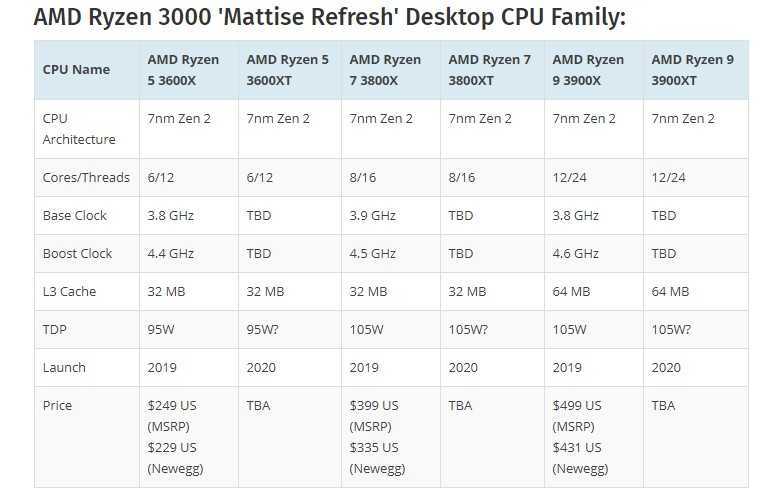 0 x16
0 x16 0 x16
0 x16